Why this site
Why this site
Ottavio Sbragia (June 2021)
Questo sito Ŕ un tardivo omaggio all'opera di Esmeralda Ruspoli, mia madre.
L'idea Ŕ maturata negli ultimi anni quando ho iniziato a guardare
le opere che conservo nel mio appartamento attraverso gli occhi dei numerosi ospiti di mia moglie, totalmente estranei al mondo di mia madre, persone
di etÓ e professioni differenti, provenienti dai cinque continenti, che ne rimanevano sorpresi e affascinati. Le osservazioni, la sincera curiositÓ
e ammirazione di queste persone hanno rivoluzionato il mio sguardo nei confronti del suo lavoro.
Ho sempre guardato, infatti, quei collages non
come opere d'arte ma come l'espressione di un aspetto della sua personalitÓ: un mondo misterioso un po' folle e allo stesso tempo imperscrutabile tradotto
in oggetti; certo decorativi ma anche spesso inquietanti o provocatori.
Questo sguardo "intimo" alla sua opera Ŕ probabilmente stato suggerito
dallo stesso atteggiamento che lei aveva in famiglia. Malgrado il Collage sia stato il fil rouge della sua vita non Ŕ mai stato presentato a noi figli
come una professione che trovava conferma in un corrispettivo valore economico vista anche la totale assenza in lei di una capacitÓ manageriale e mercantile.
Devo ricordare, inoltre, negli anni della mia infanzia che quanto percepivo del filone dominante nel mondo dell'arte figurativa risultava costituito
dall'astrattismo al di fuori del quale non vi era espressione artistica possibile e credibile.
Tutto ci˛, sommato alla nostra abitudine di vedere
nascere continuamente dalle sue forbici incredibili collages, ha fatto sý che siano sempre state guardati, apprezzati ed amati pi¨ come my mother's stuff
che come opere d'arte.

1958, Rome, with my brother

1972, Rome
L'immagine che conservo di lei al lavoro Ŕ immutabile nel corso della sua vita: seduta su un vecchio seggiolone di vimini
per bambini (sempre lo stesso, uno dei nostri) in modo di essere ad una altezza adatta allo scopo, china sul collage in lavorazione con l'immancabile paio di
forbici fra le dita (sempre le stesse che le erano state regalate dall'ostetrica che l'aveva assistita in uno dei suoi parti), intorno una gran confusione di
riviste, libri d'arte, stampe alcune ritagliate altre integre in mezzo alla quale pescava con preciso intuito la pagina contenente l'immagine desiderata.
Nell'aria un piacevole profumo di colla, il bianco Vinavil, che a me piaceva tantissimo.
Mia madre, maneggiava le forbici con perizia e velocitÓ chiacchierando
piacevolmente con chi la andava a trovare come facevano le donne della generazione precedente mentre lavoravano a maglia. A questa ambientazione intima riconducono
nei miei ricordi di bambino e poi di giovane uomo il processo creativo di my mother's stuff.
A trenta anni dalla morte ho iniziato, grazie ai miei ospiti,
a guardare i lavori di mia madre come "opere" che penso oggi trovino, in un mondo dell'arte pi¨ variegato, una loro collocazione storico artistica.
Auguro dunque al visitatore di questo sito di gioire il suo viaggio nel mondo straordinario di Esmeralda.
Ottavio Sbragia (June 2021) 
This website is a belated homage to the work of Esmeralda Ruspoli, my mother.
The idea developed in recent years when I started to look at the works that I own in my apartment through the eyes of the many guests of my wife,
people who were totally extraneous to my mother's world, of different ages and professions, coming from five continents, people who were surprised
and fascinated. Their observations, sincere curiosity and admiration have revolutionised the way I have been looking at her work.
I have always looked at those collages, in fact, not as works of art but as the expression of an aspect of her personality; a mysterious world,
a little crazy and at the same time inscrutable, translated into objects; certainly decorative but also often disquieting or provocative.
This 'intimate' look at her work was probably suggested by the same attitude she had in the family. Notwithstanding the fact that Collage
has been the fil rouge of her life, it was never presented to us children as a profession that found confirmation in a corresponding economic
value given also her total lack of any managerial or business know-how.
I do remember, however, that during my childhood what I perceived as the dominant thread in the world of figurative art was that of abstract
expressionism; apart from that no other artistic expression was possible or credible.
The result of all this, in addition to our habit of seeing incredible collages continually emerge from her scissors, is that they have always
been observed, appreciated and loved more as my mother's stuff than as works of art.

1958, Rome, with my brother

1972, Rome
The image that I have of her working during her lifetime has remained unchanged: seated on an old wicker child's chair (always the same one,
one of ours) in order to be at the right height, bent over the collage she was working on with the ever-present scissors in her fingers (always
the same ones given to her by the obstetric who had assisted at one of her births), around her a great confusion of magazines, art books, prints -
some cut up, others whole, in the middle of which she would fish out with perfect intuition the page containing the desired image.
The pleasant aroma of paste in the air, that white Vinavil that I liked so much.
My mother handled the scissors with skill and speed, chatting amicably with whomever came to see her as women of the preceding generation had done
when they were knitting. My memories as a child and as a young man return to this intimate atmosphere: the creative process of my mother's stuff.
Thirty years after her death I began, thanks to my guests, to look at my mother's work as "works" which today, I think, would find their
historic artistic place in a more variegated world of art.
My wish therefore for the visitor to this site is to enjoy this journey into the extraordinary world of Esmeralda.
Biography
Biography
For the biography of the early years of her life, it is better to listen to Esmeralda's own words:
[ full text in Vogue Decoration, December 1986, see
"Critiques" in this site ]
My name is Esmeralda Ruspoli. I was born in Rome on 24 June 1928 on the third floor of what once was Palazzo Volpi on Via Quattro Fontane, at
six o'clock in the morning, the daughter of Marina Volpi
and Carlo Maurizio Ruspoli. Carlo Maurizio in honour of
Talleyrand, the famous ancestor
of a paternal grandmother. My early childhood was spent with an English nurse, servants, chauffeurs and automobiles in townhouses, country homes
and villas in the desert like any other child belonging to a privileged class of the world. Perhaps that was when my vocation for collage was born.
When I was ill for a long time in bed because of influenza or the measles, I remember that someone brought me some soft material made of flour and
water. I don't think that I thought I was making works of art then, but I can still feel the soft quality of that substance. That was also the sensation
of the feathers that my mother's maid used to fill the cushions, and in the kitchen, the rice that I took out of a box and let run through my fingers!
Touch. The apprenticeship of my hands evolved with a respectful lightness, almost a caress, letting me discover objects simply by touching them.
Animals, materials, hair, flower petals, skin, water. A dreamer since childhood, images have always had a rather mysterious life in my soul and
I encounter them in the faces of others. A person in a painting, a tree in a photograph, an animal in an engraving, a landscape behind a painted
Madonna, architecture, automobiles, colours: in fact in everything that is printed on paper, I find fragments of a dream that belongs to me.
I learned to look for them, to cut them out, to assemble them and paste them onto a variety of supports. When I work, I use my hands for pasting,
but also to make the paste, and then I place the pieces of paper together in order to obtain a homogeneous result.
My life? Elementary school at the Villa Maser of
Andrea Palladio where I lived with my mother, and the paper dolls' houses made in an exercise book.

1935ca, Villa di Maser
Easter vacation at Tripoli in the enchanted garden of my maternal grandmother watching nature which told me marvellous stories. The summer at
Venice where in every corner of Palazzo San Beneto, I would encounter the fairies of my imagination in the penumbra of the salons; and where
my monkey played amid plants and climbed the courtyard walls, amusing itself by chasing the doves. Later, secondary school at a lycÚe in Rome
with rather insufficient results [...],
After starting lycÚe in Rome, towards the end of the Second World War she was sent to a private school at Lausanne. She did not receive a regular academic education
regarding the figurative arts. For a while she studied with Andrea (Mimmo) Spadini and, thanks to family contacts, met many artists among whom Titina Rota, Fabrizio Clerici,
Lila De Nobili, Leonor Fini, Luigi Tito . In Milan, she started to take a nursing course, probably following the usual path
destined for the daughters of Italian high society, until she finally managed to convince her mother to let her enrol in the Academy of Dramatic Art in Rome in order
to pursue her other great passion: acting.

Fabrizio Clerici, 1950

Fabrizio Clerici, 1943
There, she met Giancarlo Sbragia. They married and had three children.
The early years of her marriage were occupied principally with her family and the collages. She took painting lessons from
Fabrizio Clerici, and then in 1959 returned to acting, interpreting the role of Patrizia in Michelangelo Antonioni's film L'Avventura. Parts in other films followed,
along with work in television films and theatrical companies.(IMDb)
In 1975, she decided to stop acting and to dedicate herself totally to the collages, an activity she had never really abandoned.
The last ten years of her life were divided equally between Venice and Panarea, the Aeolian island where Antonioni's film had been made in 1959 and where she had bought the land on which she
had built her home.
During this time she made innumerable works until the last day of her life.
She died suddenly when she was sixty of a cerebral aneurism.
She is buried at Panarea.
Exhibitions
Exhibitions
PERSONAL
1956 Galleria Lo Zodiaco, Roma
1957 Galleria Sagittarius, Roma
1959 Galleria l'Ariete, Milano
1965 Galleria Old Silver, Roma
1966 Galleria l'Elefante, Venezia
1967 Galleria Barozzi, Venezia
1973 Studio P.L., Milano
1973 Jansen, Parigi
1974 Studio Modern Art, Milano
1978 Adams Davidson Galleries, Washington
1978 Nardin Galleries
1980 Marisa del Re Gallery, New York
1980 Galeria Siglo XX, Buenos Aires
1982 Marisa del Re Gallery, New York
1984 Galleria Oro del Tempo, Roma
1984 La Goccia, Torino
1985 Ostium, Cagliari
1986 La Soglia, Venezia
COLLECTIVE
1966 Galleria Flaccovio, Palermo
1966 Galleria Il Carpine, Roma
1978 Nordin Gallery, New York
1985 Ai Privati Granai Solferino, Milano
[...see dÚpliants ]
[ hide dÚpliants]

 1957 Galleria Sagittarius, Rome
1957 Galleria Sagittarius, Rome

 1959 Galleria l'Ariete, Milan
1959 Galleria l'Ariete, Milan
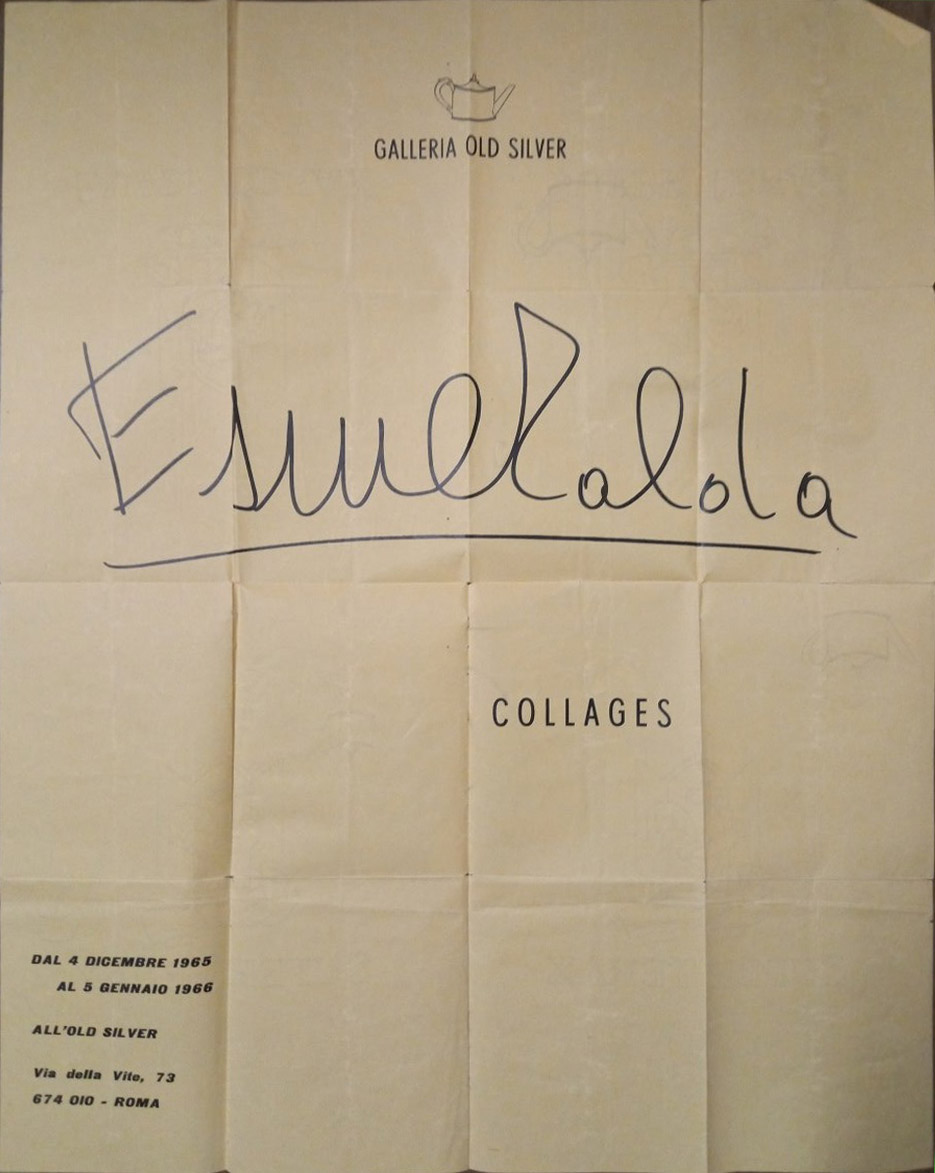 1965 Galleria Old Silver, Rome
1965 Galleria Old Silver, Rome
 1966 Galleria Flaccovio, Palermo
1966 Galleria Flaccovio, Palermo
 1966 Galleria l'Elefante, Venice
1966 Galleria l'Elefante, Venice
 1967 Galleria Barozzi, Venice
1967 Galleria Barozzi, Venice

 1973 Jansen, Parigi
1973 Jansen, Parigi

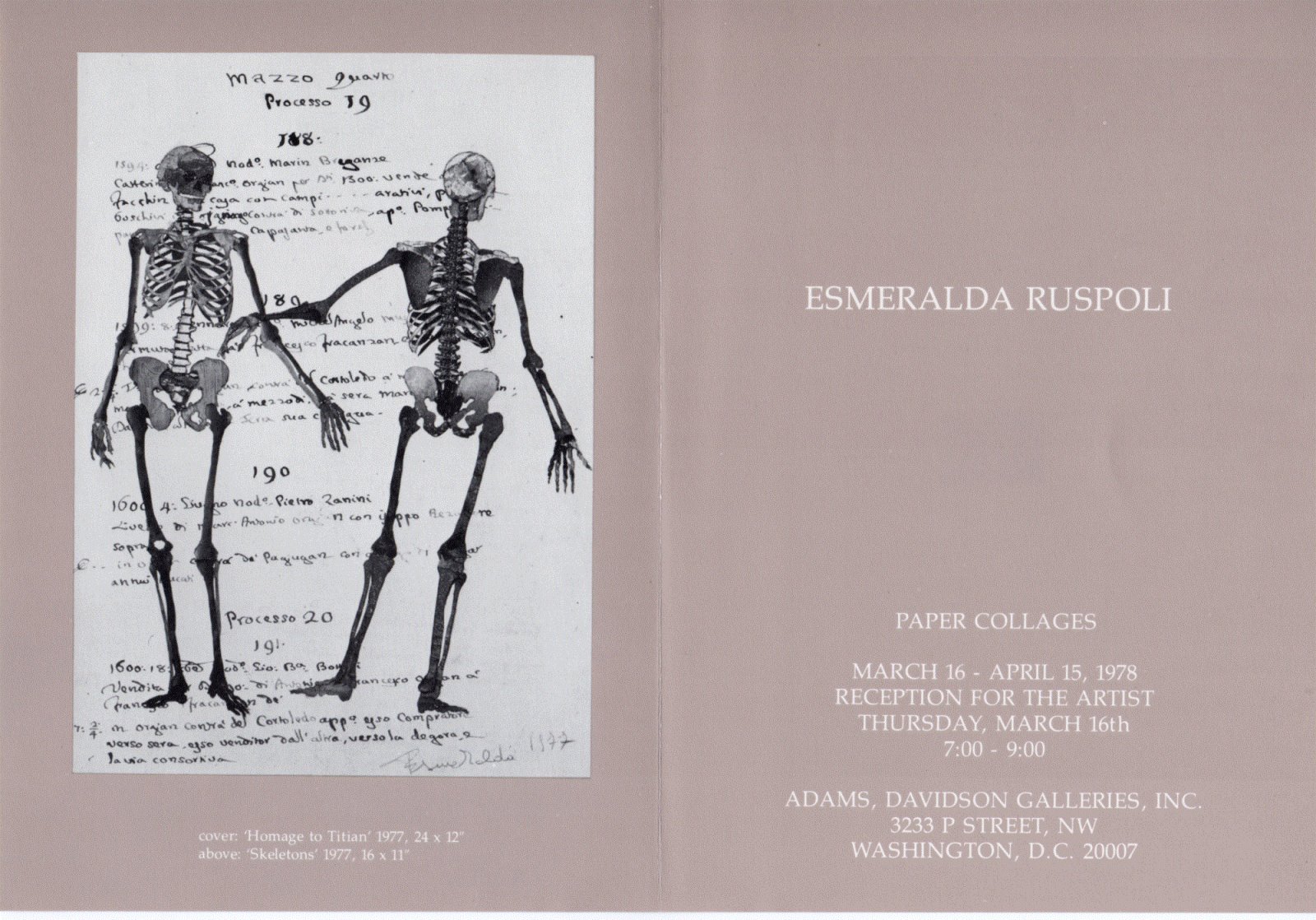 1978 Adams Davidson Galleries, Washington
1978 Adams Davidson Galleries, Washington

 1980 Galeria Siglo XX, Buenos Aires
1980 Galeria Siglo XX, Buenos Aires

 1980 Marisa del Re Gallery, New York
1980 Marisa del Re Gallery, New York
 1984 Galleria Oro del Tempo, Rome
1984 Galleria Oro del Tempo, Rome
 1985 H Ostium, Cagliari
1985 H Ostium, Cagliari
 1986 La Soglia, Venice
1986 La Soglia, Venice
[ hide dÚpliants ]
"Why do I make collages?"
"Why do I make collages?"
(Esmeralda Ruspoli, 1982)
Children are always fascinated by scissors and by the magical falling of bits of paper which they cut without thinking.
Lonely children often insist upon attention, and grown-ups,
not always patient, find scissors and paper to be a good and harmless way of keeping them quiet I was a shy child: adults always seemed aggressive, and other children small copies of adults.
So, for me, happiness was found in solitude: in a corner in the garden of Maser, contemplating the palm trees moving softly in the air and the birds flying high in the Sky on the patio, watching
the bats that nested on top of the columns or the jekos hunting nightflies on the wall on the large terrace in Rome, peeping at the bees in the climbing roses or gazing at the swallows shrieking
as they passed. It was to be found in Farfa, an ancient abbey near Rome, hidden in the undergrowth observing the life of a country mouse, or down near the brook with nothing around but grass, olive trees,
pebbles, my dog, cat and monkey. The fairies showed me enchanted castles in a drop of water, the elves led me through a hole in an old tree stump to underground gardens where flowers walked around and chattered.
I soon found out how to cut around images and put them together so as to pin down my fantasies. It was a marvelous way of concretising the fleeting images that were awakening in me. This is how it
all began: cutting out my dreams.
"The physical reality is that my body exists only in relation to this universe and in fact I am as attached to it and dependent on it as a leaf on a tree.
The universe is a unity my body and the world form a single process." (A. Watts).
As a baby in my pram, under a tunnel of hornbeam, this was absolutely clear to me as my eyes learned to see the sky through the branches above.
As I grew to be a child it became less clear but, when looking at a beetle on a stalk, an ant carrying something so much bigger than itself, or a butterfly or a bee going from one flower to another, I was fulfilled.
Later, as an adult woman, daily life took the place of everything, and I forgot completely my relation to the universe. When this became clear to me, I began to consider collages as serious work.
I was learning to glue
my dreams together with a certain order, to contain them in comprehensible constructions. Sometimes I knew exactly what it was I wanted to create, although I never knew with which images I would fulfil my ideas.
At other times, everything began with the casual finding of an image which would break loose that magic chain of selections whereby pieces seemed to group together by themselves.
My urgent need to glue together
pieces of paper had no real purpose - it just came out like a photograph from a Polaroid camera.
It was what was inside of me, but I was uncertain as to what I was trying to say. People often found it frightening,
but for me this process was always a happy one.
Then, in Sicily, I spent a whole night watching the opening and dying of a cactus flower. When the cicadas stopped singing and the world was completely motionless,
waiting for the day to take the place of night, the petals began to open. The crickets exploded. A light perfume wafted in the air as the green enclosure opened, displaying an enormous number of thin white petals
similar to the light feathers on the head of a crowned crane, and these petals swayed light a sea anemone. The full moon rose as red as a watermelon, slowly lighting the sky as bright as a floodlight. Hundreds of small
flying insects with transparent wings arrived out of nowhere and began entering the flower that by now vibrated very visibly. The perfume was stunning, and the beauty unutterable. By the time the first bird sang at dawn,
all life had disappeared and only a sad yellowish bunch of flopping petals dangled.
I had lived through it all unconscious of myself.
The flower and I were the same thing - my body and the world had formed a single processo.
This is the exciting revelation I want to put in my collages.
The happy amazement I feel in knowing that the linking together of everything is a marvellously tidy chaos, where images express themselves violently but are at the
same time sweet the sweetness consisting for me in the marvel of belonging to this "knowledge/mystery" that renews itself continually. Everything I see and touch has been something else, will in due time become something else
-so why not a duck of seaweed, a mountain of people, a bird of tuna fish and soldiers? That is why I glue my sensations in a happy confusion, very elaborately put together so as to appear to be a defined figure hiding in its
heterogeneous essence- picking the images that are bombarded on us incessantly, especially photographs, that explore every existing thing, from a dying soldier to the egg of a flea.
Why do I work with pre-existing images instead
of painting them myself?
Images that arrive on me unlooked-for originate something completely different from what they represent bringing forth series of new fantasies that no imagination, however wild, could ever put together by itself.
I painted or drew my images, I would only be putting down my fantasies, whereas when I take images for what they are and alter them so as to make them become something else, it brings them to mean innumerable things and to be other than they seem.
What I mean, said in rather a blunt way, is this: everything is everything.
Critiques
Critiques
SainJust
NovitÓ - Rivista di Decorazione, June 1955
An Invitation to Fantasy
[read the article]
[hide the article]
That collage, like all other fashions that have been popular, is subject to fantasy is not something new. It might
even be said that this fashion is one that is constantly born a new since it is bound to the personality of its creator.
Thus, it can be viewed each time with new eyes for it matters not if it is discovered in the pages of an album as
I recently found in a 'gallery of friendships' where every page dedicated to a person displays an imaginative montage
of photographs and clippings underlining aspirations and character with humour. Or whether, as in this case, the intent
is to resolve some problem of interior decoration. Entire panels, doors or screens, even tables and trays and boxes are
periodically subject to this vogue and I believe that when someone endowed with fantasy tries to work with scissors and
paste then nothing is salvageable: books, prints, magazines, postcards, everything is lumped together. The pictures that
Titina De Filippo created with scissors instead of a paintbrush come to mind, as do the figures of shells cut from old
prints that TitinaRota, who lived at Capri and was surrounded by seascapes, composed into pictures of amusing surrealism.
But most of all I think of how Esmeralda spends her time: a cat on her knees, a baby in the cradle and another sitting
at her feet, surrounded by papers that her scissors devour recreating unexpected compositions. It must be a little like
watching the clouds pass by. The only difference being that these cut out images can then be arranged according to a whim
of the moment, therefore becoming the witnesses of a capricious fantasy: a dream that remains in reality.
[hide the article]
Dino Buzzati
La Fiera letteraria, 10 February 1957
Secret and Fantastic Voices In The Bizarre World Of Furnishings
[read the article]
[hide the article]
Pick up a dictionary. Inside are all the words of the language: the prime material for millions of works of art. One need only
choose well. Not many are needed. Two or three hundred suffice for a poem that will remain for centuries and centuries and continue
to break hearts even in three thousand years. It is only a matter of knowing how to take words, articles, prepositions, nouns and
verbs and arrange them in such a way that still remains mysterious to most of us. But this is nothing. From the time of times, since
the first dynasties of the Pharaohs, it was understood that words could have an occult power, much more tremendous than the greatest
poetry. Words? Probably even less: sounds, voices without meanings. It was a matter of finding the right combination, after that nothing
would be impossible. It would be possible to unleash rainstorms, make deserts flower, cause princely palaces to rise up from nothing.
The very ancient concept of the Word creator is here. Six or seven words pronounced aloud. But what words. Only God knew how to put them
together; and with the force of these words he made the entire Universe emerge from nothing. Man has always felt nostalgia for this
demiurgic power, made of nothing one could say. And he has fantasized in tales about secret formulas capable of unlocking mountains.
In ancient times, when people were more ingenuous and optimistic, they laboured in their research: the formula for healing illness,
for expelling malign spirits, for warding off wild beasts and storms.
The results were always poor. With the passing of centuries, discouragement took over and the magicians closed their shops. The only
ones who continued to resist in this fascinating effort were the Poets. And some, in truth, only a few, by lining up certain words one
after another, did manage, while not to break rocks and make fish sing, to produce a first rudimentary degree of enchantment: not knowing
how to master the material, they were content with the spirit. They could not bring down walls with their verses, however, they did make
their fellow creatures weep, and this already was a great result. But it may be that one day out of the mouth of a child, for example,
there may come a succession of syllables corresponding to the arcane laws of creation, and that a latent energy will be released in prodigious
manifestations; so that a river reverses its flow and moves up the mountain or cellos play on their own. This, as far as words are concerned.
But something similar is also certainly possible by means of images. It seems quite probable that the placement of certain figures side by
side might determine abnormal phenomena: that a drawing or a painting, apart from the banal satisfaction of the senses of the soul, might
reach a magical intensity. What figures? This has always been the secret torment of artists. Apart from so-called pictorial values, a painting
might assume an extraordinary force given the ingenious combination of the objects depicted. Surrealism has, basically, aimed in this direction.
Except in the vast majority of cases, surrealism does not succeed and its eccentricities may appear arbitrary and fastidious. Only in certain rare
paintings of some very rare artists does the system work; and from the association of figures, objects and landscapes a particle emerges of the
ultimate profound truth lying within things that we cannot even imagine. In simpler terms: the wonder, anxiety, excitement of fantasy, the fear
or that emotion which is difficult to describe, commonly referred to as a sense of mystery.
Esmeralda Sbragia Ruspoli was not thinking about this association of figures the first time she cut out human bodies, beasts, architectural
pieces, statues and skeletons from old prints and placed them alongside one another, much like a child might do to see what it would look like.
It was simply a game. She herself would laugh were anyone to try to find any significance or, even worse, esoteric intentions. But there is no
doubt that, perhaps unconsciously, she expected that out of the daring of those mosaic labyrinths something marvellous might come forth. As when one,
without knowing anything about chemistry, enters a laboratory and pours two or three drops into an ampoule from a bottle picked up by chance and out
of this concoction appears a genie and treasures that could make him master of the world.
The genie of the cave has not yet emerged from the collages of Esmeralda; however, the result is singular. Her instinctive taste, bizarre fantasy,
certain vague heraldic and geographic reminiscences, a spirit of the paradoxical, of the absurd, and even of irreverence produce tasteful peculiarities
and objects of great decorative quality, both refined and slightly decadent (distantly reminiscent of ruins, landslides, earthquakes, nightmares, Bosch and
Arcimboldo, spiritualistic contributions and organic decompositions). With the passage of time, the game has become more precious and elegant; it has
become simplified and more complicated at the same time. No longer surfaces that are entirely covered with images but fantastic constructions or improbable
personages constructed with the most heterogeneous and craziest materials: a leg made with three overlapping ladies of the nineteenth century, six tibia bones,
a parrot, a pistol and a cardinal: an arm made of a Greek vase, half horse, a serpent boa, a Moluccan cockatoo, a slave, a lunar landscape and six human legs,
a head made of a great decapitated vizier, a couple in Empire style and other undecipherable ingredients. Are they human creatures, spectres, dragons,
anatomical charts, legends, hieroglyphs or bewitched cadastral maps?
Esmeralda began many years ago decorating a door of the famous Villa Maser with cutouts from illustrated newspapers and prints. Then, screens and cupboards.
Until, one rainy day, the thought occurred to her to create a personage made of the strangest of things. A personage who was the founder of an entire generation
of amiable monsters.
"The thought has never occurred to me to dedicate myself to painting in the future, " says Esmeralda Sbragia, "I am not some hidden genius of the paintbrush,
I'll continue to make collages if they are liked, and if they are not, I'll make them for myself, on my cupboards, on my doors".
Lastly, a warning: if the genie of the cavern (and of treasures) has not yet come forth from Esmeralda's fantasies, this does not mean that her iconographic
rÚveries are lacking, albeit to a minor degree, their own secrets.
For example - and this we do know - there is a lightning rod that she decorated which on certain evenings - especially in the months of September and October
- emits faint but sweet sounds; a decorated storied casket (in the literal sense of the word) the sight of which calms headaches; and a huge wooden tray
(perhaps the most interesting object) whose figures - for the most part, shells, small rodents and field flowers - when exposed to the light of the second
quarter moon, move alone as if they were alive, as long, logically, as there is total silence.
[hide the article]
Giornale d'Italia, 3 February 1957
Four Painters and the Collages of Esmeralda
[read the article]
[hide the article]
At the Sagittarius Gallery Esmeralda Sbragia Ruspoli is showing a series of original baroque collages that emerge from the elegant d
ecorative quality this type of minor art usually tends towards and reach the threshold of so-called surrealism. The intelligent and
accomplished Esmeralda does not intervene with a single pencil or brushstroke of colour in the execution of these works of hers, which
she creates by cutting the most disparate images from old magazines, illustrated volumes, prints, anatomical, zoological, and botanical
tables, art books, etc. and then pastes into complex figurative aggregates, thereby creating new and bigger fantastic images.
In these "collages'' - which seen from a certain distance are somewhat reminiscent of sixteenth-century trappings as well as
certain Chinese panels - Esmeralda Sbragia reveals - in addition to a singular ingenuity and an uncommon fantasy - distinct pictorial
qualities traceable both in the form of the image, harmony of colour and in the tones and volumes that she manages to achieve by matching
and combining thousands of pieces.
In our opinion, the best of this exhibition (keeping in mind, however, that they all require frames as well as additional space around them)
are "The Defeated Hero", "The Rooster", "Giraffe in the Sun", "Woman with Green Hair" and the "Mirror".
[hide the article]
Orio Vergani
Corriere dell'informazione, 9 October 1958
The Collages of Esmeralda: In the silent Parnassus of the Signora Ruspoli Sbragia Two Muses Preside: Scissors and Paste.
[read the article]
[hide the article]
At number 5 Via Sant'Andrea - an " old Milan" doorway - and it would not come as any surprise to see Tommaso Grossi or Rovani
step out or meet in the courtyard and a few steps away Ugo Foscolo lived - displayed on a handwritten card bearing a name that was dear
to Victor Hugo: Esmeralda. In the back of the courtyard are a couple of rooms: those of the Galleria dell'Ariete. A glass door separates
two worlds: one of the romantic Milan of 1858: our great-grandparents sighing over the romances of Lucrezia Borgia or Luisa
Miller - and that of the Milan of 1958, abstract, dodecaphonic, electronic, metaphysical.
The mother-of-pearl inlaid mandolin has been substituted by the unbreakable black long-playing record: the slow meticulous stitches of
crochet or bobbin lace by showy cretonnes: the 'gothic' armchairs dear to the noble Poldi Pezzoli by foam rubber armchairs coloured
tamarind pulp, robin redbreast and grapefruit rind. The floors are polished: barefoot maidens could dance there; the silence is soft: the
ticking of a wristwatch would ruin it. Scenes from a ballet, much more interesting that that of Sagan. Long-limbed women wearing flat shoes
enter, their eyes like Marie Laurencin, mouths like Gruau: their hair crowned by flowers. They enter and group in front of the paintings
exhibited on the walls. They are alive, these Anxious Muses of a metaphysical De Chirico who no longer needs to make statues with manikins
and instruments.
I said that they look at the paintings but in reality these are not paintings, they are collages: two unusual Muses preside in this silent
Parnassus: Scissors and Paste. Esmeralda - Esmeralda Ruspoli, wife of the actor Sbragia - does not pretend to have made a discovery. One
could have an amicable conversation about collages. In the eighteen-hundreds they were made with the pages of calligraphy albums, love letters
on pale blue paper, assignats of various revolutions, Flaxman prints. It is probable that they became popular again because of advertising
photomontages, which were, in vain, referred to as photo-mosaics. There was a return to prints, both coloured and not, extracts from eighteenth
century encyclopaedia, travel books, fashion journals. Collage is a humble art: it even makes use of inferior material like the figures of
magazine covers; it makes popular lithographs agree with those of zoology books: Venus and the Tapir, Diana and the Ornithorhynchus. Whereas
photomontage is the child of futurism, collage is the child of metaphysics: its oldest ancestor is Arcimboldo with his marquetry portraits of
carrots, onions, and plums: its closest inspiration comes from De Chirico. Cocteau, Max Ernst, Dadaism and Surrealism; the languor of oneiric
arte, encounters with Salvador Dali and with Tanguy, languid amalgams and eccentric dreams.
Esmeralda began to "paste" in her mother's villa of Maser in face-to-face contact with the frescoes of Paolo Veronese. She is not the
only Italian collagiste: one need only recall the Roman Lida Mastrocinque and the Milanese Titina Rota. She must have been surrounded
by masses of old prints like certain Neapolitan collectors who lived amid thousands of matchboxes using their nineteenth-century vignettes to
make lampshades, screens, fire-screens, and trays. Esmeralda also had precise applications in mind: she started by decorating the doors of the
house, then those of certain armoires, just for fun. That of collage is a gentle vice; a minor intoxication that becomes an addiction; a way to
wander silently, while remaining seated, scissors in hand.
Elegant taste, her hand a bizarre guide and her paste-brush. Hermeticism and surrealism by now are consanguineous. Technically, all the pieces
are admirable: her patience must be boundless.
Many are also functionally beautiful, like a cornice on a red background, a curtain with broad stripes and zoological motifs, and certain enamelled
trays. Others are purely decorative, their only function, like a beautiful "rooster", to open dreamlike paths onto a wall. It is understandable why
Dino Buzzati liked these pages and presents them with a very fine preface. That of collage is a kind of sect; whoever tries it once is never again
free, like smoking opium. When he was rehabilitating from the use of opium, Cocteau tried it by cutting up old anatomical charts instead of poisoning
himself. I am convinced Paolo Veronese would have no objections to the subtleties of tones created by these encounters of old prints in the villa of
Maser. And I think that choreographers and set designers entrusted with certain themes like The Sorcerer's Apprentice and La boutique
fantasque would have a great deal to learn from these motifs.
[hide the article]
V.G.
Il Tempo, 4 February 1957
Roman Exhibitions
[read the article]
[hide the article]
How many times have we written that Surrealism has made its way into high society, which has always loved the quirks (as literature, content),
the tradition and the beautiful and canonical manners (like a formal tradition)? Again, an example in the collages of Esmeralda Sbragia
Ruspoli at the "Sagittarius". Nothing better could be desired from such an Arcimbolesque genre. The "artist" creates a refined elegance; she
invents extravagant personages, figurines and masks of an impossible theatre. A fashionable fantasist, she has a sure hand; these cut out figures
of hers are composed with beautiful brio, their colours harmonising with exquisite taste. Fortunately hers is an ironical imagination, paradoxical
but not morbid. Salvatore Dalý with his complexes is not the direct inspiration of such admirable creatures. Panels therefore for a salon, a fashion
atelier; motifs for tasteful (and disturbing so to say) screens. Luxury craftsmanship.
[hide the article]
Lorenza Trucchi
La fiera letteraria, 18 February 1957
Sbragia Ruspoli at the Sagittarius Gallery
[read the article]
[hide the article]
The collages that Esmeralda Sbragia Ruspoli is showing at the Sagittarius Gallery are among the best and most accomplished
that can be admired in that field. Esmeralda has ransacked 'years' of old magazines and entire collections of ancient and precious
prints to create these singular compositions. In such cases, collage almost always results in a mundane surrealism that is more or less
perturbing or in an intellectualistic satire of facile effect. Esmeralda, instead, adopts heterogeneous material for pictorial use:
that is, she uses the most absurd and craziest images like the tiles of a mosaic that notwithstanding its inevitable, refined decorative
eccentricity is, however, constructed with a felicitous pictorial sense.
One sees how the variegated and imposing "Rooster"
composed of a hundred varied ingredients - women, soldiers, fish, shinbones, masks, arms - has a plastic and chromatic emphasis. No perverse
or faded witchcraft in these collages, executed with a meticulous technique and confident judgment; but, rather, a series of festive if not
light-hearted evasions that Esmeralda permits each one to participate in with the fantasy of a finite yet unconsumed childhood.
[hide the article]
Armando Stefani
La Nazione, 27 August I957
Pictures painted with scissors. The works of Esmeralda Sbragia of Rome are the latest figurative news of Rome. The godsend of used book sellers
[read the article]
[hide the article]
Rome,
The latest artistic news from Rome is neither a painter nor a sculptor. There are many ways to follow one's soul and the one currently being talked
about in the capital has to do with scissors. It has to do with collages: a particular kind of collage. The technique of composing a picture with cut-out
pieces of paper is not new; what is new is that it is not being used by an artist as a curious and artisanal sub-product; it is instead the central theme
and, for the moment, the only theme of inspiration.
We wish to talk about it precisely because these works, besides being aesthetically very significant, represent a key for understanding certain anxieties
of the time; they are indicative of some aspects of Italian society and have a worldly taste that for once is neither frivolous nor banal. I shall explain
what they are like. Imagine a drawing of a rather common subject: a woman, a flower or a house. One made up of countless cut outs from newspapers, prints,
figures, maps, book illustrations; in brief, all kinds of figures. The choice of these figures is an expressive counterpoint of the overall subject; a
counterpoint that is apparently only automatic and obligatory. Out of the vast ocean of printed papers, Esmeralda Sbragia Ruspoli fishes the allusive,
ironic, tragic, significant 'piece'. Her first exhibition, presented by Dino Buzzati, is of great interest.
It lies midway between a nineteenth-century world of distinct and definite opinions and customs and the more dangerous temptations of modern times. The
depictions of that society of the last century in which many today see a kind of lost paradise and in general the images of all epochs are decomposed,
atomized, dissected and then compartmentalized into a mosaic of hallucinating immobility and fragility in a kind of equilibrium that could break from
one moment to the next.
Now entering European and American collections, these collages display the cold analytical intelligence of upper-class society together with a despairing
and amazing nostalgia of the blood aristocracy and the surgical and somewhat mysterious penetration of today's culture. The author is all of these things:
granddaughter of the great financier Count Volpi, daughter of a Ruspoli (it is curious how often this name has been reappearing recently, from the heroism
of the brothers who died in Africa to the snobbism of Dado, the unscrupulousness of others, and lastly, now, this artist, the symbol of many contradictions),
wife of one of the leading actors of our time, who has just been seen in a brilliant interpretation of the complicated key figure of the posthumous drama
of O'Neill. In the Palladium villa frescoed by Veronese at Maser, Esmeralda one day found the only door that the Venetian painter, his disciples and the
others who had participated in the decoration of the building had left untouched. There she attached pieces of paper tastefully, perhaps to please her
mother who owned the building, and to leave some trace of her childish dreams. She has since become the boon of Roman used booksellers, and in a space
that her three children have left free for her in their apartment she destroys pages and pages with her scissors and a nail file, piling them up in big
boxes, and then taking out ones good for pasting onto a canvas: foxhunts rotate round the blank eye of a Greek statue, a series of porticos becomes a
female abdomen, the pages of a drawing manual are transformed into tresses ruffled by the wind.
[hide the article]
Albano Rossi
Palermo, 1966
Esmeralda Sbragia Ruspoli and Giorgio Princivalle
[read the article]
[hide the article]
Ten collages of Esmeralda Sbragia Ruspoli and ten paintings of Giorgio Princivalle are currently being shown by Fausto Flaccovio in his gallery.
On another occasion, I remember having indicated the historical excursus of the collage and other analogous techniques characterising mid-twentieth
century art. While it seems that Picasso was the first to start using pieces of cut-up paper (there are those who attribute this paternity to Braque)
in a painting, the history of collage had its beginning almost sixty years ago. The uniformity of colour was made the most of when it was a matter of
standard paper; however, when it had to do with wallpaper (which Severini also used freely), then its decorative motifs were exploited; and if the
choice instead fell on newspaper, then the variety and rhythmic repetition of the typographical characters were utilised. After that a succession of
new materials were introduced into paintings: from cloth tatters, tree bark, glass shards, etc. up to the rubbish of Man Ray, the tram tickets, stamps,
and playing cards of Kurt Schwitters, the sacks of our Burri, the butterfly wings of Dubuffet and the scrap heaps of CÚsar.
Works of art or documents of moral anxiety? It is a dilemma with a difficult solution: and there have been accusations of cheating.
Matisse, during his last years of activity, came up with a variation using copy paper and applying it onto huge canvases: his famous "decoupages" of
indisputable greatness.
The "papiers collÚ" of Esmeralda Sbragia-Ruspoli follow a procedure that, as has been seen, is not brief. They are composed of cuttings of
illustrations taken from magazines, charts of comparative anatomy and histories of art, etc. She is showing some ten of these here, and I don't know
who has more fun: the artist who created them or the observer who looks at them.
Scissors in the hands of Sbragia-Ruspoli become a natural continuation of her fingers. The outlines of the objects, personages, anatomical pieces,
vegetables, etc. combine to form, as in marquetry, surreal images that hover between myth, satire and the grotesque.
We find ourselves in the reign of ambiguity: as did certain fanciful sixteenth and seventeenth century mannerists who come to mind. The cloth trees
in the landscapes of the Danube School, the wrinkled faces of curled up paper or those of soft wax of Marinus, the clay faces of Morales, the nudes
of white wax of the School of Fontainebleau, the dead city of Mons¨ Desiderio, the chiffon bodies of El Greco or the wooden ones of La Tour as well
as the distortions of Schoen, Momper or, even more, the creations of our Arcimboldo: in particular his "Trojan Horse", where the warriors who
should remain hidden inside give shape to its exterior form (in the same spirit, a student of his painted a portrait of Herod made with the bodies of
the innocent babes).
In the collages of Sbragia-Ruspoli double meaning and ambiguity are pushed towards the enigma. And at the very moment of surprise, one realises that
not even irony suffices to reveal all the transformations [.].
[hide the article]
Vittorio Sgarbi
Catalogo Esmeralda, 1984
Esmeralda's Scissors
[read the article]
[hide the article]
The world runs on two parallels for Esmeralda Ruspoli. On one are everyday objects, chairs, tables, plates, knick-knacks; on the other,
the same things merged into the fanciful and memory filled vision of Esmeralda's past. Just seeing her is to note a sign of distinction
that makes her stand out from all those around her: the beautiful face crowned by a precocious white mane like the feathers of a rare
animal, the style of clothes that are always rather unusual and extravagant, the dreamy look, the tiny dogs. And all without artifice,
as if she too belonged to a parallel world that shares only a few events with our own. But her vision also wishes to be active and not
simply an unexpressed personal event. And so Esmeralda has created her own personal laboratory in a small room transforming objects, or
better yet, their surfaces. They sit timidly, undefended, undressed, as they are in nature. She attends them patiently with the slightly
mad, slightly perverse look of one who is preparing "a party" for them. Devious, then, because she has in the meantime prearranged this
encounter with huge scissors in order to cut up newspapers, magazines and books where some beautiful images have attracted her eye. And
so leaving the page and entering her hands are the gondoliers and chimneys of Carpaccio, the masks of Pietro Longhi, the street markets
of Canaletto, the landscapes of Tiepolo, the greyhounds of Veronese, the forests of Paolo Uccello, together with the faces of people,
marvellous photographs of nature, of birds, of trees, of animals. Some of these cutouts will be saved while others wait to be transfigured
by an acid that decomposes their molecular structure, dissolving the contours and creating an amorphous spray or marbleised effect, a
mÚlange of superimposed colours. At this point, the objects enter the scene to become, we might say, 'esmeraldised'. These cut
outs and papers treated chemically are then pasted onto the piece of furniture, the table, the sphere, the obelisk, the tray: they become
supports already endowed with a form and function for the compositions of Esmeralda. We could commonly define them as collages; instead
they are instruments of adaptation and re-appropriation of the world. It is too simple to make a picture; above all it's not comprehensive
enough. Esmeralda projects her vision onto all things; she wants to see them as she feels them. She does not accept the material as it is
offered. She wants to correct the creation of the form. It is a matter of a procedure of homologation, indifferent to the variety of things
and totally inclined towards their unity.
And in this parallel world, it does not come from her intervention on things but rather from their original form, so that a plate remains
a plate and a sphere a sphere, in the majority of cases without even departing from their function which is the reason for their diversity.
We might therefore call Esmeralda a decorator, were it not for her vision which touches the limits of obsession and is indifferent to
discernment: I am certain that were she able, she would extend her method and desire appropriating all objects even architecture. She would
'esmeraldize' the Palazzo Chiericati of Palladium or the Church of the Redentore and maybe even the villa of Maser. She would probably
be satisfied with the already capricious and bejewelled Basilica of San Marco, while she would find the fašade of San Petronio in Bologna
culpably unfinished. These interventions of hers have nothing to do with capriciousness; they are quite methodical and rigorous, and I believe
that the intention is to represent the superimposition and summation of images of reality with the historical and personal memories that inevitably
crowd her mind, as they do our own. A sort of filter that makes us associate what we see with a prototype or reminiscence from the past. Esmeralda
registers these apparitions and superimpositions. While she looks at rooftops and the lagoon from her Venetian home, she immediately evokes the
canvases of Carpaccio, this vision blending with the first into an indistinct magma of forms and colours. This then is how the disintegration of
images is created with a coagulating effect, like a paste that holds the form of the object together and binds it to its new composite surface.
This vision is both baroque and decadent, two words once unfavourable and today re-evaluated, but we feel need of them like an avowed instinct,
not a pastime. Perhaps it has to do with an escape or a refuge, an obstinacy in not recognising the purity of the forms. It may be that in her
dream Esmeralda wishes to give substance to appearances.
[hide the article]
Carlo Montanaro
Nuova Venezia, 28 May 1986
Esmeralda Ruspoli shows her 'collages' but the cinema is still her first love
[read the article]
[hide the article]
Friends no longer even notice, but a stranger, on watching her assemble a źcollage╗, is overcome with curiosity,
because in order to see how it will look vertically after she has placed cut-out pieces of paper onto a base lying on top
of a table, and then blocked it with glass, Esmeralda Ruspoli climbs onto a chair to check. And only when it works, does
she block it all with paste and then finishes it off with varnish.
Starting Saturday her creations (she likes to call it 'arte povera') will be on view until June 5th in a newly opened
cultural space in Venice, the bookstore 'La Soglia' at the bridge of Donna Onesta (we hope it also becomes a place where
people just go to sit and talk) near the Frari.
Not only 'paintings' but objects as well: a seventeen-hundreds' style piece of furniture ("an old idea of mine: it's
re-covered not lacquered" confirming the concept of arte povera), spheres, masks, boxes, but also, for the first
time, re-elaborations on the typical Venetian 'gold background".
Esmeralda Ruspoli, Roman by birth, is also very Venetian. And it was from her grandmother Volpi that she inherited a taste
for painting (but, as was done in those days, she had stopped when she married) and then, it is not known how, she found in
her hand a pair of scissors. When she was seventeen at Maser, her first collage, a door that, albeit not well conserved, still
exists. Then a long pause for the second great love of her life: acting. Which also brought with it a husband (Giancarlo Sbragia,
pride of the Academy of Dramatic Art!), three children (all in the world of spectacle: Mattia actor-author-director, Viola
publicist and Ottavio musician), and at least fifteen years of an honourable career: "They thought I was doing it so as not
to get bored, instead I was a serious professional. In fact, my real career began after my separation from Sbragia. The name
certainly did not help me: while, for my relatives it was unsuitable that a Ruspoli tread the boards of a stage, for others in
that world I was instead stealing bread from others simply for the fun of it. But I loved my work. And seeing myself today in
some films that were made then ("L'Avventura" of Michelangelo Antonioni, the first film in her opinion that took her
completely by surprise; later Zeffirelli's "Romeo e Giulietta", and a few others), I must honestly admit that I could
act in films, I was good. However, that something extra never clicked, I kept on playing small parts, guest appearances: in one
word, hookers!"
Pleasant, open, self-assured though apparently timid, Esmeralda recounts the events of her artistic career simply and the magic
moment that everyone should have which is yet to arrive for her: "It may well be written that I shall become important playing
the parts of elderly people, old ladies".
Bu she confesses that she'll return to the stage only if her son Mattia asks her to, because such a long time has passed, and because
acting technique.because.because today she much more prefers to do collage. In life, one knows, there do exist courses and recourses.
Esmeralda (the pseudonym appears only with a meticulous construction of her artistic career), for some time now prefers to agree to
the verification at home in Venice. And everything works, honestly: to see is to believe.
[hide the article]
Giuseppina Rocca
Messaggero, 22 giugno 1984
The Importance of Being Esmeralda. When art is identified with a name
[read the article]
[hide the article]
Open-armed as for the prodigal son. So on Wednesday afternoon, Esmeralda Ruspoli reappeared after many years to
present her one-man show of collages and painted objects at the Oro del Tempo Gallery in Via della Gatta. This
Roman for generations - surrounded by friends from the world of show business and culture along with the usual
crowd of society hangers-on - first began this art when she was very young at her mother's villa of Maser.
"It's strange to see so many friends again all together. I haven't seen many for at least thirty years",
said the princess, the separated wife of Giancarlo Sbragia, who is present with their children at the vernissage,
and who, born in Via del Quirinale, now lives between Venice and Panarea. "I abandoned Rome because something happened
inside me. I have no regrets, I am happy to have done it, I wouldn't go back. "
Gentle and smiling, Esmeralda Ruspoli, plunges for a moment into a vortex of memories.
But it is not a day for nostalgia, it is simply a lovely party and she goes on. Fluttering in her long pale caftan and
wearing an ancient Arab necklace of the family, she greets everyone, shaking hands. Present are Dante Troisi, finalist
for the Viareggio Prize, Giuliano Montaldo, Alice di Robilant, Lorella De Luca and Duccio Tessari, Paolo and Beatrice
Marconi, the Sursocks, Guidarino Guidi, Milena Milani who remembers very well the beautiful eighteen-year-old at Venice
'with a head of fluffy precociously white hair'. Esmeralda, a beautiful name, how much has it influenced your life? "
It is everything. With another name I would have become another person". She answers unhesitatingly, instinctively.
Her gaze fixes on her creations, naturally 'esmeraldized'.
[hide the article]
Arianna
CIGA Magazine, May 1984
The Collages of Esmeralda
[read the article]
[hide the article]
On one of the tiny Aeolian Islands, in October and November, Esmeralda courts silence and solitude. She sits on an odd
little cane seat which hangs on the patio of the house, swinging gently in the breeze amongst the bouganvilleas and roses.
For hours she sits gazing silently at the Sicilian sea. At Panarea they all know her, but not as "Princess Esmeralda".
Here she is "Esmeralda", the beautiful woman with the prematurely white hair, the one who wears long, rather strange
dresses, whose head flings back when she laughs, who is always trailing animals behind her.
In silence and alone, high
up among the roofs of Venice, Esmeralda works at her collages in a little studio banked high with magazines and books,
newspapers and bits and pieces. She snips, examines, judges, tears, sticks, using glue and scissors to create her crowded,
overlapping world, sparing of empty space, dreamlike, fanciful and at times obsessive.
What she cuts up does not matter.
There is a secret charm about the image she creates from thousands of others which often have nothing whatsoever to do with
the finished work: flowers and buildings, domes and arcades against uniform gold or fragmented backgrounds, fruit, spindly-legged
water birds, slim, black gondolas, a creatures from Longhi or Carpaccio, birds and snakes, eyes, leaves, parrots, astonishing
banquets and hunting parties, torn from their natural setting and placed in startlingly confusing landscapes. This is an "
Esmeraldized" world, writes the critic Vittorio Sgarbi. It appears unmistakably in pictures, bottles, table-mats, screens,
trays, cupboards, in her son's bathroom. Items in daily use and others, detached yet still useful. Behind them, hard work and great
patience, conscientious, clear-sighted craftsmanship. Esmeralda is proud of her artist-craftswoman role.
Her work is reminiscent
of the so-called Venetian arte povera, collage as a humble but rich art, and with illustrious predecessors. If its distant
ancestor was Arcimboldi the modern master is Fabrizio Clerici, and inspiration could come equally from Bosch and Surrealism.
Shy to the point of seeming to be distant, retiring, hesitant in talking about herself, quick to fall silent, perhaps too "different"
for a world intent on self-advertising, Esmeralda Ruspoli is the daughter of Marina Volpi and Carlo Maurizio, "Picci" Ruspoli,
Prince of Poggio Suasa, scion of an ancient and illustrious Roman family. She enjoyed a privileged childhood, spent between the
Palladian villa so beloved of her mother at Maser, the enormous, rather dark residence of her grandfather Giuseppe Volpi, Count
of Misurata, in Rome and the sunny Governor's residence in Tripoli, with its grapefruit and orange groves, the Arab garden, the
desert horsemen with their scimitars and rifles. But Esmeralda, like all children, was fascinated by scissors and pieces of paper
which fluttered to the ground as soon as they were cut. "I was a shy child: ' she remembers. "Adults seemed to me to be
aggressive beings and the other children just smaller-scale copies of the adults. So I found my happiness in solitude: in a corner
at Maser, staring at the palm fronds moving in the air, the birds in the sky; on the .patio where the bats had nested up between
the columns; on the terrace in Rome studying the bees among the roses; in the abbey at Farfa discovering what I could about the
life of a little field mouse. Perhaps the fairies would reveal enchanted castles in a drop of water, elves lead me to subterranean
kingdoms through a hole in the trunk of an ancient tree. I soon started to cut out pictures and put them together to fix my imaginings.
It all started like that: cutting out my dreams: ' And breathing the art of Paolo Veronese, Andrea Palladio, Piranesi, Carpaccio,
Longhi..
Then she met Giancarlo Sbragia at the Rome Academy of Dramatic Art, a young actor whom Silvio D'Amico suggested should
prepare her for an exam: then came marriage and three children, Mattia - an actor like his father - Viola and Ottavio, a musician.
Thus, with courageous indifference to the expectations of international nobility, she began her adventure in the theatre and the cinema
(from L'Avventura of Michelangelo Antonioni to Romeo and Juliet of Zeffirelli) and four years in repertory theatre with
the Teatro Stabile of Genoa, performing Goldoni in Venetian dialect from Moscow to Venice itself. At her heels, as always, her animals.
She smiles as the remembers her first train journey at the age of ten in a wagon-lit from Rome to Venice, with the inevitable governess
and a cage draped with a cloth: inside there were eighteen chicks, a hen and a cockerel. At dawn, the cock crowed. Still, wherever
she is, whether in New York or Maser, Panarea or Brazil, she is accompanied by Pacca, an easy-going pink Persian cat that was given
her by the family of Luchino Visconti, Ona and Oliver, her mild-mannered greyhounds, and Spezzatino, the inseparable, faithful and
now somewhat elderly mongrel.
Nowadays, after a pause, her collage work has taken commanding charge of her life again.
In 1957, Dino Buzzati, entranced by her "instinctive taste, whimsical imagination, her feel for paradox and the absurd, her
irreverence'; was highly amused by a leg created out of three overlapping nineteenth century women, six shinČbones, a parrot,
a pistol and a cardinal. But for Esmeralda, delighted enjoyment lies in the marvel of this precise and ordered chaos, where images
express themselves violently and at the same time belong to the gentle reality of a "mystery understood" which is continually
renewing itself and everything. Why not, she asks, a duck made of seaweed, a mountain of people, a bird of fish and
soldiers? By "cutting out dreams" simply and artlessly, Esmeralda reveals herself. And likewise, she tells of what it's like to
wait for dawn with a cactus flower. "At Panarea, I spent a whole night being born and dying with a cactus flower. When the cicadas
stopped chirping, in that moment of stillness which ushers in the night, the petals began to open. The crickets burst into their racket.
A faint perfume wafted by as the corolla unfolded to reveal a multitude of fine white filaments, like the feathery circlet crowning
the head of a crested crane, waving like the fronds of a sea anemone. The full moon, low on the horizon, red and enormous, slowly,
lazily rose into the sky and a blinding white light flooded the night. From nowhere, hundreds of transparent green insects appeared
and crowded into the vibrant heart of the flower, which seemed to enjoy their coming and going, welcome them into its now perfect
beauty with an intoxicating perfume. With the first light of dawn a bird sang and the flower died".
Captions
Below, Esmeralda in her house in Venice, which is also her studio
Opposite, Esmeralda cutting out in preparation for her collages, which demand enormous patience and above all extraordinarily refined
taste in matching the tiny snips of coloured paper to achieve the cleared effect
Above and below, Esmeralda at work in her studio. Opposite, one of her finest and most elaborate collages, three-dimensional in this
case, and one which the artist has chosen to keep for herself
[hide the article]
Esmeralda Ruspoli
Vogue DÚcoration, December 1986
Collages
[read the article]
[hide the article]
Her respectable silhouette and her head of silver hair are famous throughout Venice. A cosmopolitan aristocrat but a
twenty-year old in her soul, the Princess Ruspoli talks about her passion for collage which began in palaces, streets
and altanas and which owes so much to the Serenissima.
My name is Esmeralda Ruspoli. I was born in Rome on 24 June 1928 on the third floor of what once was Palazzo Volpi
on Via Quattro Fontane, at six o'clock in the morning, the daughter of Marina Volpi and Carlo Maurizio Ruspoli. Carlo Maurizio
in honour of Talleyrand, the famous ancestor of a paternal grandmother. My early childhood was spent with an English nurse,
servants, chauffeurs and automobiles in townhouses, country homes and villas in the desert like any other child belonging to
a privileged class of the world. Perhaps that was when my vocation for collage was born. When I was ill for a long time in
bed because of influenza or the measles, I remember that someone brought me some soft material made of flour and water. I don't
think that I thought I was making works of art then, but I can still feel the soft quality of that substance. That was also the
sensation of the feathers that my mother's maid used to fill the cushions, and in the kitchen, the rice that I took out of a box
and let run through my fingers! Touch. The apprenticeship of my hands evolved with a respectful lightness, almost a caress, letting
me discover objects simply by touching them. Animals, materials, hair, flower petals, skin, water. A dreamer since childhood,
images have always had a rather mysterious life in my soul and I encounter them in the faces of others. A person in a painting,
a tree in a photograph, an animal in an engraving, a landscape behind a painted Madonna, architecture, automobiles, colours: in
fact in everything that is printed on paper, I find fragments of a dream that belongs to me. I learned to look for them, to cut
them out, to assemble them and paste them onto a variety of supports. When I work, I use my hands for pasting, but also to make
the paste, and then I place the pieces of paper together in order to obtain a homogeneous result.
My life? Elementary school at the Villa Maser of Palladium where I lived with my mother, and the paper dolls' houses made in an
exercise book. Easter vacation at Tripoli in the enchanted garden of my maternal grandmother watching nature which told me marvellous
stories. The summer at Venice where in every corner of Palazzo San Benetto, I would encounter the fairies of my imagination in the
penumbra of the salons; and where my monkey played amid plants and climbed the courtyard walls, amusing itself by chasing the doves.
Later, secondary school at a lycÚe in Rome with rather insufficient results, and the view of great landscapes from high above the
rooftops of a friend's home, the Torre del Grillo. And then the war, adolescence, life that was beginning, imagination that blended
with reality. Love, children, the theatre, Panarea, the olive trees, friends, solitude, and always the collages, like an
inundation at times, which filling my life carried it toward others.
Captions
-A bust on its pedestal where dream and imagination blend
-Are these the balls dear to the Medicis that inspire Esmeralda Ruspoli?.
-Details of commode (below and facing page) inspired by the painted furniture of Ca' Rezzonico and Ca' d'Oro.
-Esmeralda Ruspoli photographed in front of the frescoes painted by Veronese in the Villa Maser where she grew up which belonged to her family.
- Right: a commode decorated with her collages.
- Below: amid precious books, a box: its interior is also treated with great refinement.
[hide the article]
Luciana Boccardi
Il Gazzettino di Venezia, June 1986
Art Collage Venice. The small pasted universe of Esmeralda Ruspoli
[read the article]
[hide the article]
Timid? I daresay this is not the first adjective that comes to mind for Esmeralda Ruspoli. The way she moves: her short
silent steps can be as deceptive as the flowing caftans she dons naturally as dressing gowns indoors and everywhere, which
make her seem more petite, or that crown of white hair framing her youthful face and worn 'with ostentation' almost always,
or even her restraint, a discretion to interpret as a need for abstractions, the pleasure of moving in the barely sensed worlds
of her curious collages. The show that recently closed which Ruspoli held of these 'objects' and 'works' at the La Soglia bookstore;
and the interest that it provoked is proof of the truth of an expression that began as an amusement, and - according to the words
of the author when asked too many questions - intends to remain an amusement.
I try to analyse that 'pouf' dominating a full, long, eighteenth-century skirt made with a gigantic invented flower and those
draperies which in an alternation of shadows obtained with the lines of a newspaper accompany a mysterious female figure viewed
from the back. A landscape Ó la Watteau, pasted onto the suit of the cavalier next to her completes the message whose key might
be hidden in the esoteric. A small, candid witch? She might just be that, Esmeralda, taking delight in destruction, in that
repetitious gesture with scissors that cut up everything, destroy everything; always, ever since she was little, for the pleasure
of reconstructing everything differently, inventing everything with an indomitable despotic will.
Everyday objects: trays, boxes, an 'arte povera' chest that lived some century ago in some obscure Venetian kitchen, a
salon toy covered with different sized coloured pieces cut from newspapers, posters and magazines, each with its own obscure
significance; they emerge from reality to enter an irreverent, beautiful decorative make-believe protected by an impalpable,
transparent varnish. The metamorphosis, the mystery of the transformation, the intellectual adventure, the entrustment to the
already experienced, observed and read thereby recreating a timeless language with these, and to the fascination of a work that
began as an extravagant pastime for a young girl to whom nothing seemed to be denied.
Esmeralda as a child, in the luxurious
home of her mother, Marina Volpi at Villa Maser, or at the estates of her father, Prince Ruspoli, was at times a worrying presence:
her world was different, distant, lacking in any rules of time, and this may have been the spring that projected her into the temple
of make-believe: the theatre. Experience in the cinema, in the theatre, a marriage with Giancarlo Sbragia, three children. But those
pieces of coloured paper, written, drawn, which when she was little, she loved to paste - even in the important Villa Maser on the
door of her room (where they still are) were waiting for Esmeralda.
Today, and during the long months at Panarea, or in her home in Venice, at the Frari, the conversation about what has been has
taken on a higher quality. Proof lies in her most recent works on gold backgrounds, immersed in the world of Carpaccio or improbable
scenes of a Middle Ages imbued with alchemy; a dictionary of the impossible suggested perhaps by the ghosts populating her feigned
solitude. Ruspoli pastes our universe with a taste of irony, joy, wickedness, aesthetic needs, or just for the fun of it.
[hide the article]
Patrizia Piccioli
Casa Viva - Scenografie di interni, 1990 (posthumous)
The Lady of Collages
[read the article]
[hide the article]
Princess Esmeralda Ruspoli, a prominent figure of Roman and Venetian high society, has for years developed and elaborated
the technique of collage which has become a veritable art in her hands. Many of her works are in the Venetian home we are
presenting where they have created an interior scenography that in no way detracts from the exterior one of the Serenissima.
Esmeralda Ruspoli, a Roman princess with Venetian roots, an actress in the heyday of Italian cinema (she had a leading role
in L'avventura of Antonioni), is an artist of extraordinary sensibility who has dedicated a great part of her life to
collages revealing a great capacity to note, understand and compress everything surrounding us. It would be opportune if, on
the next spatial spacecraft, hopefully in collaboration with all the governments of the planet, a collage were placed. It would
be a unique document for us to communicate our terrestrial reality with eventual aliens. In fact, although it might prove useless
for 'others', it would serve for the rest of 'us' to know and appreciate her art.
Art proposed by the object must be useless: only the impossibility of speculation allows whoever contemplates it infinite enrichment.
It is, however, indispensible to understand the artist's intentions in order to understand it. Esmeralda has created a visual
encyclopaedia in which every image allows for a reading in a historical, scientific and aesthetic key of what it was and how it
was until now.
Everyone of her works, be they a polyhedron, a sphere, a plate, an ambience, or a canvas, is re-clothed and inhabited by documents
of reality, cuttings from the most varied matrices: pictures, prints, fabrics, drawings, photographs, etchings both side by side or
overlapping without any temporal or apparently historical ties. Thus it comes as no surprise to see the image of a Flemish watchmaker
finding shelter in Hadrian's Villa or Paolo Uccello's grooms present at the coronation of Napoleon Bonaparte, while peripatetic
philosophers watch in astonishment a show of la Goulue at the 'Chat Noir'. A kind of representation of the infinite combinations
of reality where time and physical space annul one another with the extraordinary faculty of blending everything into one thought,
and underlining the artist's intention of presenting with extreme order, pietas and happiness all that has been in human history
and in us as we are now.
Many of the works of Esmeralda Ruspoli are present in the home of a young musician -and illustrated in these pages -who lives in a
simply structured and functional apartment in a Venetian palace. Since whoever wishes to have a home in Venice has to accept the fact
that the interior dÚcor will inevitably be compared to that of the exterior: the proprietor here has opted to adapt many artworks to
the space necessary for daily living, privileging the surprising collage objects of Esmeralda there by permitting the dwelling to live
harmoniously with the city and contribute to enriching it with images and an atmosphere so there is no noticeable environmental gap for
those who enter or exit his home.
The striking bathroom is in itself a work of art, a kind of ancient'salon of waters' - the same water surrounding the campiello
in support and defence of Venice - where entering from the outside and cut out from ancient prints, these images of basilicas, flocks
of birds - both migratory and non-migratory, in the air and on the ground, and fruits and flowers create a light, ethereal atmosphere
like the fluttering of butterflies attracted by the light of a ceiling chandelier.
Photo captions:
Some collage works of Esmeralda Ruspoli źdisplayed╗ on the roofs of Venice.
Facing page: an original panelled screen with rounded edges. .
Above left: a pair of Doric columns; Below: two hat-boxes; here above: a cube transformed into a Carnival mask.
All of these objects, like the rest of the artist's entire production, are decorated with imaginative collages in which the most diverse
subjects are cut out from equally diverse materials: drawings, photographs, fabrics, prints, etc. The results are free interpretations
of the ordinary chaos of the universe and of the infinite possibilities of combinations of human reality.
Left: a glimpse of the sitting room, characterised by a precious plan of the Serenissima of 1729. Sofas and armchairs were covered with
Indian material by an up holster. On the library, spheres and wooden boxes decorated with collages by Esmeralda Ruspoli. Close-up: ladder
to the loft where a 1940s pantograph lamp hangs. In the other two photos: loft covering part of the sitting room; the structure, made of
scaffolding tubes and wooden beams, serves as a study-guest room. The bed, in light German wood of the early 20th century, is covered with
the same material as the armchair. The table is in Empire style.
In the large photo: the bedroom on the floor above the apartment.
The bed was built to exploit the small space available; the footboard functions as a bookcase. The small chest and the picture are works
of Esmeralda; the two mirrors are Venetian antiques. Here to one side and below: piano in the sitting room area not covered by the loft.
The obelisks made by the artist on a design by the architect Alessandro Alessandri.
On these pages: the master bathroom, the most extraordinary room of the entire apartment that the art of Esmeralda Ruspoli transformed into
a modern version of the ancient 'room of waters'. Along the base of the walls runs a row of the most beautiful monuments of Venice from which
'branch out' a whole plant and animal world: trunks, leaves, flowers, but also butterflies, squirrels, cranes, storks, flamingos, woodpeckers,
ostriches and many others. The external covering of the tub has instead become the perfect place for an imaginary aquarium populated by exotic
fish and starfish. Lastly, a flight of birds crowns the ceiling light. On the right: detail of basin where a sympathetic yet innocuous chameleon
observes ablutions. Below right: another detail of the bathroom: a group of birds of prey - one of which is sitting on the dome - in flight around
the Church of San Giorgio. The floor is in marble granulate. The small black shelved chest is an old Chinese piece.
[hide the article]
Interview one
Interview one
Paolo Cavallina
OGGI, November 1966
La Nipotina di Gengis Kahn
[read interview 1 ]
[hide interview 1]
When the Princess Ruspoli decided to enrol in the Academy of Dramatic Art, a teacher was recommended to prepare her for the admission
exams; it was Giancarlo Sbragia, who from teacher soon became her husband. Now the actress will appear on the Second Programme of the TV
in the new mystery "Melissa".
Esmeralda Ruspoli remembers the names of her dogs (four), cats (two), monkeys (two) and mouse, who live very well in her home, but not
those of her ancestors, except Genghis Khan: she is not quite sure how he managed to climb onto a branch of her genealogical tree, but at
a certain point, he did and he still sits there as a splendid figure.
"Should I address you as princess?"
"Depends on you. I am indifferent, but for some it's important. And I am not about to make anyone feel less important just because he
is talking to a princess."
I say that I'd prefer to call her signora, and that I do not aspire to this kind of escalation in the caste of the black nobility. I explain
that except for her name, surname, title, part in the Antonioni's film "L'avventura" and her marriage to the actor Giancarlo Sbragia,
I really know nothing else about her.
Theatre in the blood
I suppose, however, that she is a relative of that Dado who was recently almost the only protagonist of certain local gossip sheets, however,
this possible relationship adds nothing to her figure. Why I have come to see her, apart from her television appearance as the lead in the mystery
Melissa, I am sure she knows. Were Esmeralda Ruspoli named Teresa Lo Presti and were equally good, intelligent and beautiful, I would not have
been told to interview her. But a princess who acts and, for that matter, acts well, can also serve a mythology that the public has clearly noticed
to be declining, tired as it is of the squalid stories that the stars have been filling the press with for some time. One need only recall Soraya
and her debut in cinema: one that totally compromised the reputation of princesses who descend from thrones and make their way onto movie sets.
It will take years for the public to recover from such a fright. Esmeralda Ruspoli has a chapter of her own in the theatre-cinema history of princesses,
for even had she no tartar ancestors like Genghis Khan, she would still have been an actress. Her love of the theatre, she tells me, has been in her
(blue) blood since childhood, like her love of animals. Her love for painting, instead, came later when her mother told her to paste newspapers and
magazines onto a door of the Venetian villa of Maser so she would be quiet and leave her in peace.
Since her mother was the daughter of Count Volpi di Misurata and was married to Prince Ruspoli di Poggio Suasa, those strips pasted onto the door
were called collage. She was told that she was very good and so she made lots of collages. Until she remembered that she was born for the theatre.
So she decided to go to the Academy of Dramatic Art. She spoke to Guido Salvini, who visited the villa of Maser and perhaps had seen the collages.
He said that it was a good idea and suggested she work with an actor to prepare for the admissions exam: the most apt seemed to be Giancarlo Sbragia.
And he was, because a year later when she was accepted at the Academy, Esmeralda realised that she could not do without that maestro and she married him.
Maestro at home
That year (1951) the princess left her maternal home with joy for she could now realise all her aspirations: marriage, the theatre, her collages, a
beautiful home with many animals and then, there would be a child, then another, three children. And so it was: her first son was born: Mattia. But
then she had to give up something, and so she gave up the Academy.
For that matter, with a maestro at home, it was not indispensable. She need only follow him in order to learn. Esmeralda followed him. After two years,
Viola was born, and then Ottavio. She stopped following him. There is no doubt that the theatre remained in her blood, but she had to wait for the children
to grow up. And while she waited for them to grow up, the animals also grew.
"If I had a lot of money," she says, "I'd buy a zoo. Instead, I have to make do with Palla and Gonghi, the cats; Margot, Ariel, Cosimo and Menippo,
the dogs; Miky and Zambinelli, the monkeys; and the mouse Turcapi who doesn't even belong to me because he's Mattia's".
"I understand," I reply, "you can't have everything in life. But where do you keep all these animals?"
"At home, where else? Except for the monkeys who are in a cage on the terrace, the others wander around freely in the rooms. Don't worry, they are very polite".
"And yet, it seems to me, that the theatre has won. By now your children are grown up and you are playing Melissa".
"Well, my children are already
big. Mattia is fourteen and he has decided to be an actor. It has already been some years that I have returned to work since my role in the film L'avventura.
I did some other things in the cinema but I don't like it. Television is better, however it is not really theatre, but it resembles it. And after Melissa,
I am now rehearsing Le Troiane.
"And the collages?"
"The collages have become pictures, I have taken up painting, portrait painting. I began with a portrait of my son Mattia and since then I have not
stopped. I showed at the Galleria dell' Elefante in Venice last September and I am very satisfied. I received a lot of commissions: I'll have a lot to
paint in the next few months. "
"Children, theatre, painting, animals. Anything else? "
"Yes. I have opened a studio of ideas with Signora Gregoretti, the director's sister. "
"You sell ideas? "
"Yes, d'you like it? Ideas for anything. Home decoration, gifts, jewels. Someone comes to us and tells us what they need and we take care of it.
And then we have even more important ideas. The stalls on Ponte Sisto, for example, we invented them. They were a huge success and we hope to re-organise
that initiative for Christmas. The Tiber is so lovely at that point, and it's a shame that people have never been there. The stalls on the Ponte Sisto
attract the Romans, and then they also notice the Tiber. Don't you agree that it's a good idea?" Princess Ruspoli lights up one cigarette after another.
Her words dance together with the rings of smoke. She looks at her hands, which are very small and very white. Maybe, I fear, she has had an idea. "
"What is it? " I ask.
"I wonder where I left my rings? " She has four on the little finger of her left hand: two of gold and two of silver.
"Aren't they enough? "
" I usually wear thirteen on my two hands. Maybe I took them off when I was painting. They are Indian rings. In India, the women wear them on their feet,
but in the winter, you understand, that's impossible for me. "
"Did you have a happy childhood? I'm thinking of your villa Maser, the work of Palladium and Paolo Veronese. "
"When I was very little, it must have been very beautiful, but I don't remember. Then the war came and I went to a Swiss school with my cousins. I didn't
like studying. Then I returned to Milan and from there to Maser. "
After midnight
"My grandfather had bought that villa from a certain Signor Giacomelli and he gave it to my mother. But I didn't live there for long. I went to Milan
where I enrolled in a nursing course. Then I became ill with anaemia and returned to Maser. The collages, Salvini, the Academy, Sbragia and so on. "
We were talking in a corridor in front of rehearsal room number five where Cottafavi was having the actors read the script of The Trojans. Every so often
Enrico Maria Salerno came out, leaning on a stick, greeted us with a bow and returned inside. "It seems to me, " said Esmeralda Ruspoli "that
I have told you many things. If you have any doubts you can telephone me at home after midnight. I am always up until two, even three. I have low blood
pressure. At night, I don't know how to sleep, I think. The dogs crouch at my feet, the cats jump on my knees. What do I think about? A lot of things,
but especially anything that has to do with my profession. "
"Satisfy my curiosity: what is your profession: princess, mother, painter, animal lover? "
"No, my profession, my one and only profession is actress."
We say goodbye.
Should I address you as signora or princess?
[hide interview 1 ]
Interview two
Lorenzo Vincenti
OGGI, January 1975
I risked dying like Anna Karenina
[read interview 2 ]
[hide interview 2 ]
Milan,via Ges¨, the heart of an exclusive area, a shadowed corner of the studio "Modern Art" that Tot˛ Badini runs with a pioneer spirit.
Here, the Princess Esmeralda Ruspoli, descendent of an ancient family that moved from Florence to Rome and over the centuries produced
soldiers, adventurers, governors, patriots, representatives of culture and science as well as playboys, is showing her collages: on their
bases she pastes with love and irony the memories of an itinerant existence lived in very unusual places. Ancient palaces and prestigious
frescoes, the Libyan desert, the wings and aprons of theatres, cinema spotlights, art galleries, international salons, wagon-lits, luxury
ocean liners, and jets. And now the interview...
Esmeralda, can you give us a synthesis of your memories? Tell us about your maternal grandfather Giuseppe Volpi, Count of Misurata.
Industrialist, patron, diplomat, senator, minister. The man who transformed the dunes of Tripolitania into greenhouses and fields without
realising that under the sand there lay quite a different treasure: petroleum.
"Petroleum: who knew about it then? Certainly not, me, I was a child. A very timid one who thought grown-ups, adults, were all-powerful.
For me, my grandmother, Nerina Pisani, a painter, seemed beautiful, surrounded by mystery. I was closer to my grandfather Volpi who was always
happy and smiling. I lived in his Roman palace, formal and dark, enormous; a stairway inside led to the terrace where there was a hole in the
centre making space for a palm tree. I'd stay there for hours watching through the hole, from up high to down below, the movements of the palm,
the play of chiaroscuro. Grandfather Volpi took me to Tripolitania for my summer vacations; he had been governor there from1921 to 1925. It was
a completely different world. A wonderful house surrounded by palms and orange and grapefruit groves; the Arab garden, the glasshouse with
stupendous grottoes. The desert horsemen with scimitars and rifles. The moon and starlit evenings. And my grandfather. My mother, Marina, left
me with him one day to go from Venice to Rome by train. At the Termini Station grandfather Volpi was escorted across a red carpet that had been
prepared for him. Ever since then, I have been surprised and disappointed when, getting off a train at any station, I haven't found a red carpet
for me. And then, there's the incident about the monkey. "
What incident, what monkey?
"At Venice, Palazzo Volpi. My grandfather, celebrating my birthday, gave me a banknote that was bigger than me. For 500 lire, I think, that
I immediately invested in the purchase of a monkey, the only animal missing from my collection. I had the habit of walking along and around the
Canal Grande and around the palace holding the monkey around and above my head. I had black hair, loose and very long. Some passing lady murmured:
"What a beautiful child" and turned to look at me. At this point, without fail, she let out a shout: because instead of my face, she saw the monkey.
And the incident of the rooster".
What incident, what rooster?
"When I was ten years old, they decided that I could go by train by myself from Rome to mamma at Venice. In the sleeping car with me, in a
cloth-covered cage, were a rooster, a hen, and eighteen chicks. My governess had paid for my ticket saying that I was carrying my canary. When
dawn broke, the rooster, who was quiet till then, exploded into a formidable cockadoodledoo. In a state of panic and fearing that the clandestine
animal, once discovered, would be thrown out of the window, I put it in my bed under the covers. Just before Venice, our train stopped in order to
let the faster trains pass. This time the rooster sang uncontrollably. Luckily, the train personnel were very understanding. We all arrived safe
and sound in Venice. "
What do you remember of Venice, of your teen years?
"More than Venice, I remember the home my mother preferred at Maser in the province of Treviso. The villa was built in 1560-61 by Palladium like
the grotto of Neptune in the garden. The salons frescoed by Paolo Caliari called Veronese. My passion for art has its roots there. A country house
joyously frescoed by a great artist and decorated by my mother to recreate a happy atmosphere. Here I am, a young lady, a long gown of black velvet,
hair always loose, wandering like a madwoman from room to room followed by my dogs. The dogs barked in a chorus at the painted figures who seemed
real and about to come out of the frescoes to join in our games. "
Esmeralda, you still haven't talked about your father.
"Carlo Maurizio Ruspoli, called Picci on both sides of the Atlantic: an exceptionally handsome figure, congenial, always travelling, especially
in the Americas. I saw him rarely; he was separated from my mother. On his return from a cruise, he had me board the Rex, the famous transatlantic
of that time. Life aboard, gala dinner with an orchestra. My eyes were as big as this. My father, wanting to please me, plied me with caviar and
the inevitable champagne. Result: I threw up; it took me some time before I ate caviar again. My father, who had risked his life countless times
piloting motorboats and cars in races, flying different models of airplanes (shot down during the Russian campaign), after the war returned to the
United States with his new wife and their forty-day old baby. In New York, he suffered an appendicitis, was treated badly and died. Incredible. "
We know about your passion for art. What about for the theatre?
"I started when I was young, as a girl, to dedicate myself to collage, and in the same way I was always interested in theatre. In the beginning
of October, at the end of the summer vacation, I invited my friends, preparing the 'review', a show at home to celebrate my godfather, Luling Buschetti,
a well-known horseman. The usual subject: a benign take-off of the family. Armed with scissors. I cut rolls of crepe paper creating multi-coloured costumes.
Later on, when I was about twenty, I decided to enrol in the Academy of Dramatic Art, whose president then was Silvio D'Amico, a good friend of my mother.
The president called on a young actor, who had recently finished the academy, and asked him to help this "crazy young lady", a friend of friends,
to prepare for the admissions exam. The actor was Giancarlo Sbragia. Giancarlo prepared me well and I passed the test and began to attend classes.
Meanwhile, we continued to meet. And we ended up marrying in 1951 and brought three children into the world. "
Husband, children, theatre: quite a handful, it seems to me.
"Decidedly. I followed Giancarlo in his work from the rehearsals, on stage and on tour. Children, dogs and cats in hotels. I remember Mattia,
my first child, so small and the baby girl a few months old. When my husband finished the play with the Piccolo Teatro of Milan, we returned to Rome.
Central Station, lots of activity. Giancarlo went off to take care of the trunks, the suitcases, the cradle, the baby bed; meanwhile the cat which was
crouching in the basket hanging from my arm was frightened by the confusion, jumped out and ran under the train. It wouldn't come out. I followed on
all fours trying to catch it. It was a battle but it did come out. Some onlookers warned me: "Signora, be careful, if the train starts to move,
you'll be cut up by the wheels. Hurry up and get out from there." Just then Giancarlo came back, saw the crowd and realised what was happening.
He moved away so that no one would know that that madwoman was his wife. All's well that ends well. But had the train moved, I would have ended up
like Anna Karenina. "
Perhaps it was due to similar incidents that your husband gave up on your marriage?
"No, I wouldn't say so. After thirteen years together we both decided to separate until we could divorce. But Giancarlo and I have maintained a
very close relationship. I go to see him in the theatre; he comes to my shows. I collaborated as scenographer on one of his theatrical representations.
I hope to repeat the experience. "
Your son, Mattia, who is twenty-two, has become an actor. He enjoyed success in the drama "Il Vizio Assurdo". In a recent interview, he said
that you, his mother, are rather erratic - and that you have always treated him quite mildly. What do you say?
"I did read that. I find Mattia very much the actor both on the stage (naturally, it was a shock to see him machine-gunned in the scene) and in
his interview. A person who intuitively knows what to say even if it doesn't always correspond to the truth. That's very good. If he continues like
this, he'll be a great actor with all the relative defects and qualities. The defects that I lack: that's the reason I have never become a great
actress. "
What defects?
"An actor is a liar, he embellishes the truth. It's a job that requires a great deal of fantasy, you enter the skin of characters, and you live
in a world that does not always correspond to the real one. "
Tell us about your experience as an actress.
"The first experience I had was a part in the film 'L'Avventura', directed by Antonioni at Panarea, where I then bought a tiny house amidst the
olive trees. I had greater satisfaction in the theatre, with 'Le Catacombe' together with Franca Valeri, with 'Sacco e Vanzetti', and my four years
with the Company of the Teatro Stabile di Genoa. We brought Goldoni to half the world with great success: Venetian is a language that's understood
everywhere. The thrill of appearing in the shrine of Venice, the Fenice Theatre, before the Venetians in the rather important part of Marina in the
'Rusteghi'. My most amusing story happened in the Soviet Union right after I arrived in Moscow. That morning, who knows why, I had put a red
Geppetto wig over my white hair. The policeman who was checking my passport kept signalling to me that I was not the same person as the one in the
photograph. There was nothing to do. A half hour passed. The company was tired, exhausted. Finally, I took off the wig and the policeman saw my real
hair and, smiling, opened the gate. "
How long has it been that you have been making collages?
"Since I was 17 years old. I studied for a while with Mimmo Spadini, the son of a famous member of the Scuola Romana. I began, stopped, and then
took it up again. It is now four years that I have been seriously dedicating myself to this activity. One-man shows in Rome, Milan (twice); Palermo,
Venice, Paris. My collages have a circle of collectors that has nothing to do with family friends. By cutting up photographs, newspapers and reproductions
of paintings, I then reconstruct them in my own way, I recreate worlds. The world on a wooden board. A world of fantasy inspired by my life: from the
desert to the frescoes of Veronese. "
[hide interview 2]
Esmeralda by

Bernardino Palazzi, 1939

Umberto Pallastrelli di Celleri, 1941

Leonor Fini, 1949

Lila De Nobili, 194?

Luigi Tito, 1946

Lila De Nobili, 194?
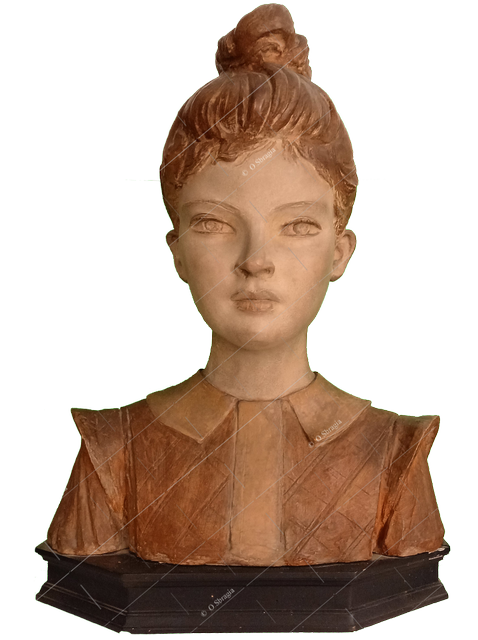
Antonio Luccarda, 1942

Elisabetta di Collobiano, 1963

Emilio Vitali, 1953
(Collezione La Permanente di Milano)
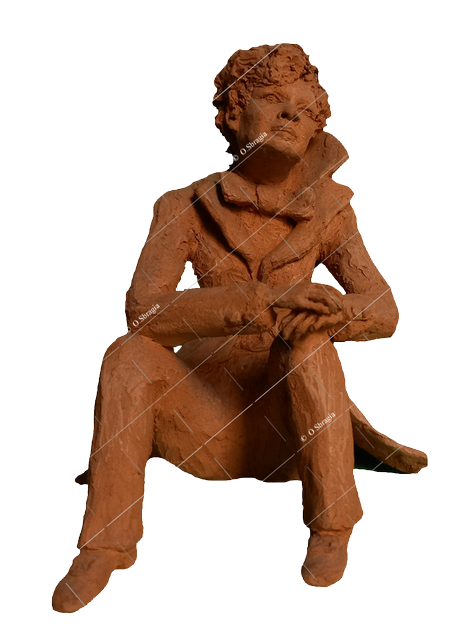
Laura Carli, 1967

Line DuhŔme, 1950ca
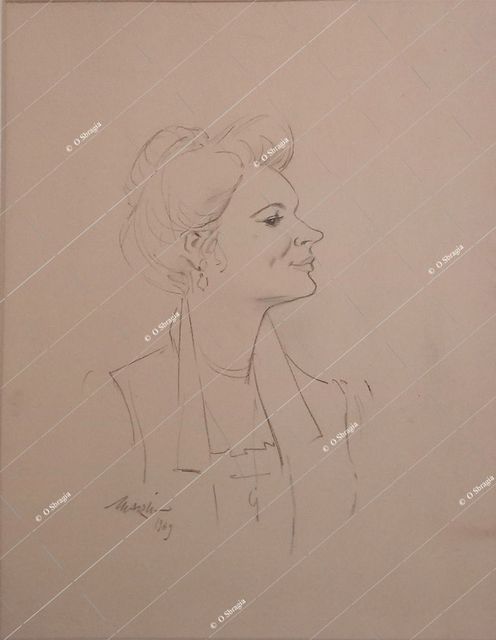
Ma..., 1969

Jacques PrÚvert, 1950ca
Esmeralda at work

At work, 1973

Practising, 1957

Wearing her carneval mask,
Venice 1985

Showing her unusual work,
Rome 1965

During the opening of her exhibition,
Tourin 1986

Adding a finishing touch,1957
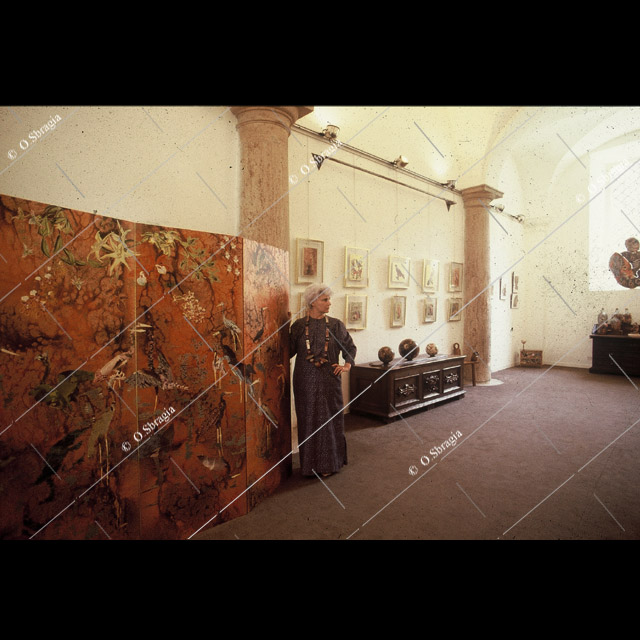
Before the vernissage,
Roma 1986

Showing her work, 1966

Wearing her collage evening gown,
Rome 1966

Posing for Vogue, 1986
Introduction
Introduction
Introduzione
Consapevole del limite che una catalogazione schematica comporti, ho comunque ritenuto opportuno, per guidare il visitatore nel mondo di Esmeralda, di dividere
sommariamente le opere nelle quattro decadi di produzione e qualche sottocategoria stilistica.
Composizione
In linea generale si pu˛ affermare che la tecnica compositiva di Esmeralda sarÓ sempre altalenante fra una composizione nella quale le figure si stagliano
chiaramente su uno sfondo omogeneo, una dove questa distinzione Ŕ pi¨ sfumata e richiede un occhio attento e una dove tutto Ŕ soggetto e sfondo al tempo stesso.
Soggetti
Per quanto riguarda il trattamento dei soggetti si ritrovano nel corso del tempo le stesse ispirazioni: echi di Arcimboldo ovvero il ricostruire con tante
figure riconoscibili una nuova figura; una immagine originale forte diventa il soggetto del quadro; figure frutto di un rigoroso disegno preparatorio composte non
da immagini riconoscibili ma da ritagli pi¨ materici (serie uccelli su fondo metllizzato, serie erotica); composizioni che nella mente dello spettatore evocano "il paesaggio"
dove tutti e nessun dettaglio Ŕ importante e dove l'occhio indugia e si perde.
Nei collages di Esmeralda ci sono immagini ricorrenti quali occhi, serpenti, mani, gioielli e dettagli di pitture di Canaletto per citare i pi¨ frequenti.
Sapore estetico
L'estetica finale Ŕ invece principalmente frutto della differente scelta ab origine del materiale ritagliato predominante: l'uso quasi esclusivo di riproduzioni
di quadri antichi darÓ all'opera un sapore antiquario pi¨ di un collage con foto di animali, di reportage o pubblicitaria.
Tecnica
Come per molte tecniche artigianali la teoria ha un ruolo minimale in rapporto all'esperienza. Non vi sono segreti particolari nell'uso delle forbici o nella colla
usata da Esmeralda. La perfezione del taglio e dell'incollaggio che rende difficile all'occhio riconoscere i bordi sono frutto di anni di esperienza: ritagliare le
singole note di una partitura, foderare oggetti con la carta velina o sfere di piccolo diametro con la carta spessa dei libri d'arte Ŕ frutto di uno straordinario
virtuosismo. La colla Ŕ sempre stata il Vinavil diluito con acqua in base al tipo di carta da incollare. La composizione in essere veniva fermata sotto vari vetri
trasparenti che impedivano ai vari pezzi di muoversi dando al tempo stesso l'effetto finale livellando con il peso i vari ritagli. Finita, la composizione veniva
smontata, i pezzi numerati, posti piccoli segni a matita per ritrovare il posizionamento e quindi, a ritroso, incollata pezzo per pezzo.
Per un effetto ottimale ogni singolo pezzo deve essere incollato con una energica pressione delle dita. Una volta terminata si passa un velo di colla diluita con
acqua in modo da creare una patina sopra la quale, poi, si passa la vernice trasparente.
Il materiale cartaceo utilizzato aveva le origini pi¨ diverse: riviste di qualsiasi tipo dalle quali prendeva sia foto di articoli che pubblicitÓ, giornali, antichi
manoscritti, tavole di bestiari e incisioni originali (quando i prezzi erano accessibili) e in seguito riproduzione dei medesimi; libri d'arte e in particolare la
collezione "I Maestri del Colore" corte monografie sui grandi pittori del passato edita in Italia per pi¨ di quarant'anni; carta velina, carte da parati (Nobilis, Parigi),
pagine di riviste economiche trattate poi con acido per "sciogliere" le immagini. La sua immaginazione e le sue forbici erano fameliche di qualsiasi carta scritta o illustrata.
Introduction
Given the limits of any schematic cataloguing, I consider it opportune to guide the visitor into the world of Esmeralda by separating her works
into the four decades of their production along with some stylistic sub-categories.
Composition
In general, Esmeralda's compositional technique fluctuates between works in which the figures stand out clearly on a homogeneous background; those
in which this distinction is hazierthus requiring a sharper eye and, lastly, those in which everything is both subject and background at the same time.
Subjects
As for the treatment of her subjects, the same inspirations are to be found in the course of time: echoes of Arcimboldo with the reconstruction of a
new figure from many recognisable ones; a strong original image that becomes the subject of the picture; figures that result from a rigorous preparatory
design where unrecognisable images are composed of more material cut outs (bird on metallic background series, erotic series); compositions evoking "the landscape" where
everything and nothing is important,where the eye lingers and loses itself.
In Esmeralda's collages there are some reoccurring images such as eyes, snakes,
hands, jewels and details of Canaletto's paintings to name but a few.
Artistic taste
Instead, the final aesthetic is the fruit of the different choice initially of the predominant cut out material: the almost exclusive use of reproductions
of old paintings will give the work an antique tinge more than a collage with photos of animals, reportage or advertising.
Technique
As with many artisanal techniques, theory plays a minimal role with respect to experience. There are no special secrets involved in Esmeralda's use
of scissors or paste. The perfection both of the cutting and pasting make it difficult for the eye to define edges that are the fruit of years of
experience: to cut out the single notes of a musical score, line objects with tissue paper or cover small spheres with the thick pages of art books are
all the fruit of an extraordinary virtuosity. The paste was always Vinavil diluted with water according to the type of paper to be pasted. The composition
was held firm under various transparent sheets of glass: these prevented all the pieces from moving about and at the same time provided a view of the final
effect by flattening the many cut outs with their weight. Once finished, the composition was taken apart, the pieces numbered with small pencil marks
indicating their positions, and, lastly, pasted piece by piece.
For the best effect, each single piece was pasted using the strong pressure of the fingers. Once finished, it was covered with a veil of paste diluted
with water there by creating a patina over which a transparent varnish was then passed.
The paper material used had a variety of origins: photos of articles and of advertising from all kinds of magazines, newspapers, ancient manuscripts,
tables of bestiaries and original etchings (when the prices were feasible) and later, reproductions from these; art books, especially the collection
"I Maestri del Colore" (short and well illustrated monographs of Old Masters published in Italy for more than forty years);tissue paper, wallpapers (Nobilis, Paris),
widely distributed inexpensive magazines which when treated with acid 'dissolved' the images. Her imagination and her scissors were ravenous for any
kind of written or illustrated paper.
Selected Works 1955 - 1959
Selected Works 1955 - 1959
Anni 50
Della produzione anni 50 rimangono pochi pezzi, alcune foto in bianco e nero e le liste di opere esposte nel 1957-58.
Vi Ŕ una grande differenza compositiva fra queste opere: la porta della villa materna di Maser (1950ca) vi Ŕ una sovrabbondanza di
immagini come alcuni dÚcoupage vittoriani afflitti da una sorta di "horror vacui" dove gli accostamenti sembrano assolutamente casuali e
troppo densi per essere distinti. Nel paravento 1 invece c'Ŕ un chiaro richiamo ai trompe l'oeil seicenteschi mentre nel paravento 3 elementi
architettonici si alternano a grandi figure che dominano la composizione, tecnica compositiva che si ritrova in molte opere successive.
Lo stile delle opere esposte nel 1957/58, che rappresenta un corpus organico, Ŕ radicalmente differente. ╚ evidente l'influenza di
Fabrizio Clerici, maestro e amico di Esmeralda, nella composizione delle fantastiche figure composte a loro volta da ritagli di antichi
Bestiari o di stampe in bianco e nero su fondi uniformemente dipinti. Il colore dei ritagli Ŕ moderato e ben integrato. Si ispirano a
queste composizioni anni 50 anche i successivi
Il gigante della cittÓ 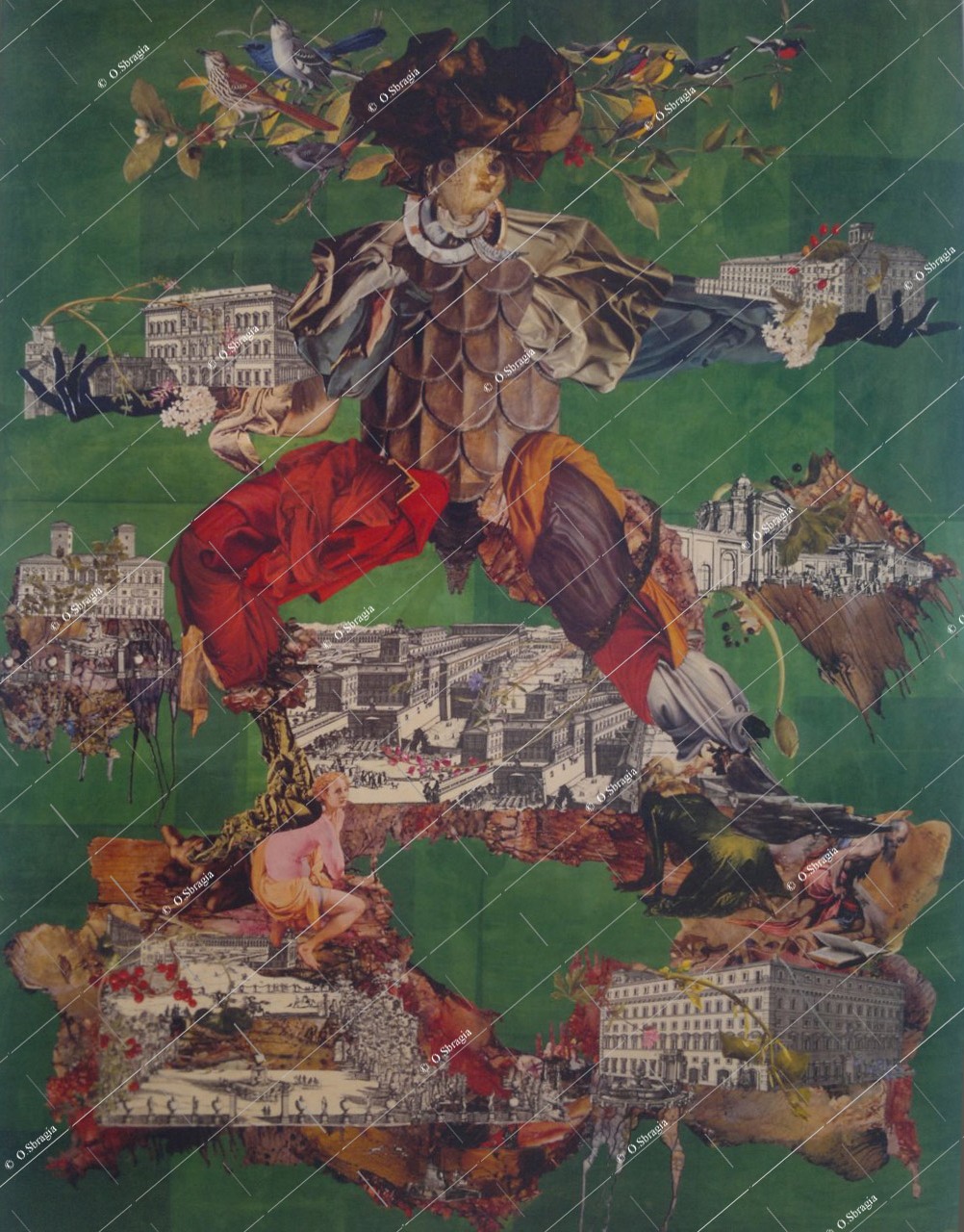 (1986),
L'albero
(1986),
L'albero  (197?) presenti nella sezione "in the '50s manner".
(197?) presenti nella sezione "in the '50s manner".
Le undici scatole, sempre nel medesimo stile dei precedenti, furono costruite in legno per contenere il materiale di lavoro e decorate,
quindi, per il proprio piacere personale.
Una curiositÓ. Pochissimi collages sono stati oggetto di modifiche successive: il collage
la guerra Ŕ una di queste. Nel 1965
viene arricchita la parte centrale per dare pi¨ corpo al carro. ╚ ipotizzabile che possa essersi trattato di un restauro in quanto il
collage che Ŕ su tavola venne usato alcuni anni in famiglia come piano di tavolo.
Ŕ una di queste. Nel 1965
viene arricchita la parte centrale per dare pi¨ corpo al carro. ╚ ipotizzabile che possa essersi trattato di un restauro in quanto il
collage che Ŕ su tavola venne usato alcuni anni in famiglia come piano di tavolo.
1950s 
Only a few pieces remain from the 1950s: some black and white photos and the lists of works that were exhibited in 1957-58.
There is a great compositional difference in these works: on the door of her mother's Villa Maser (1950 ca.) there is an abundance of
images much like some Victorian dÚcoupage afflicted with a sort of "horror vacui" where the placing seems absolutely casual and too full
to be distinct. On Screen 1 instead there is a clear reference to 17th century trompe l'oeil while on Screen 3 architectural elements
alternate with the large figures dominating the composition, a compositional technique found in many later works.
The style of the works exhibited in 1957/58, which represent an organic corpusis radically different. The influence of Fabrizio Clerici,
Esmeralda's teacher and friend, is evident in the composition of the fantastic figures composed of cut outs of old bestiaries or black
and white prints on uniformly painted backgrounds. The colour of the cut outs is moderate and well integrated. Inspired by these compositions
of the 50s are the later
The Giant of the City  (1986),
The Tree
(1986),
The Tree  (197?) present "in the '50s manner" section.
(197?) present "in the '50s manner" section.
The eleven boxes, in the same style as the preceding work, were made of wood to hold her work material and decorated according to her own taste.
A curiosity. Very few collages were subject to successive modifications: the collage
The War is one of these. In 1965, the central
part was augmented providing more body for the cart. This may have been a restoration since the collage, which is on a board, had been used
in the family for several years as a table top.
is one of these. In 1965, the central
part was augmented providing more body for the cart. This may have been a restoration since the collage, which is on a board, had been used
in the family for several years as a table top.
Selected Works 1960s
Selected Works 1960s
Anni 60
I ritratti a olio integrati con collages sono la parte pi¨ caratteristica della produzione di questa decade. I ritratti molto riusciti in termini di
rassomiglianza dei soggetti ritratti, sono caratterizzati da una sorta di staticitÓ probabilmente dovuta ad una carenza tecnica che si trasforma per˛
in stile una volta completata dai collages. I ritratti di due figli, della sorella e di Luca sono della fine degli anni 50.
Di alcuni invece Ŕ stata rielaborata successivamente la parte in collage: Autoritratto,
Viola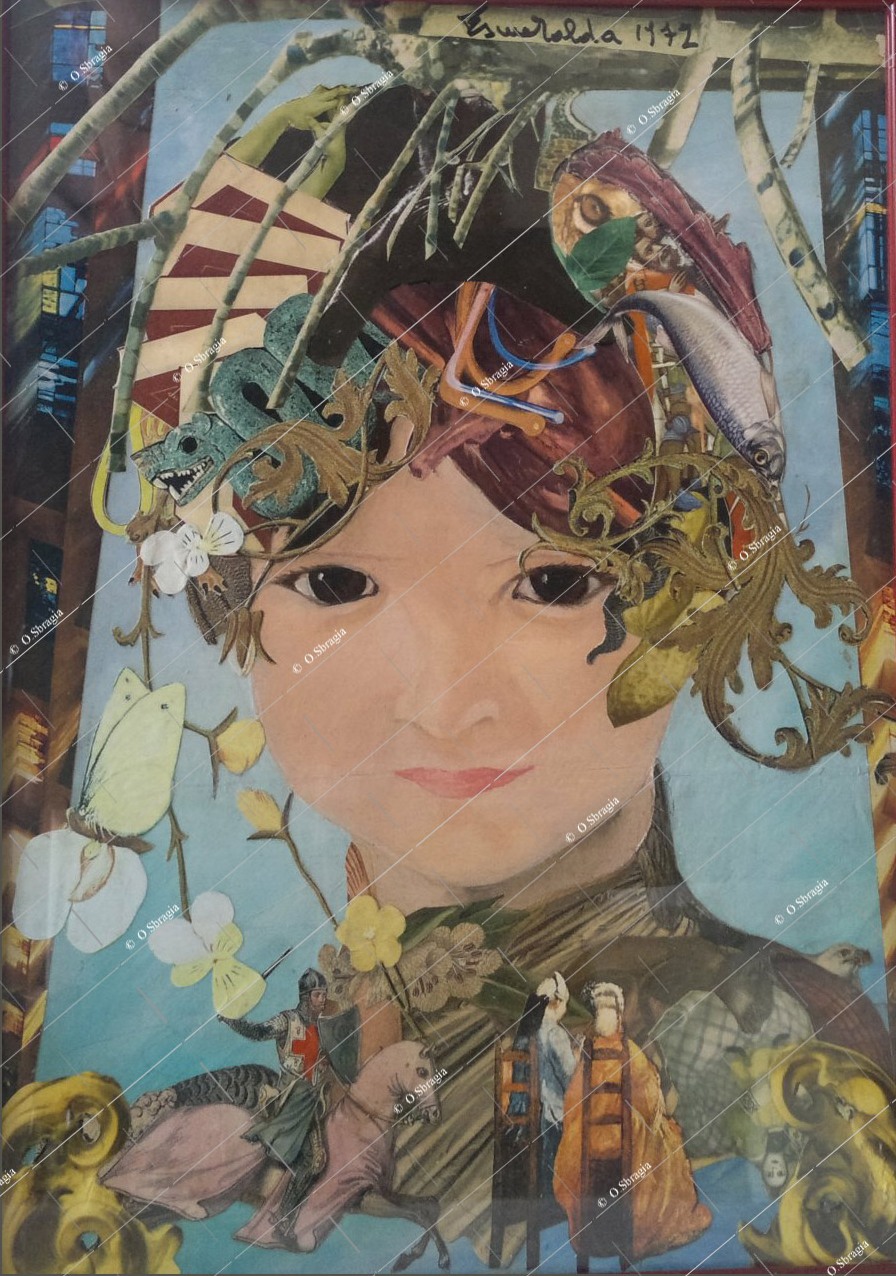 e
Marina
e
Marina  (1972),
Marcello
(1972),
Marcello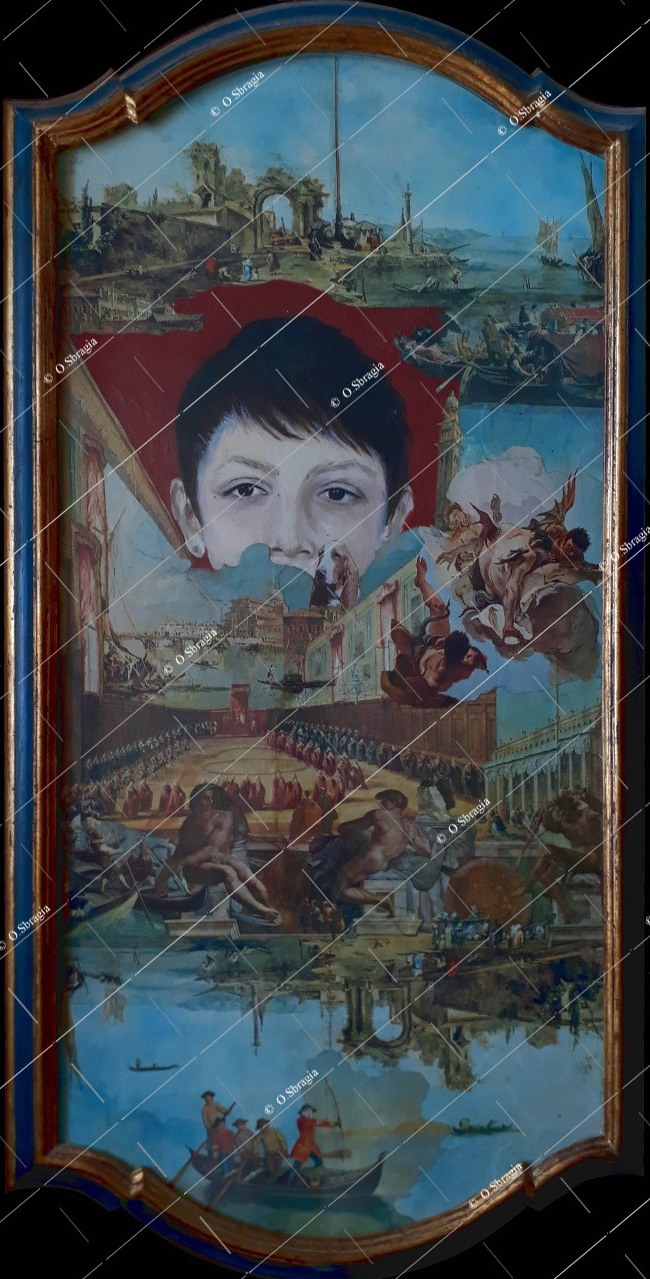 (1980) mentre Roberto Ŕ stato
integralmente realizzato nel 1988.
(1980) mentre Roberto Ŕ stato
integralmente realizzato nel 1988.
Del resto della produzione si ha poca documentazione e pochissimi pezzi. Si conosce, oltre ai quadri, una
gran quantitÓ di oggettistica di uso comune: sedie, scatole, vassoi, tavolette del gabinetto (di grande successo) testiere di letto, parafuoco, piccoli
mobili, persino un fucile e una vanga (pala). Molti delle tecniche compositive che verranno usate in maniera pi¨ organica negli anni 70 sono presenti
in queste opere: la tecnica arcimboldesca (
donna con cappello, struzzo),
un background in bianco e nero dei quotidiani stranieri (sedia).
struzzo),
un background in bianco e nero dei quotidiani stranieri (sedia).
1960s 
The portraits in oil integrated with collages are the most characteristic part of this decade's production. The most successful portraits in terms
of resemblance to the subjects portrayed are characterised by a sort of static nature that may have been due to a lack of technique that, however,
was transformed stylistically once the collages were completed. The portraits of two children, her sister and Luca are from the late '50s.
Instead, the parts in collage of some were later re-elaborated: Autoritratto (Self-Portrait),
Viola  and
Marina
and
Marina  (1972),
Marcello
(1972),
Marcello  (1980); while that
of Roberto was done in 1988.
(1980); while that
of Roberto was done in 1988.
There is not much documentation and very few pieces of the rest of her production. In addition to the paintings, there are a number of objects of
daily use: chairs, boxes, trays, toilet seat covers (of great success), headboards, fire screens, small pieces of furniture, even a rifle and a shovel.
Many of the compositional techniques that would be used in a more organic manner in the '70s are present in these works: The Arcimboldo technique (
Woman with Hat and
Ostrich), a black and white background of foreign newspapers (chair).
and
Ostrich), a black and white background of foreign newspapers (chair).
Selected Works 1970s
Selected Works 1970s
Anni 70
Gli anni 70 sono probabilmente la decade pi¨ creativa e sperimentale di tutta la produzione. A volte volutamente provocatoria (
la serie erotica, la Madonna,
la Madonna,  i feti sanguinanti
i feti sanguinanti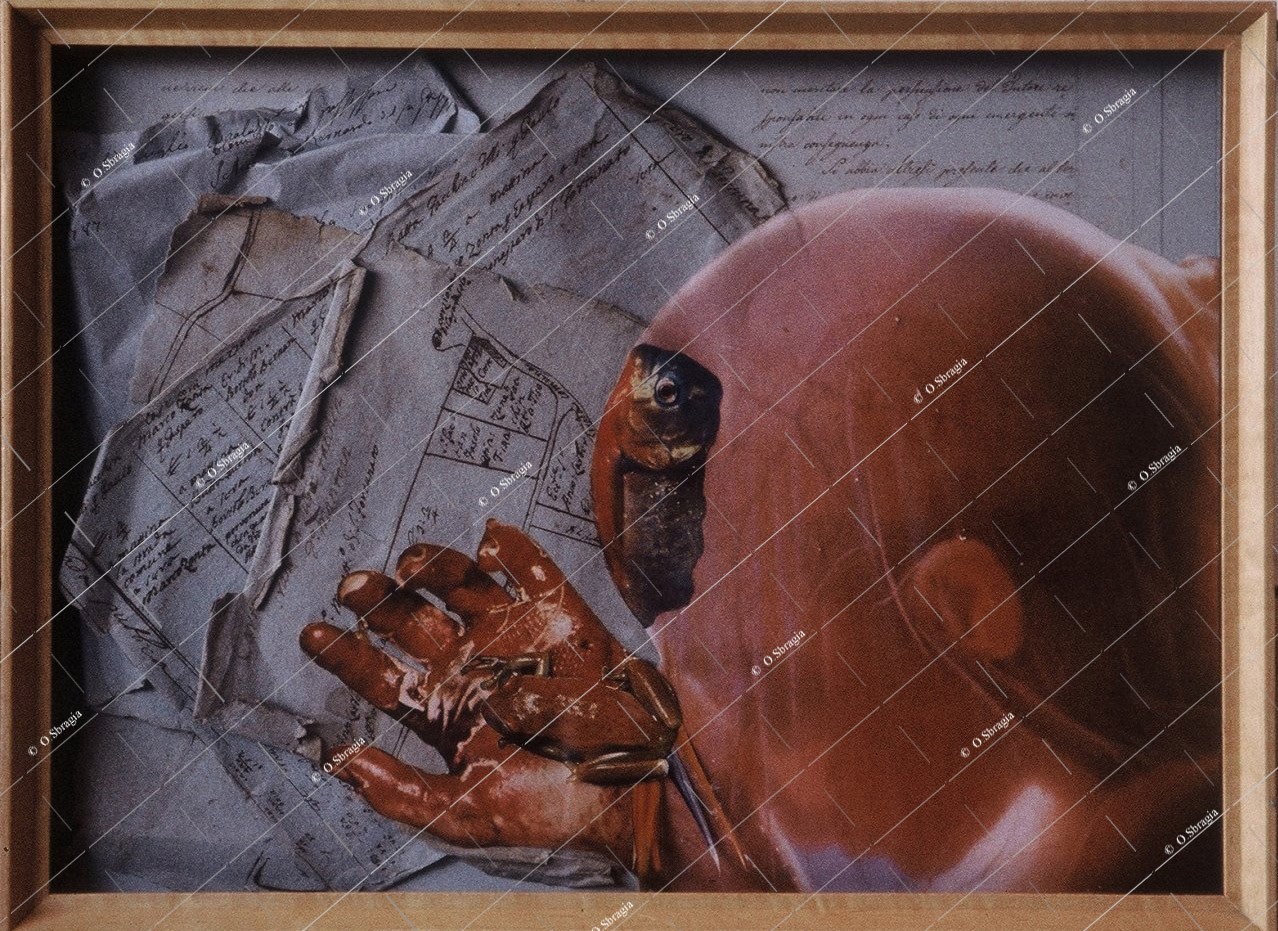 ) o di denuncia (
il denaro,
) o di denuncia (
il denaro, la pigmea,
la pigmea, l'urlo)
l'urlo) altre volte puramente decorativa. Vi sono collages: a tre dimensioni,
caleidoscopio, su tela, copie di statue, vari oggetti e strutture realizzate appositamente per poltrone, piccoli mobili e piani per tavoli.
altre volte puramente decorativa. Vi sono collages: a tre dimensioni,
caleidoscopio, su tela, copie di statue, vari oggetti e strutture realizzate appositamente per poltrone, piccoli mobili e piani per tavoli.
Le tecniche compositive dei quadri sono molto differenti fra loro. Un background omogeneo sul quale si stagliano chiaramente delle sagome di animali
o figure umane formate da frammenti di figure riconoscibili o da semplici ritagli di carte colorate (
scheletri, il ballerino)
il ballerino) ; la composizione sembra essersi formata spontaneamente intorno ad una immagine centrale portante (
la mano della creazione,
; la composizione sembra essersi formata spontaneamente intorno ad una immagine centrale portante (
la mano della creazione,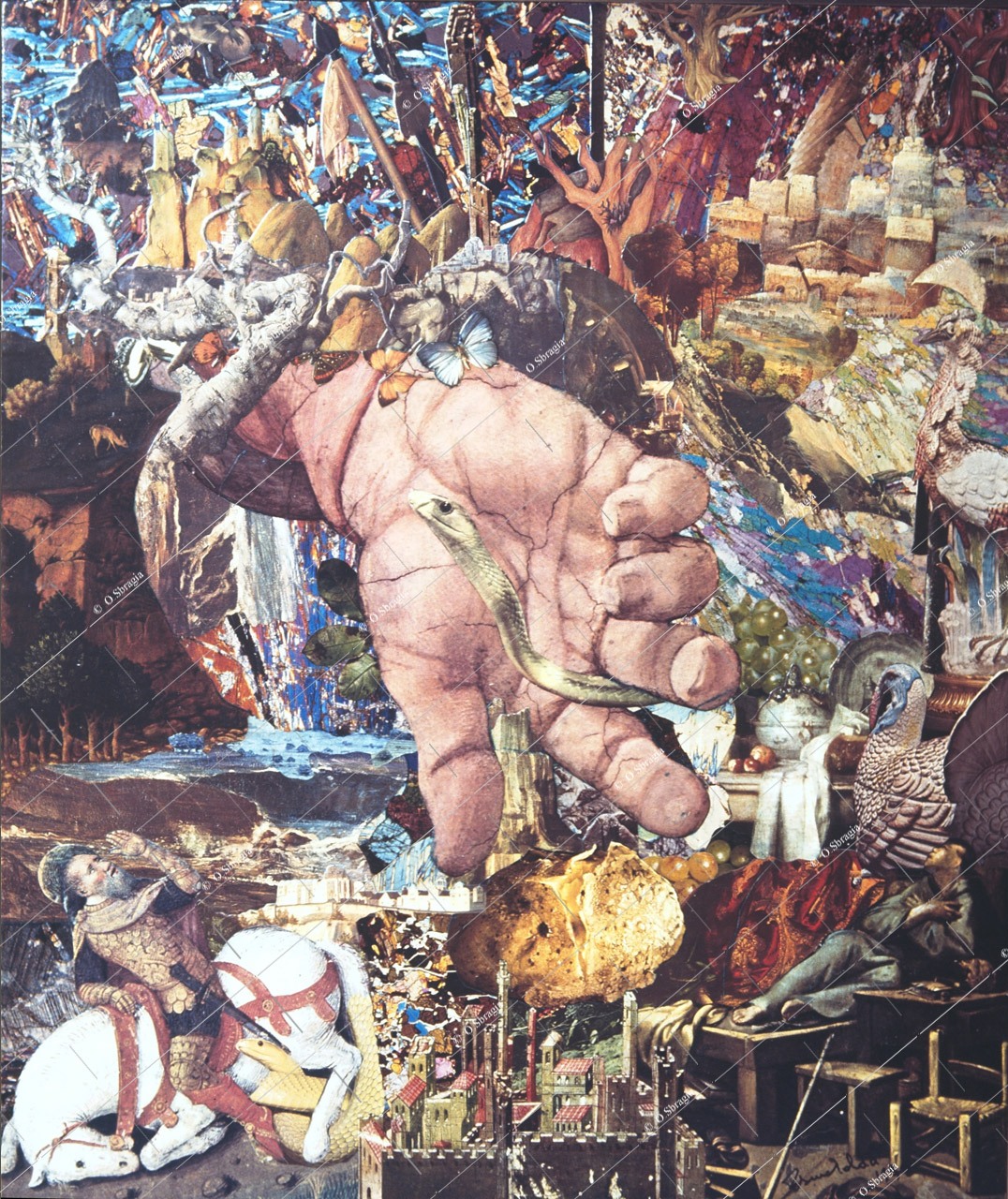 la goccia di sangue,
la goccia di sangue, la Rolls)
la Rolls) ;
composizioni con un gran numero di immagini che ricordano il horror vacui dei primi tempi mentre quelle denominati paesaggi, in mancanza di un titolo appropriato,
la mancanza di vuoti Ŕ armonizzata da ritagli di prospettive architettoniche o paesaggi di antichi maestri.
;
composizioni con un gran numero di immagini che ricordano il horror vacui dei primi tempi mentre quelle denominati paesaggi, in mancanza di un titolo appropriato,
la mancanza di vuoti Ŕ armonizzata da ritagli di prospettive architettoniche o paesaggi di antichi maestri.
1970s 
The 1970s were probably the most creative and experimental decade of her entire production: At times deliberately provocative
(
the erotic series,  the Madonna,
the Madonna,  the bleeding fetuses
the bleeding fetuses ) or denunciatory (
money,
) or denunciatory (
money, the pygmy,
the pygmy, the howl)
the howl) ; other times purely decorative.
There are collages -three dimensional, kaleidoscopic - on canvas, copies of statues, various objects and structures expressly made
for armchairs, small pieces of furniture and table tops.
; other times purely decorative.
There are collages -three dimensional, kaleidoscopic - on canvas, copies of statues, various objects and structures expressly made
for armchairs, small pieces of furniture and table tops.
The compositional techniques of the paintings differ greatly from one another. A homogeneous background on which the silhouettes
of animals or human figures clearly stand out formed by fragments of recognisable figures or by simple cuttings of coloured paper (
skeletons, ballet dancer)
ballet dancer) ; the composition seems to have spontaneously formed around a central supporting image (
the hand of creation,
; the composition seems to have spontaneously formed around a central supporting image (
the hand of creation, the drop of blood,
the drop of blood, the Rolls)
the Rolls) ;
compositions with a great number of images that recall the horror vacui of the early days while those designated landscapes,
in lacking an appropriate title, the lack of voids is harmonised by cut outs of architectural views or the landscapes of the old masters.
;
compositions with a great number of images that recall the horror vacui of the early days while those designated landscapes,
in lacking an appropriate title, the lack of voids is harmonised by cut outs of architectural views or the landscapes of the old masters.
Selected Works 1980s
Selected Works 1980s
Anni 80
Sono caratterizzati da una produzione pi¨ sofisticata ed elegante, meno provocatoria di quella della decade precedente e pi¨ attenta ad una estetica classica,
in linea con il gusto opulento degli interior decorators dell'epoca. Il materiale d'origine Ŕ composto per la maggior parte dalle riproduzione di quadri antichi.
La scoperta e l'utilizzo delle carte da parati metallizzate di manifattura parigina (Nobilis) Ŕ decisiva nella produzione di questa decade.
Quadri, paraventi, table mats sono creati con infinita fantasia su fondi dorati o ramati che impreziosiscono le composizioni
conferendo al tempo stesso un vago sapore orientalista.
1980s 
These years are characterised by a more sophisticated and refined, less provocative production than the previous
period and more attentive to a classical aesthetic in line with the opulent taste of the interior decorators of the period.
The utilized material is mainly derived from reproduction of Old Master paintings.
The discovery and use of a metallic finish wallpaper manufactured in Paris by the firm Nobilis is decisive in the production of this decade.
Paintings, screens, and tablemats are created with infinite fantasy on gilt or copper backgrounds
that embellish the compositions conferring them at the same time with a vague oriental taste.
Objects and Furniture
Objects and Furniture
Oggetti e mobilio
Come tematica separata, in questa sezione vengono presentate alcune tipologie ricorrenti nel tempo di oggetti, quali
mobili, scatole ed altri oggetti. Interessante notare in queste opere l'evoluzione dello stile.
Un oggetto feticcio e di grande successo sono le sfere di legno completamente ricoperte di carta con un abilitÓ artigianale
e un gusto straordinari.
Objects and Furniture
As a separate theme some typologies are presented in this section that recur in time, such as furniture, boxes and other objects.
It is interesting to note the evolution of style in these works. A fetish object that has great success
are wooden spheres completely covered with paper that display an artisanal ability and extraordinary taste.
Selected Works 1955 - 1988
Selected Works 1955 - 1988
- 1955 Three Screens
- Set of Ten Boxes 50s
- Collages '50s
- In '50s Manner
- Portraits '60s
- Collages '60s
- In '60s Manner
- Animals '60s - '70s
- Manuscript Background '70s
- Tridimensional '70s
- Kaleidoscope '70s
- Erotica '70s
- Shapes '70s
- Statues '70s
- On Canvas '70s
- Social Commitment '70s
- Architectures and Landscapes '70s
- Prominent Central Image
- Miscellanea '70s
- Metallic Background '80s
- Birds on Metallic Background '80s
- on Paper '80s
- The last work
- Boxes
- Spheres
- Table Mats
- Objects
- Masks
- Furniture
- Bathroom
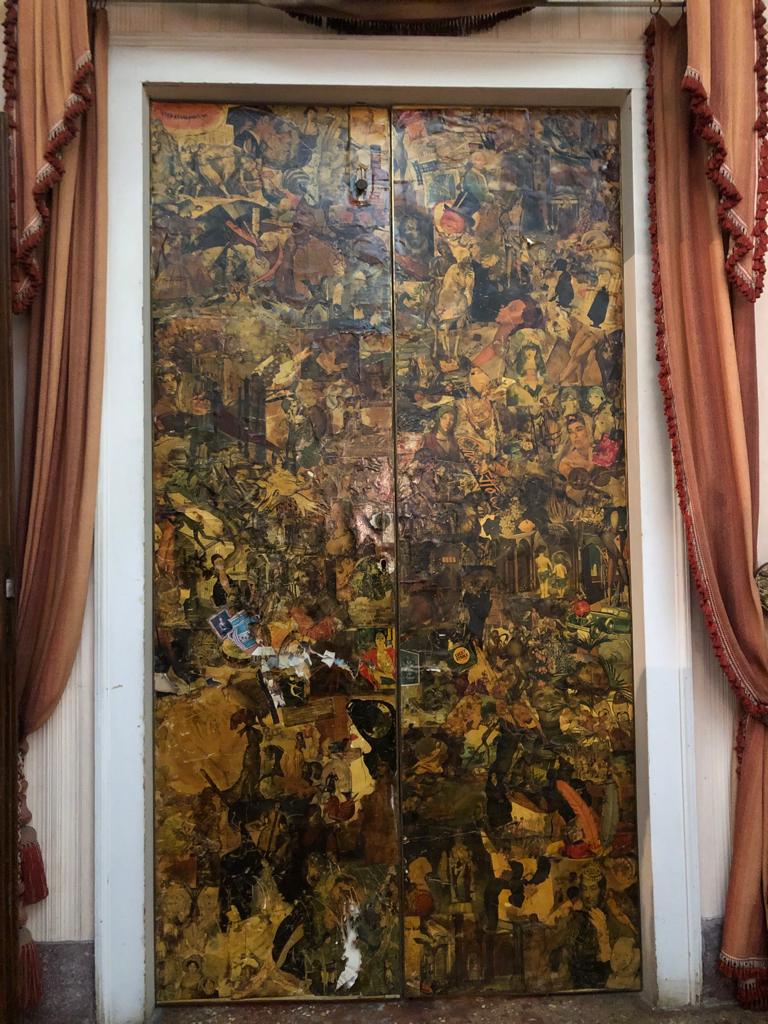
Door, 1950ca
wood
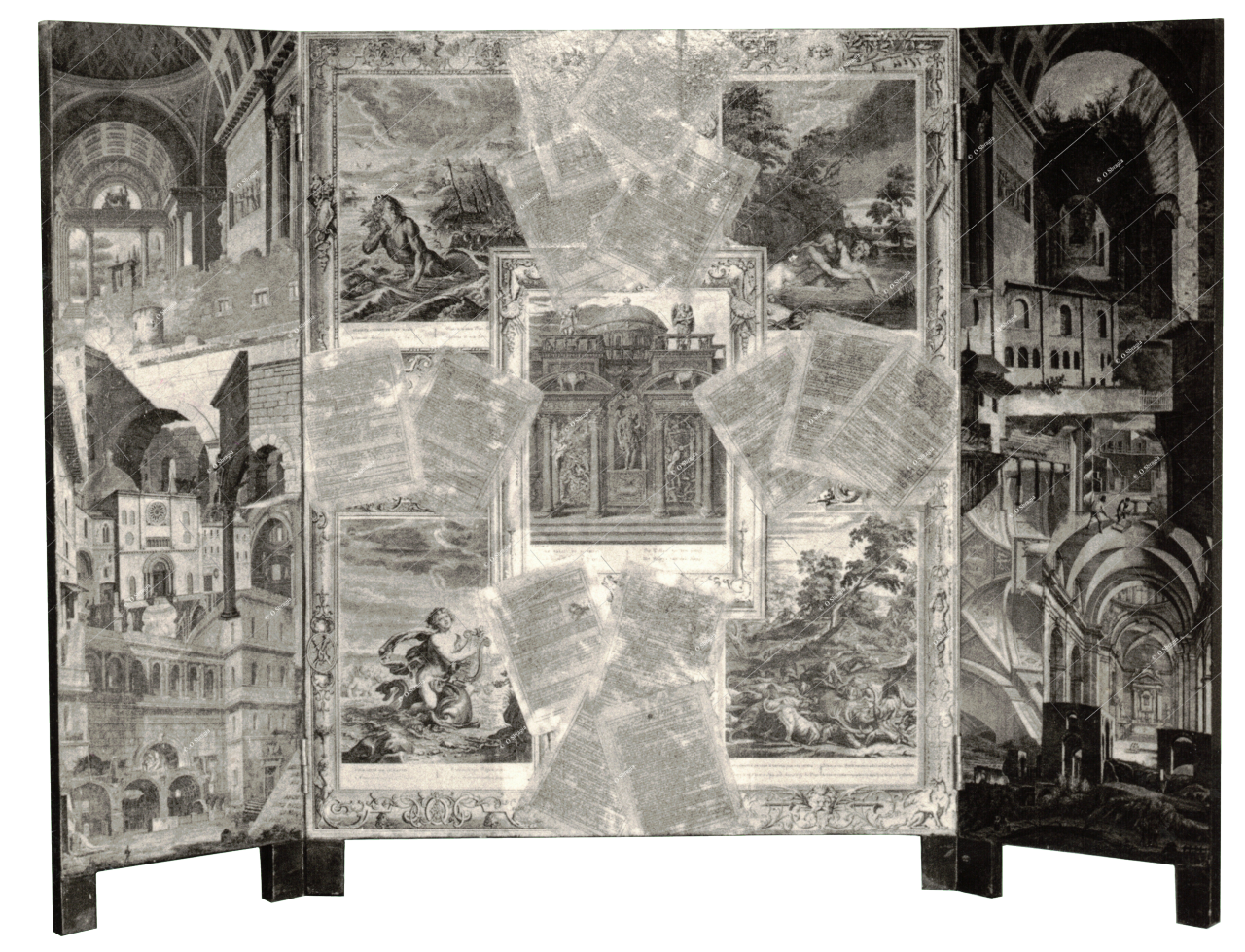
Screen 1, 1955ca

Screen 2, 1955ca
(110x100cm) wood

Screen 3, 1955ca
(60x100cm) wood
Click on the image to enlarge

Box 1, 1958ca
(44x38cm) wood

Box 2, 1958ca
(44x44cm) wood

Lid Box 1, 1958ca
(44x38cm) wood

Lid Box 2, 1958ca
(44x44cm) wood

Lid Box 3, 1958ca
(44x44cm) wood

Lid Box 4, 1958ca
(44x44cm) wood

Lid Box 5, 1958
(44x44cm) wood

Lid Box 6, 1958ca
(44x38cm) wood

Lid Box 7, 1958ca
(44x38cm) wood

Lid Box 8, 1958ca
(44x38cm) wood

Lid Box 9, 1958ca
(44x38cm) wood
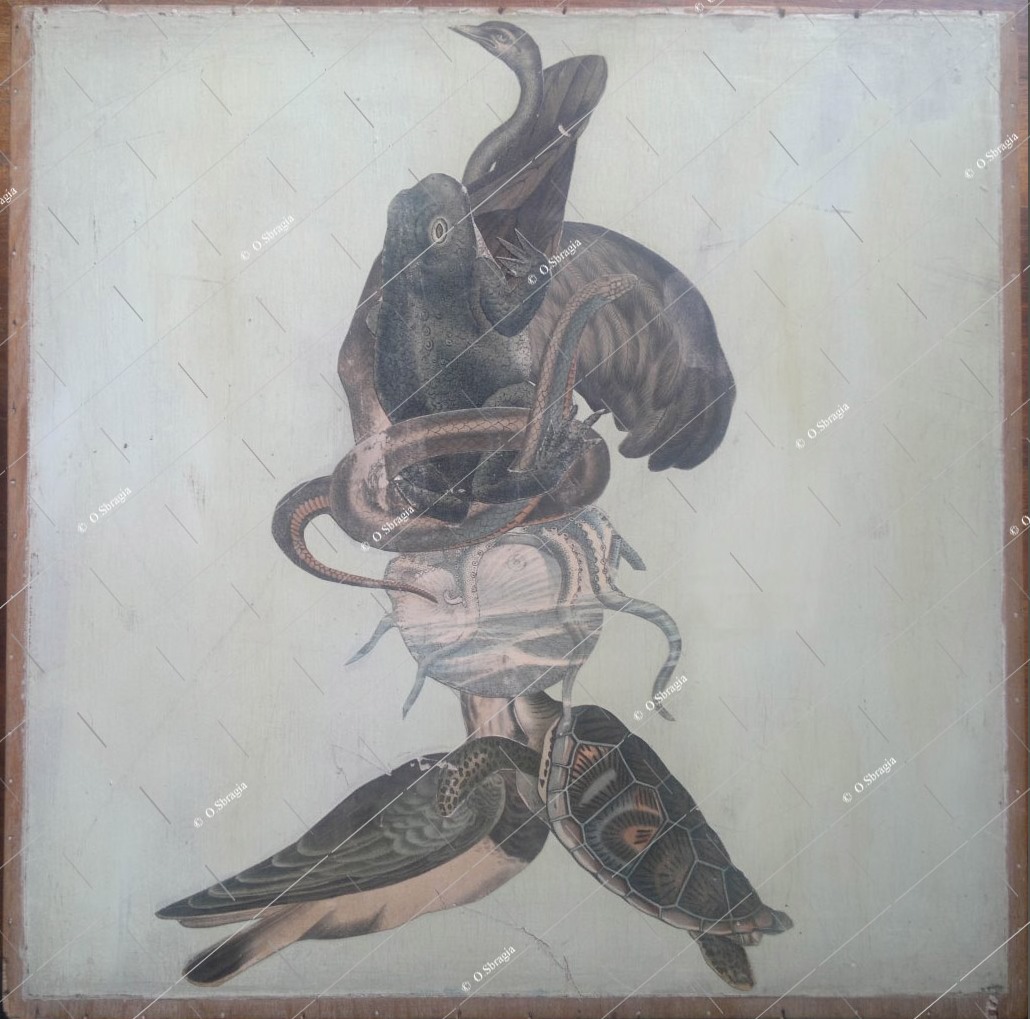
Lid Box 10, 1958ca
(44x38cm) wood

Lid Box 11, 1958ca
(44x38cm) wood
Click on the image to enlarge

Saracen in Tournament, 1957
(50x70 cm) panel

Sea Serpent, 1957
(58x17cm) panel

Sea Serpent, 1957
(58x17cm) panel

Lovers, 1957
(123x65 cm) panel

The War (modified), 1965
(130x90cm) panel

The War (original), 1957
(130x90cm) panel

Elephant, 1957
(83x57cm) panel

Album, 1957,
(32x22cm) cardboard

Two Shutters, 1957
(40x16cm) wood

The Judge of the Parrots, 1957
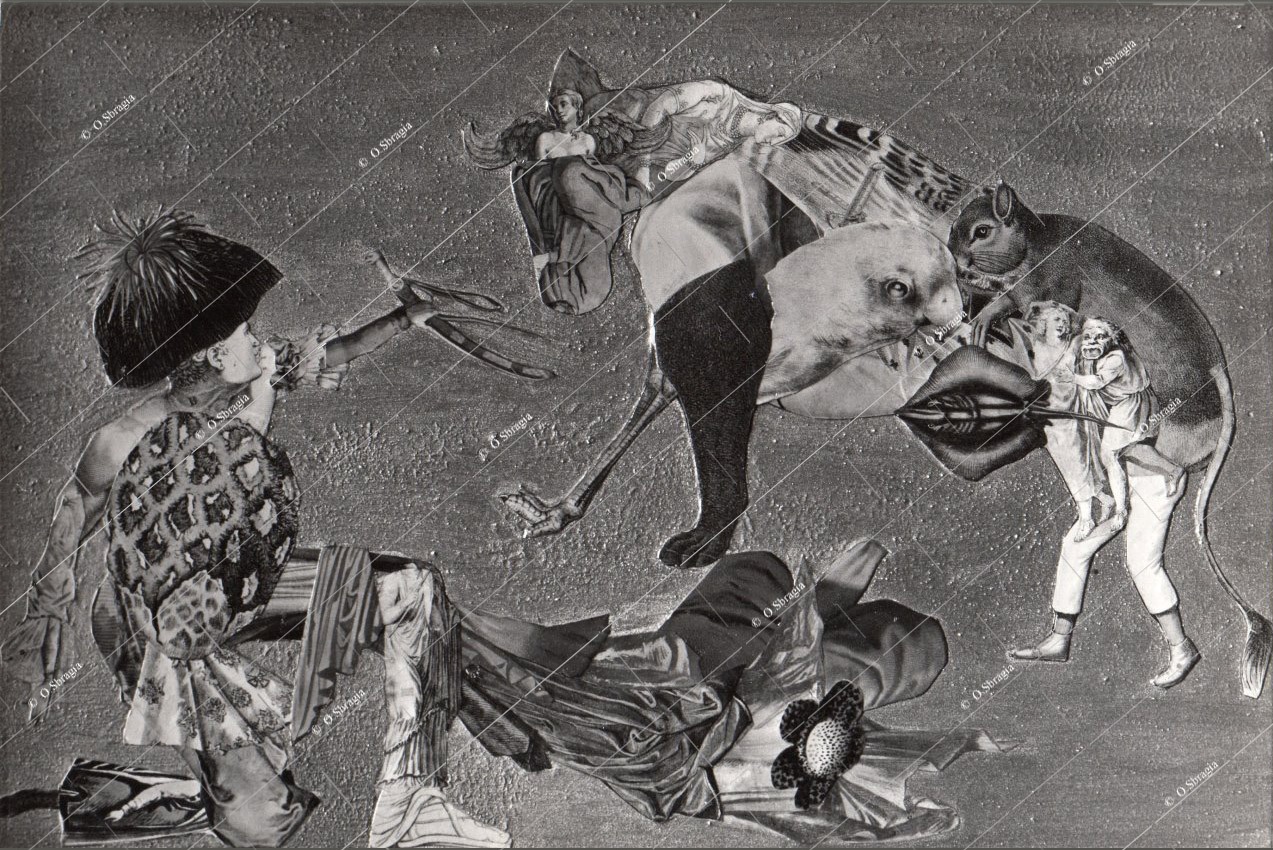
Bullfight, 1957

Giraffe in the Sun, 1957

Juggler, 1957
wood

Oberon, 1957
wood
Click on the image to enlarge

The Giant of the City, 1986
(100x130cm) panel

Tree, no date
panel
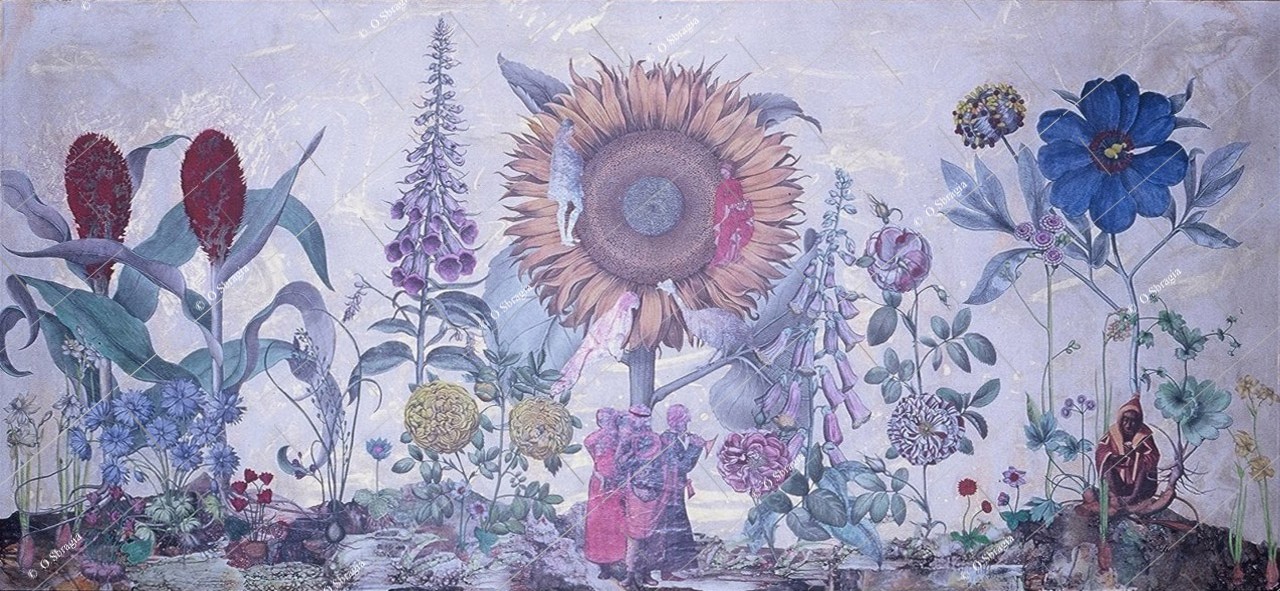
Untitled, no date
panel

Dancer, 1972ca
panel
Click on the image to enlarge
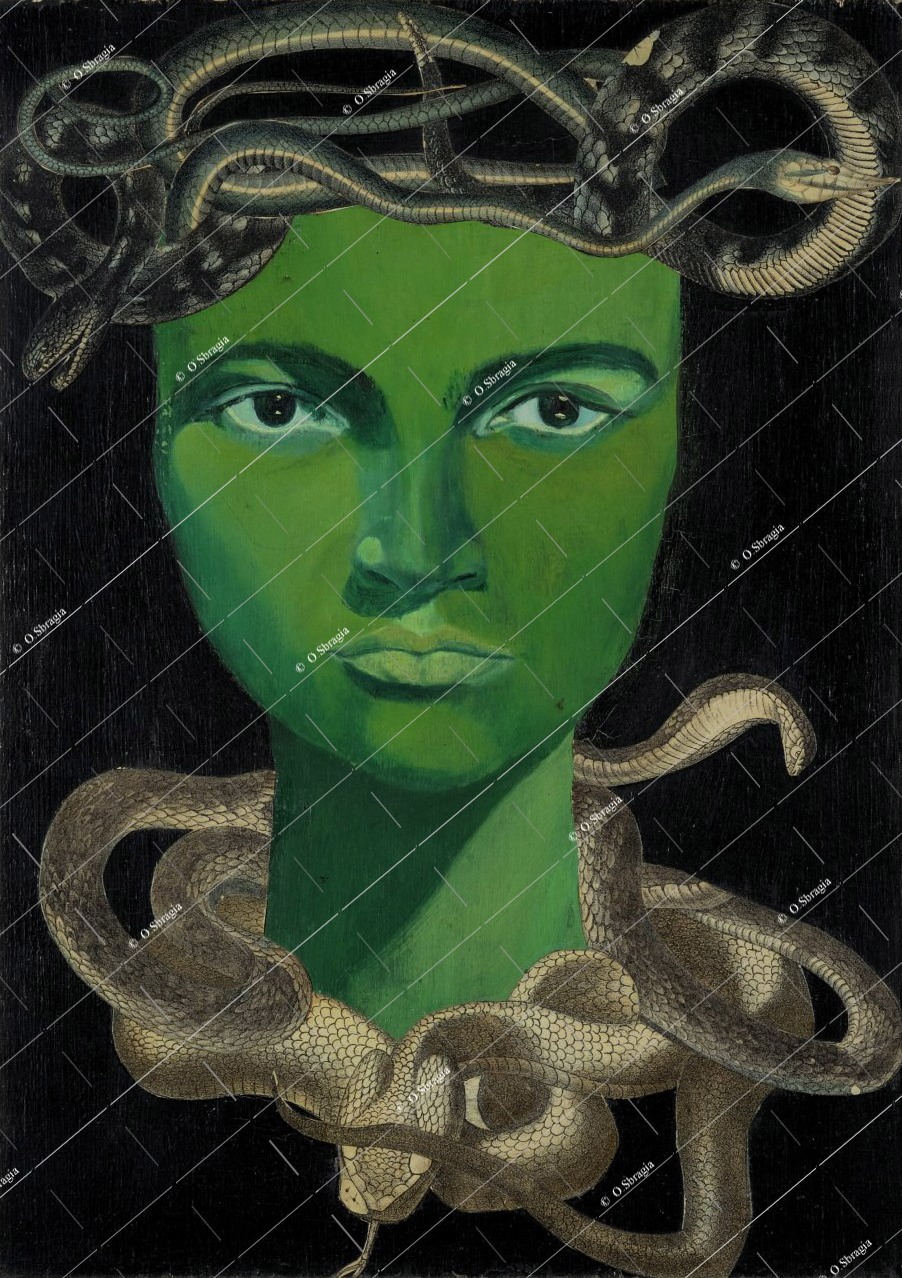
Self-Portrait, 1957
(26x36cm) oil on panel

Self-Portrait, no date
(15x20cm) oil on panel

Self-Portrait, 1972
(50x70cm) oil on panel

Marina, 1965-72
(40x50cm) cm) oil on panel
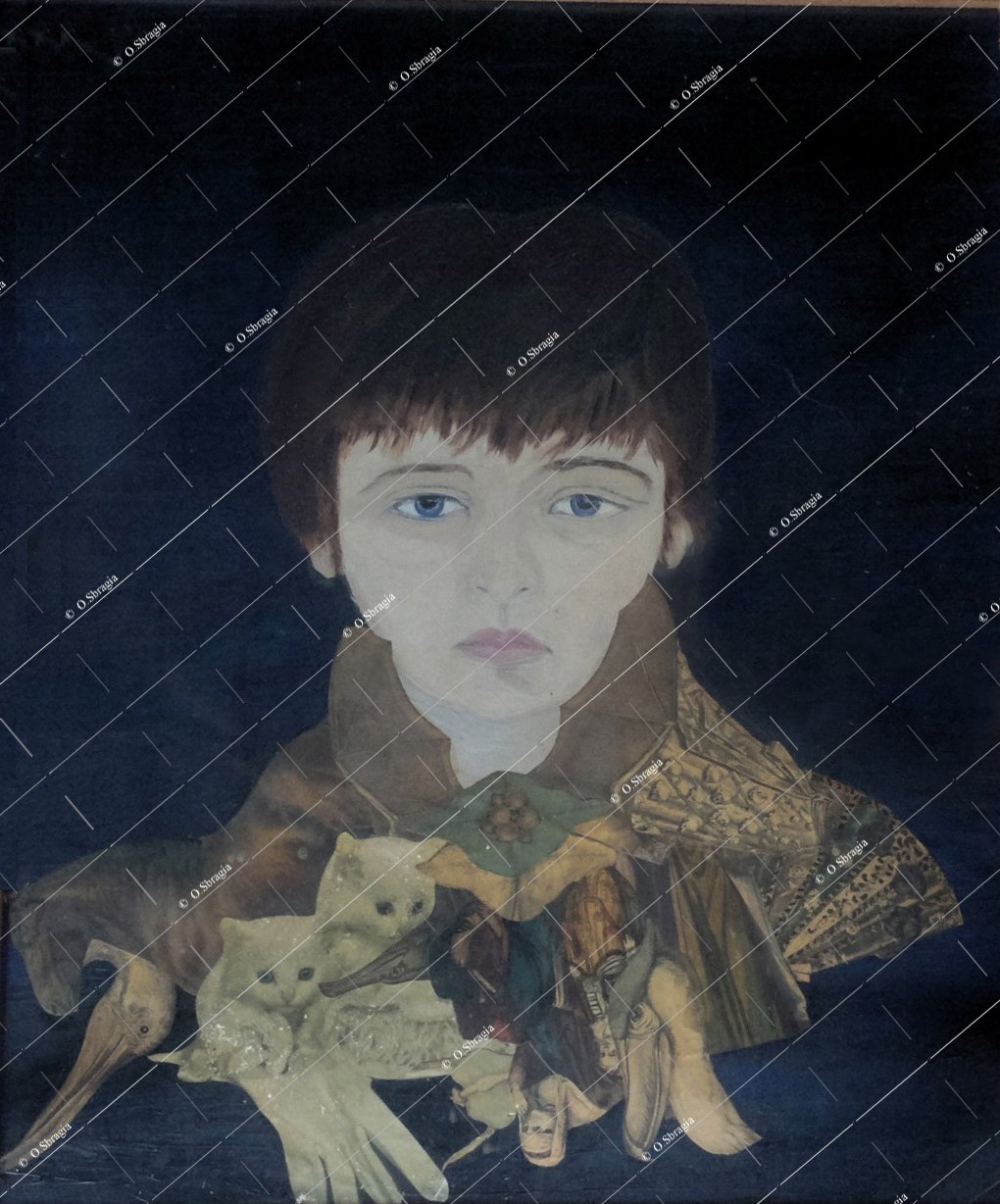
Mattia, 1957ca
(39x49cm) oil on panel

Viola, 1957-72
(24x34cm) oil on panel

Viola, 1957
(40x50 cm) oil on panel

Luca, 1957
(40x50 cm) oil on panel

Fausta Leoni, writer, 1957

Ottavio, 1965 ca
(40x50cm) oil on panel

Alvise, 1965ca
(20x34cm) oil on panel

Marcello, 1968-80
oil on panel

Fidelio, actor, 1966
(23x18 cm) oil on panel
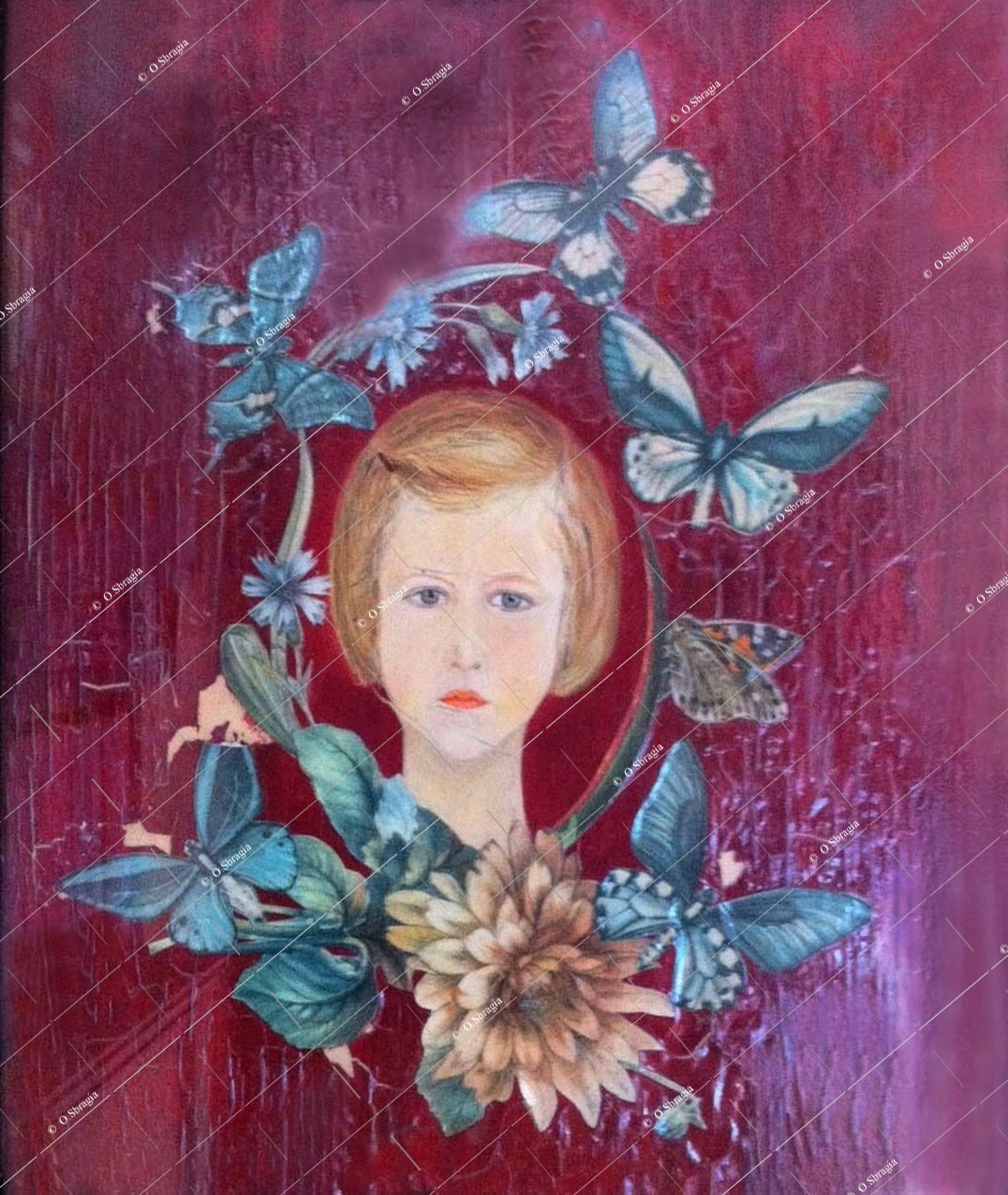
Marina C., 1960
oil on panel

Paolo C., 1960
oil on panel
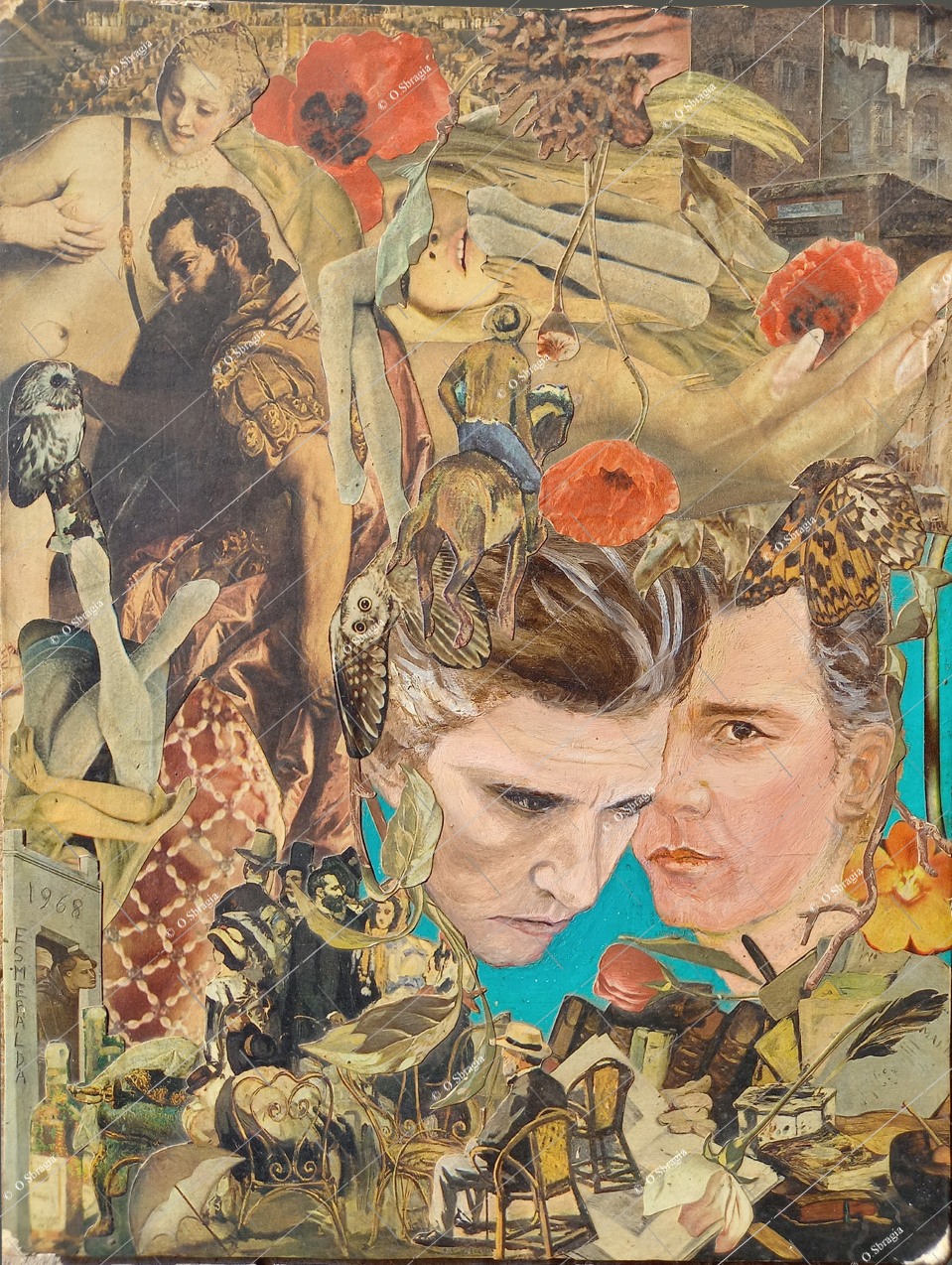
Paolo Ferrari, actor, 1968
(24x30cm ca) oil on panel

G.M.Spina, actress, 1973
oil on panel
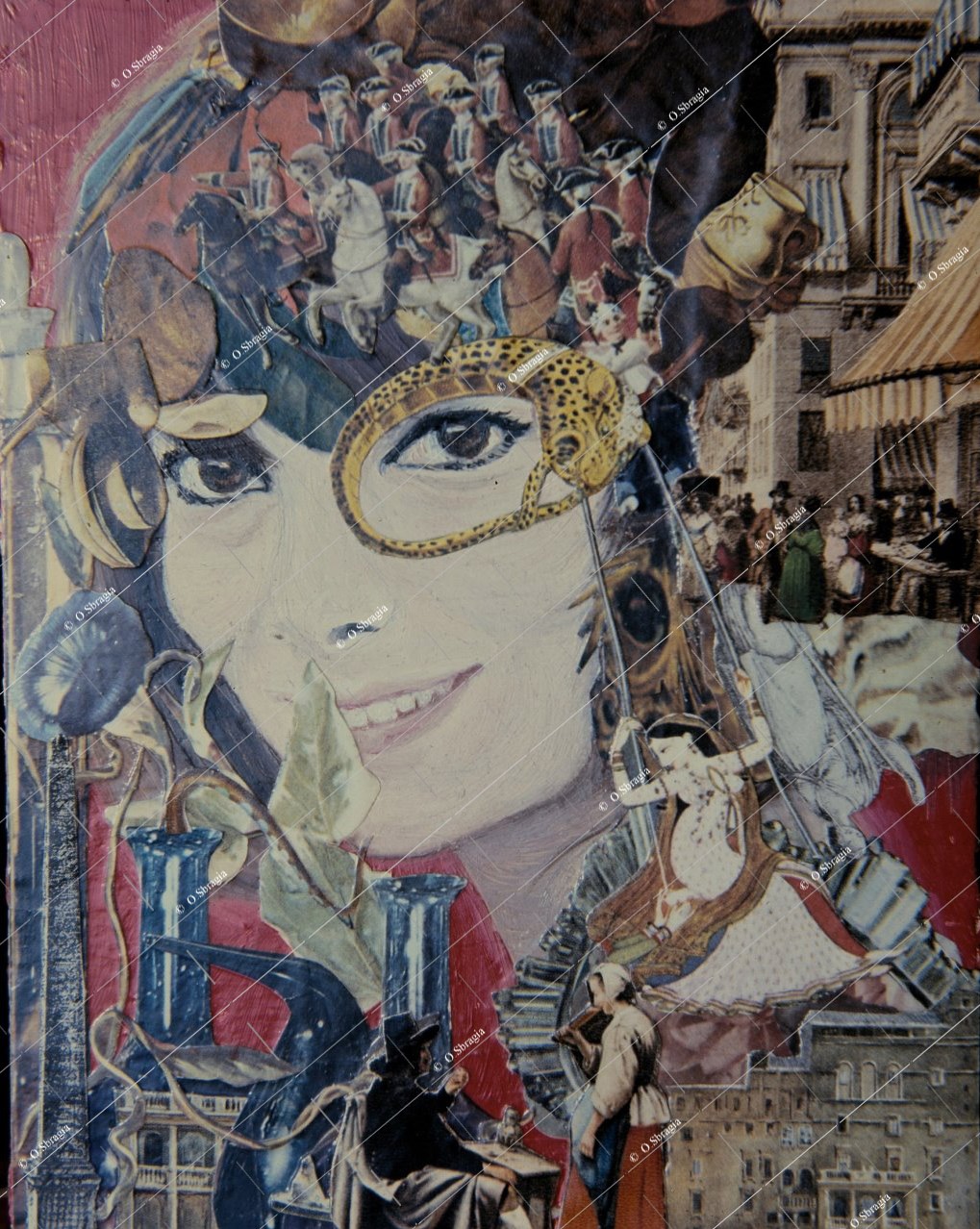
R.Falk, actress, no date
oil on panel
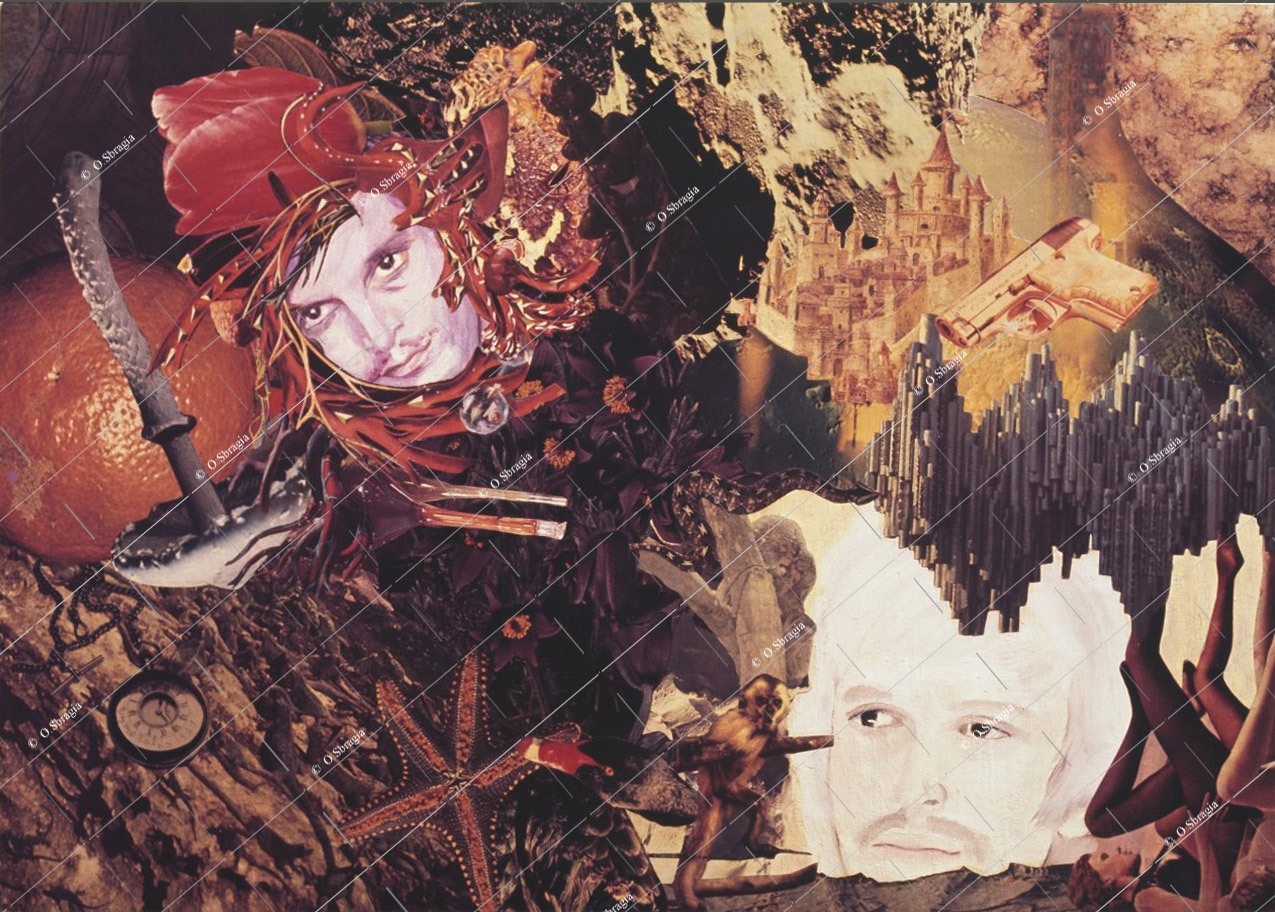
M.Bonuglia, actor, 1971
oil on panel

Roberto, 1988
oil on panel

B.Bardot, actress, 1965ca
oil on panel

Tot˛, actor, 1965ca
oil on panel

Rita Pavone, singer, 1965ca
oil on panel

Diamante,1957
oil on panel

Unknown, 1977
oil on panel

Unknown, 1977
oil on panel

Maria Grazia Buccella, actress, no date
Click on the image to enlarge
Click on the image to enlarge

Horse, 1966

Horse and Filly, 1976

Wild Horse, no date

Jumping Horses, no date
panel

Horse, 1973
panel

Horse, 1974
(15x29cm) panel

Horse's Head, 1974
(100x75cm) panel
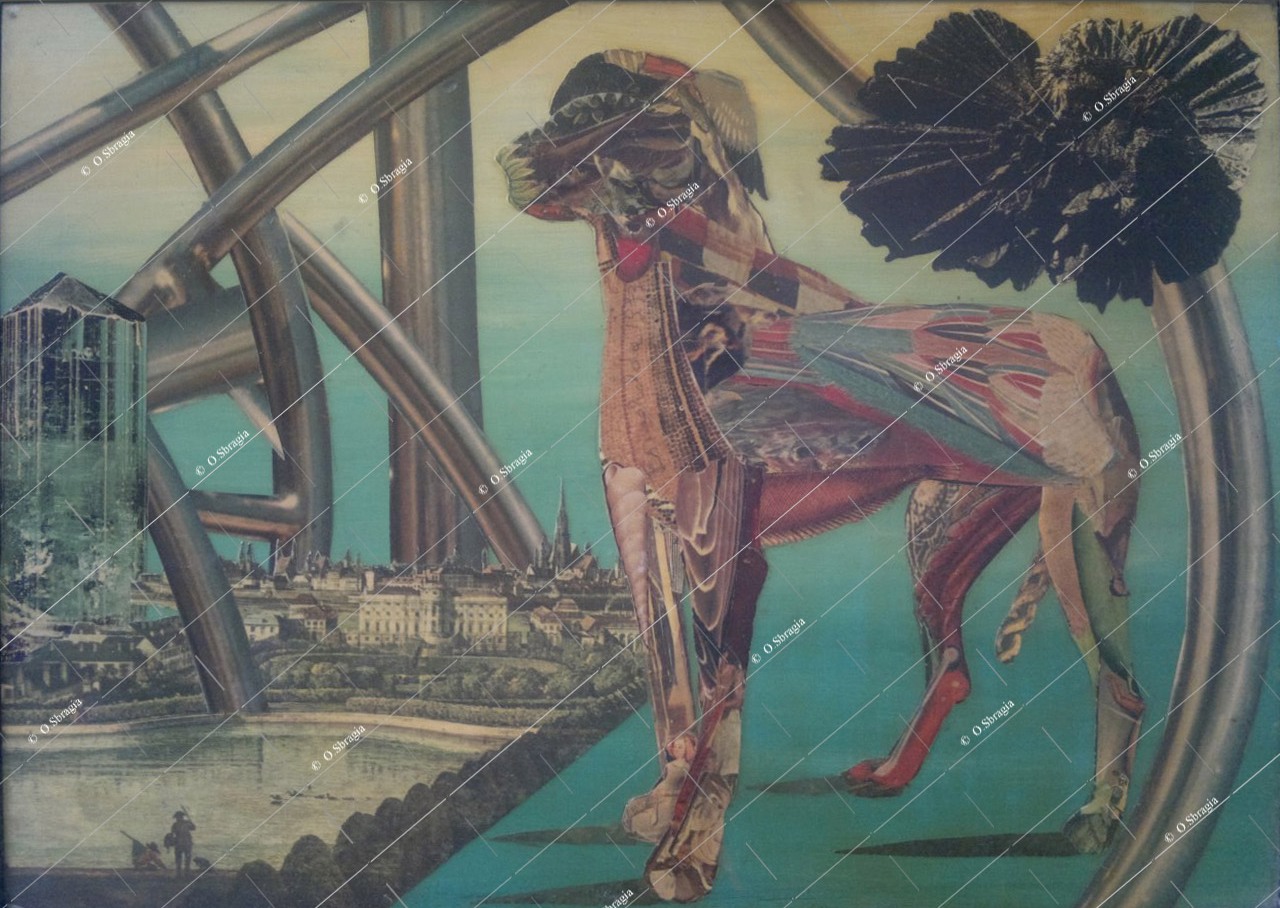
Dog, 1973
(30x21cm) panel
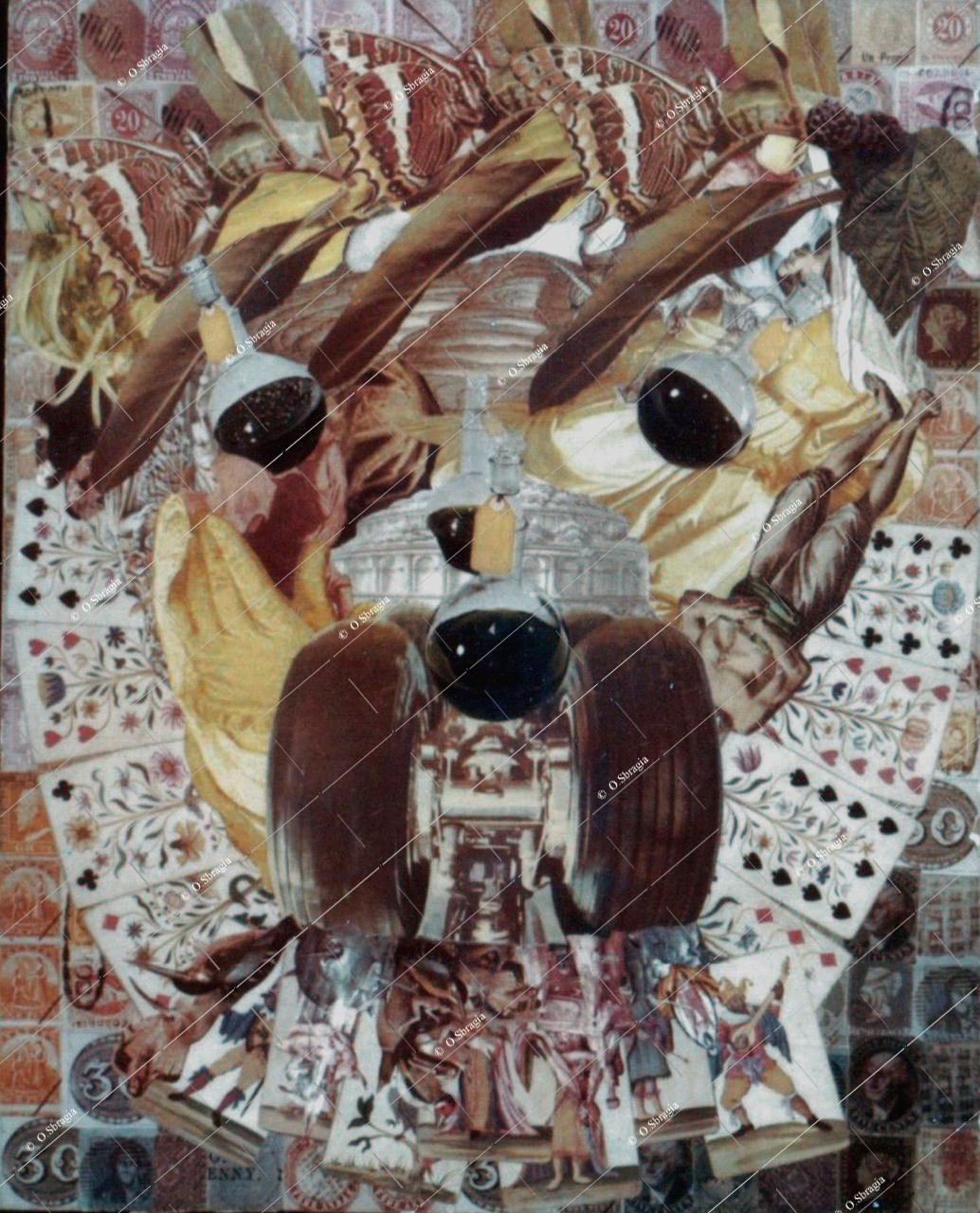
Schnauzer Head (Filicudi), no date

Deer's Head Gold Background, no date

Untitled, 1975
(33x48cm) cardboard
Birds

Untitled,
panel

Untitled,
panel

Untitled,
panel
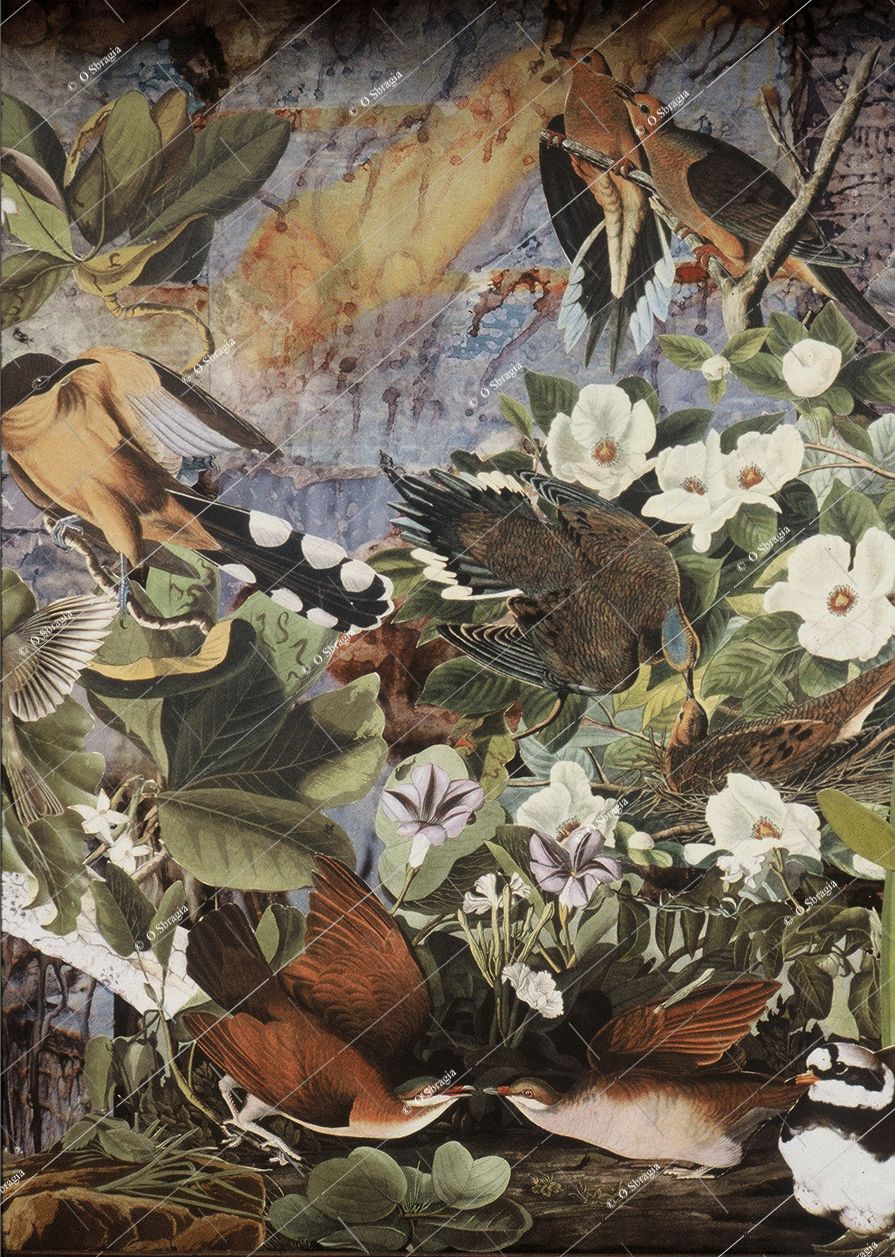
Untitled,
panel

Untitled,
panel

Untitled,
panel

Untitled,
panel

Untitled,
panel

Untitled,
panel
Click on the image to enlarge

Two Skeletons, 1977
(28x40 cm) cardboard

Reclining Woman, 1977
cardboard

Reclining Woman, 1977
cardboard

Seated Woman, 1977
(36x47cm) cardboard

Weeping Woman , no date
cardboard

Seated Woman, 1975
(25x35cm) cardboard

Knight, 1977
(23x35cm) cardboard

Arts and letters, 1986
(100x65cm) cardboard

Dancer, no date

Dancer, 1977
(36x46cm) on canvas

Skull, 1977
(36x47cm) on canvas
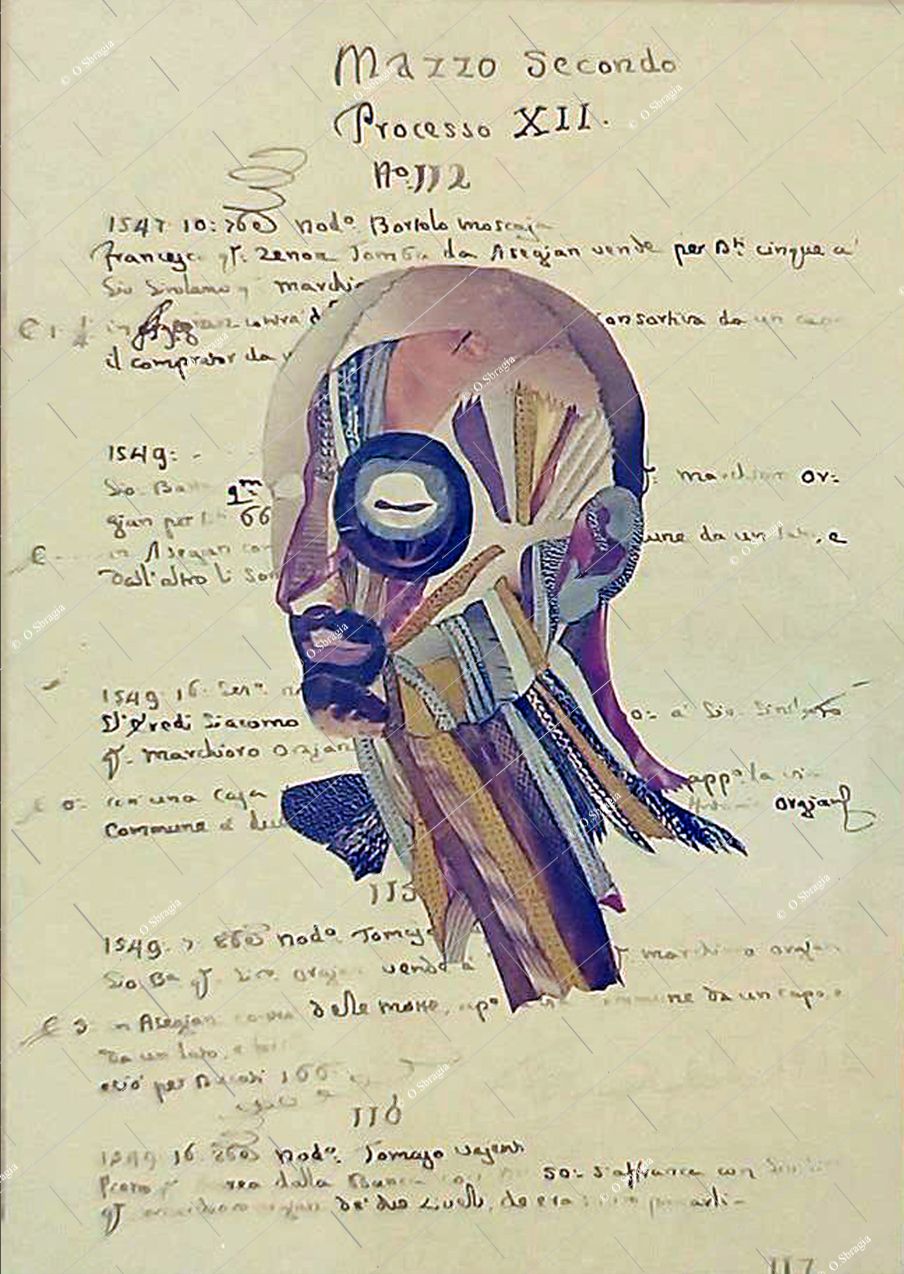
Skull, 1977

Series of Six Cavaliers, 1974
Click on the image to enlarge

Madonna, 1978
cardboard

Goldfish and Cavalier, 1978
cardboard
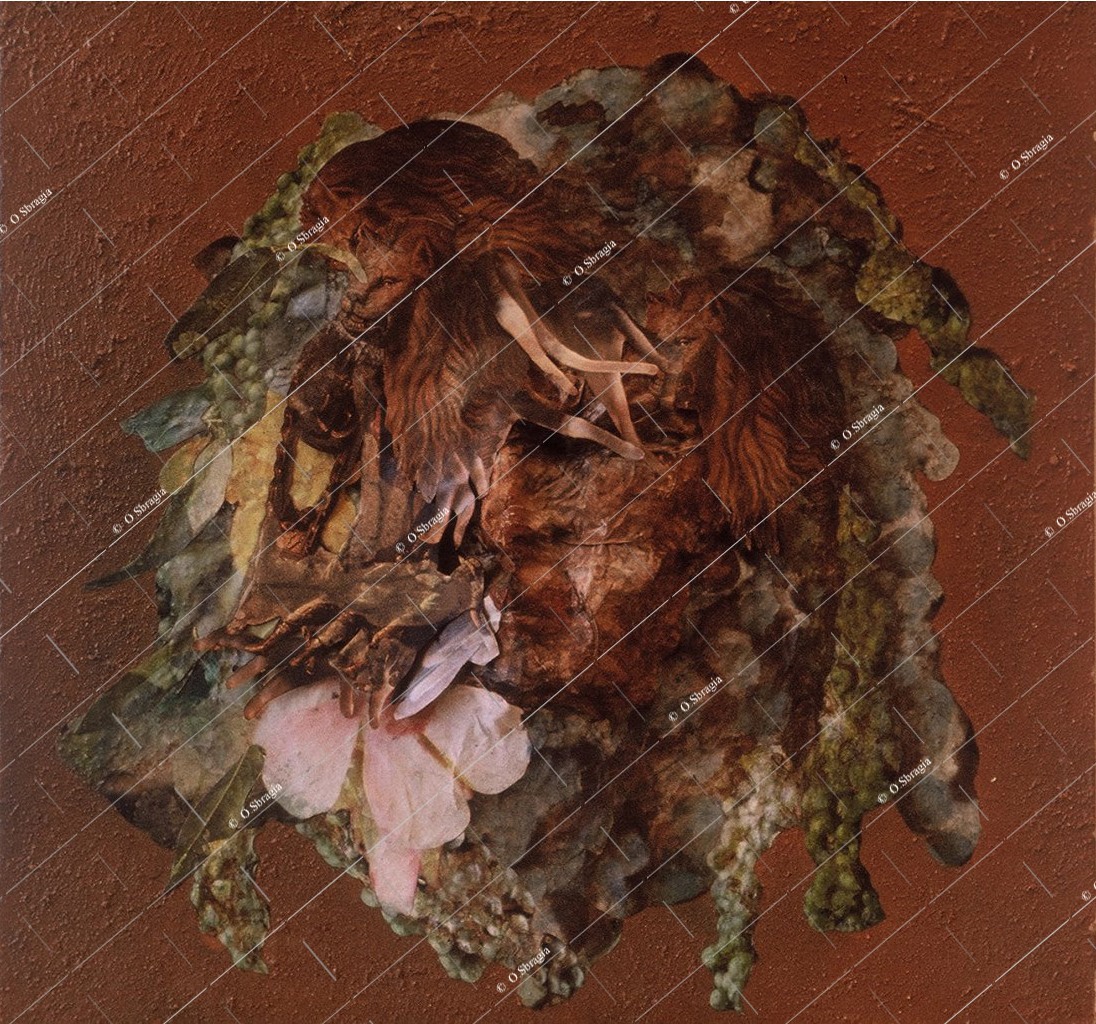
Untitled, 1978ca
(45x45cm) cardboard

Untitled, 1978ca
(60x60cm) cardboard

Red Parrot, 1978
cardboard

Caterpillar, 1978ca
(60x60cm) cardboard

Untitled, 1978ca
(45x45cm) cardboard

Untitled
cardboard

Untitled, 1978ca
(47x47cm) cardboard

Unborn Baby on blue paper, no date

Untitled, 1978
cardboard

Untitled, 1982
(60x60cm) cardboard

Untitled, 1984

Tiger, 1980
(67x95cm) cardboard
Click on the image to enlarge
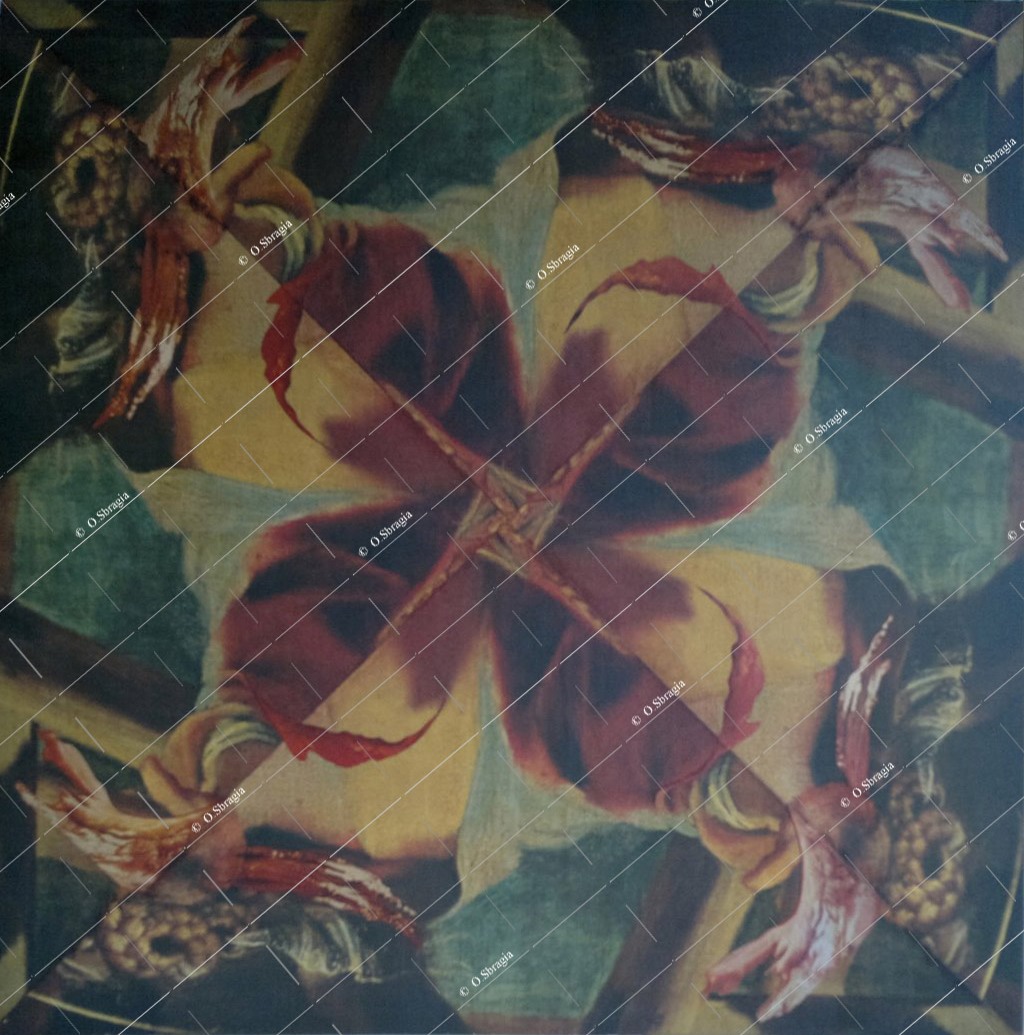
Barocci green, 1975
(65x65cm)

Barocci with rocks of Panarea, 1975
(65x65 cm)

Barocci white, 1975
(65x65 cm)

Barocci and rugby players, 1975ca

Hands and Hen's eye, 1975ca

Teatro Olimpico with Serpent, 1975
(55x55 cm)

Teatro Olimpico with Salamander, 1975

Untitled, 1975ca

Barocci small, 1975

Barocci small with serpents, 1975

Barocci small, 1975
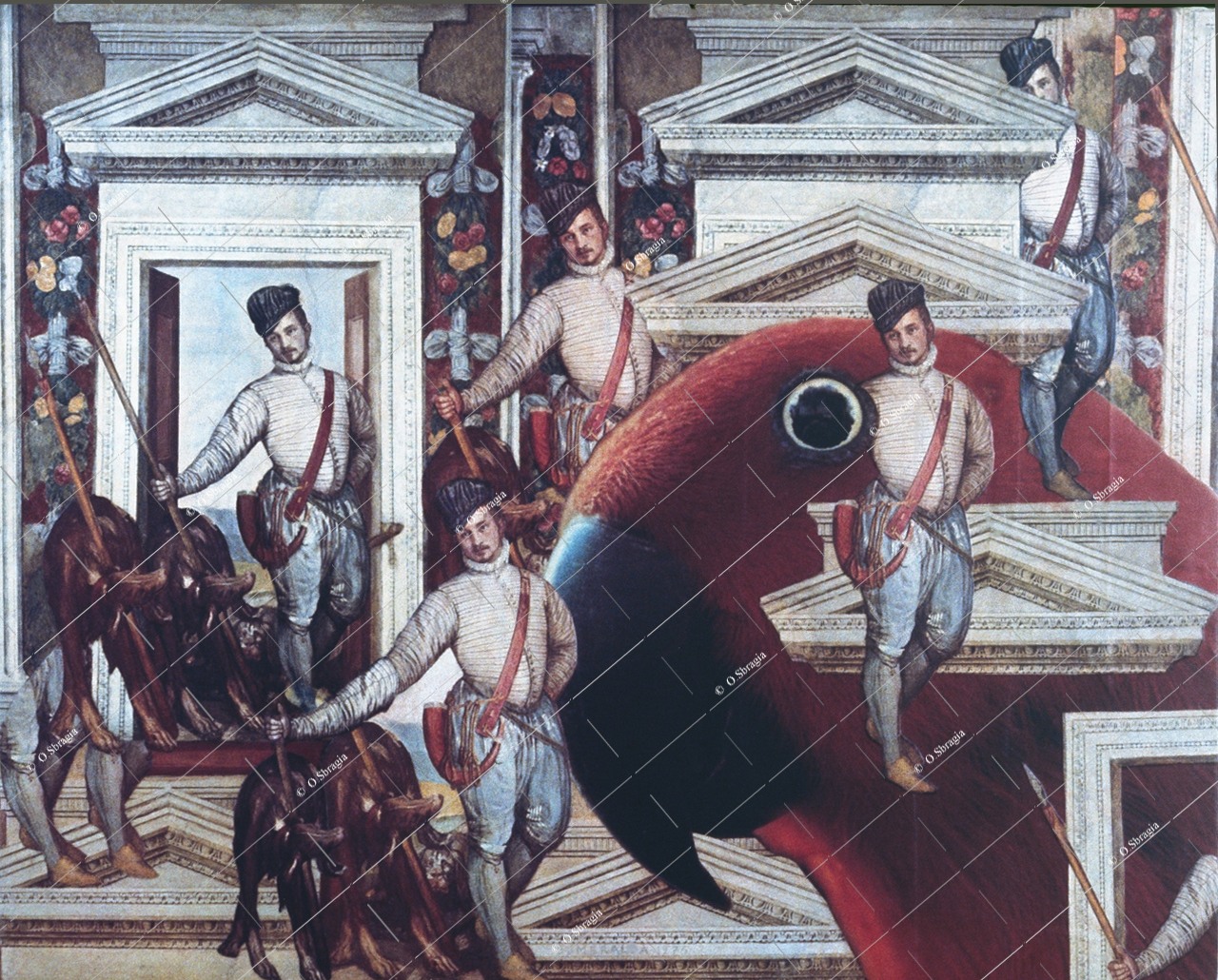
Veronese's Parrot, 1975

Faces at Venice, 1973ca

Faces at Venice, 1973ca

Eyes, 1976
(57x57cm) metal

Untitled, 1975
(50x60cm) panel
Click on the image to enlarge

Erotica I, 1977
(34x27cm) cardboard

Erotica II, 1977
(34x27cm) cardboard

Erotica III, 1977
(34x27cm) cardboard

Erotica IV, 1977
(34x27cm) cardboard

Erotica V, 1977
(34x27cm) cardboard

Mini-erotica I, 1977
(20x20cm) cardboard

Mini-erotica II, 1977
(20x20cm) cardboard
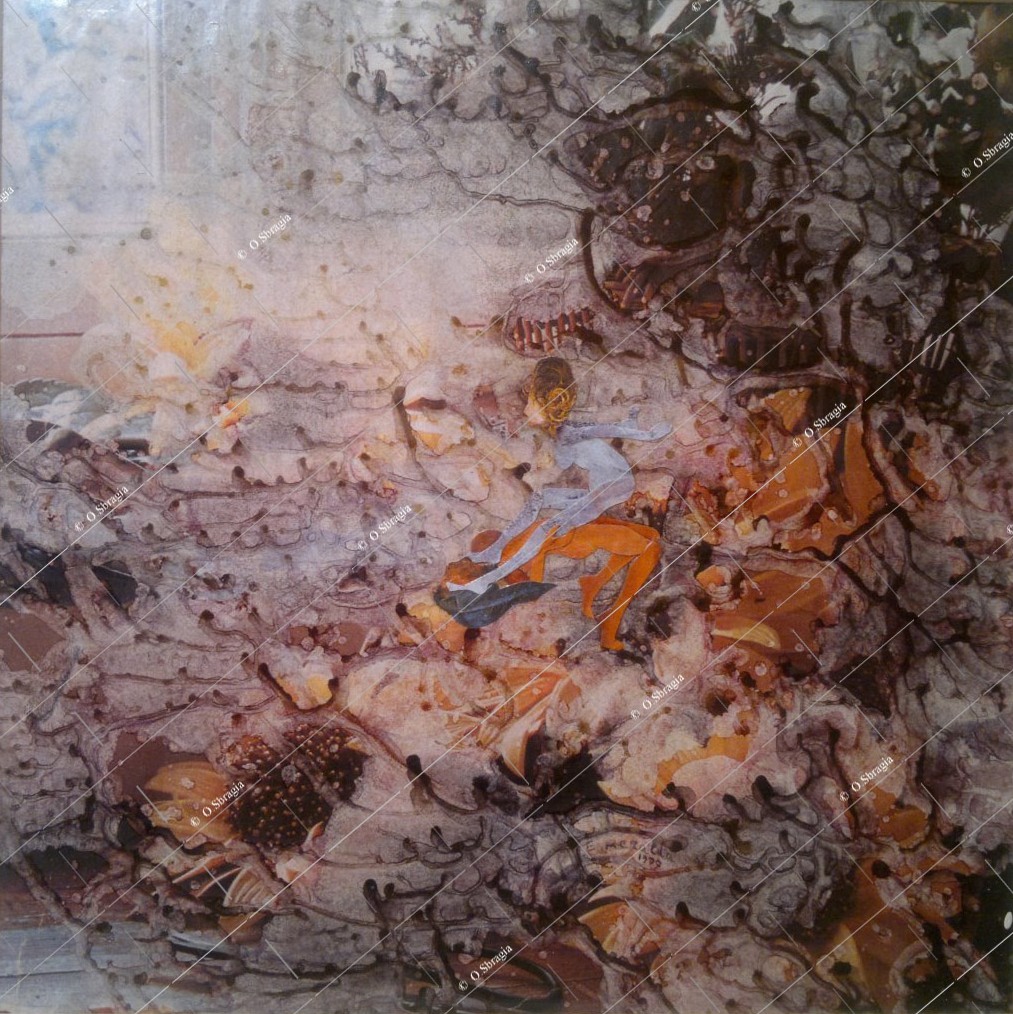
Mini-erotica III, 1977
(20x20cm) cardboard

Mini-erotica IV, 1977
(20x20cm) cardboard

Erotica, no date
cardboard

Erotica, no date
cardboard

Erotica, 1977
cardboard

Erotica, no date
cardboard

Erotica, 1977
(31x44cm) on canvas
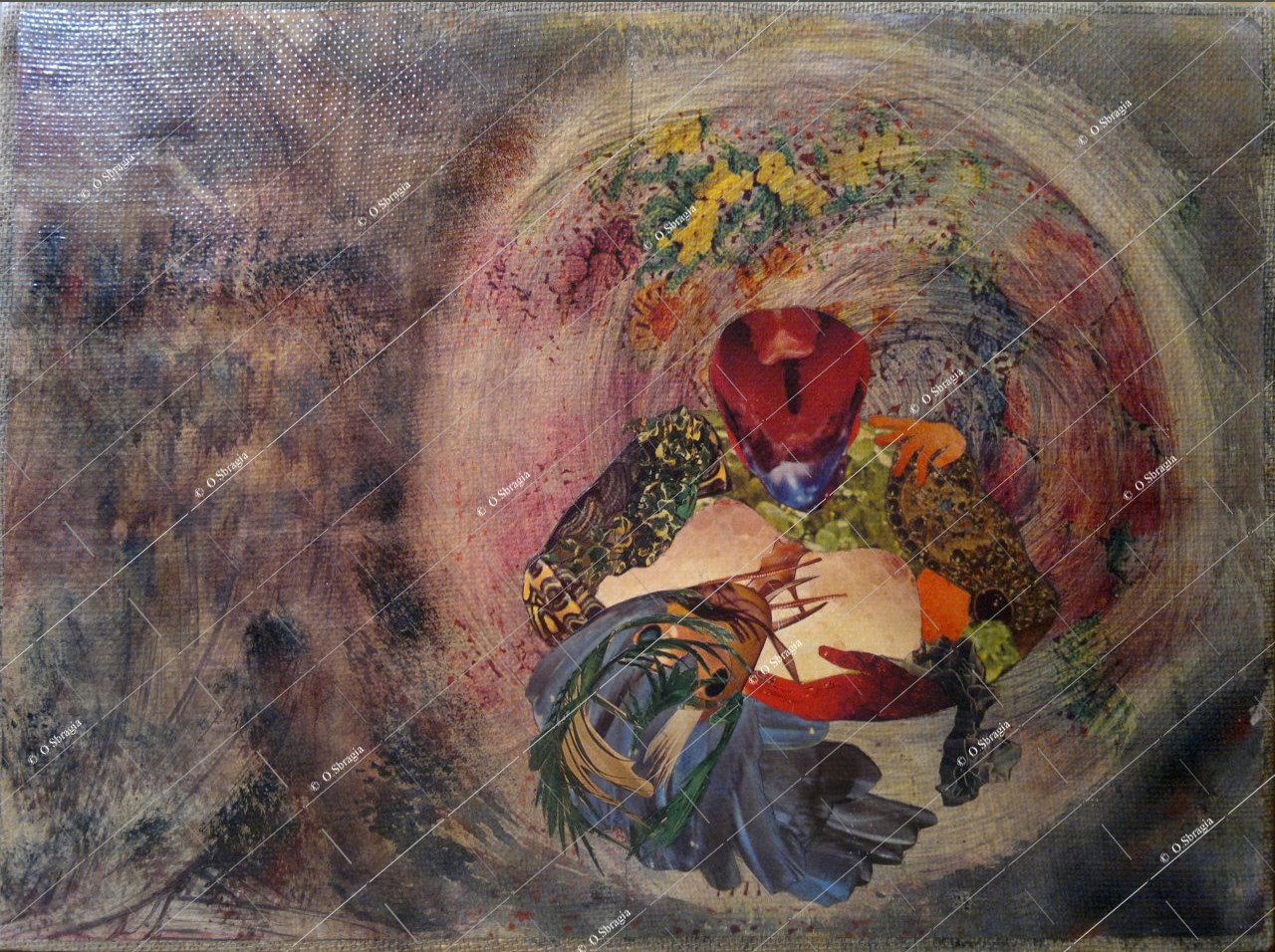
Vortex (Love), 1977
(45x33cm) on canvas

Erotica, 1977
(45x33cm) on canvas

Fellatio, 1972
(150x100cm) panel

Untitled, 1973
(200x50cm)

Reclining Woman, no date
(61x41cm) cardboard

Orgy, no date
Click on the image to enlarge

Male Torso (sketch V.Rossi) recto, 1987
(50x90cm) wood

Male Torso (sketch V.Rossi) verso,1987
(50x90cm) wood
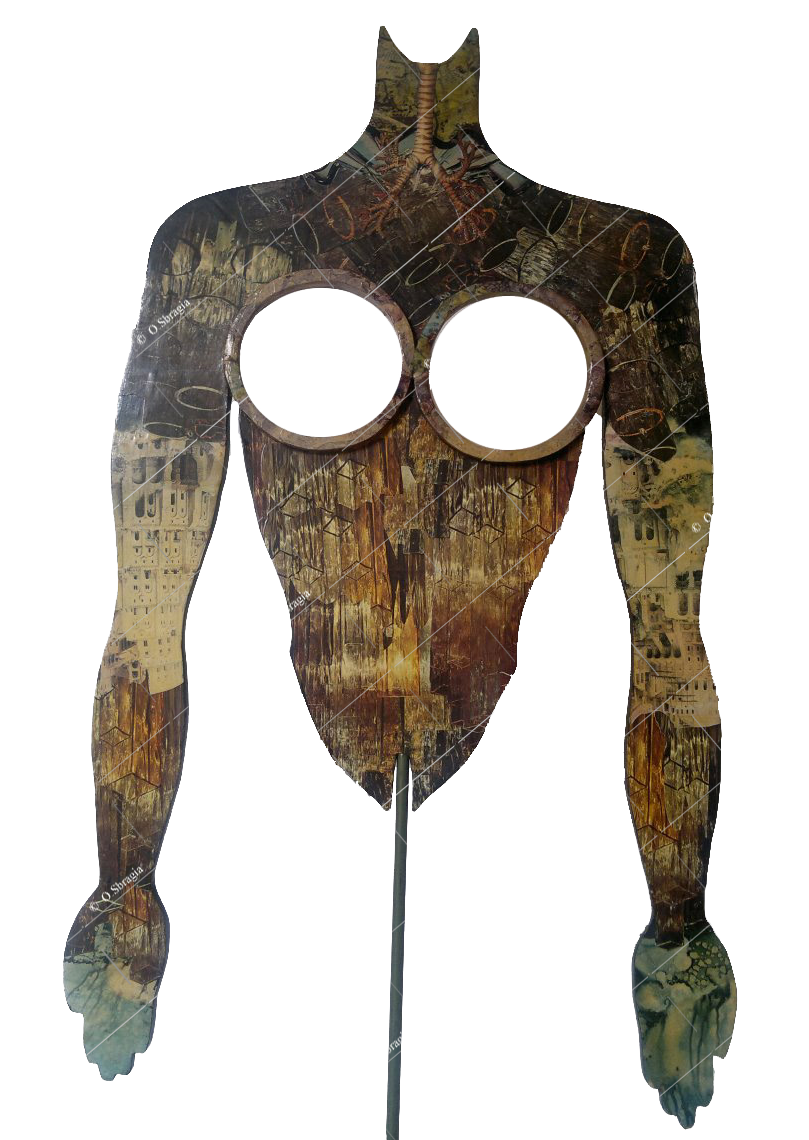
Female Torso (sketch V.Rossi) recto, 1987
(50x90cm) wood

Female Torso (sketch V.Rossi) verso, 1987
(50x90cm) wood

Ivo, 1973
(39x53 cm) wood
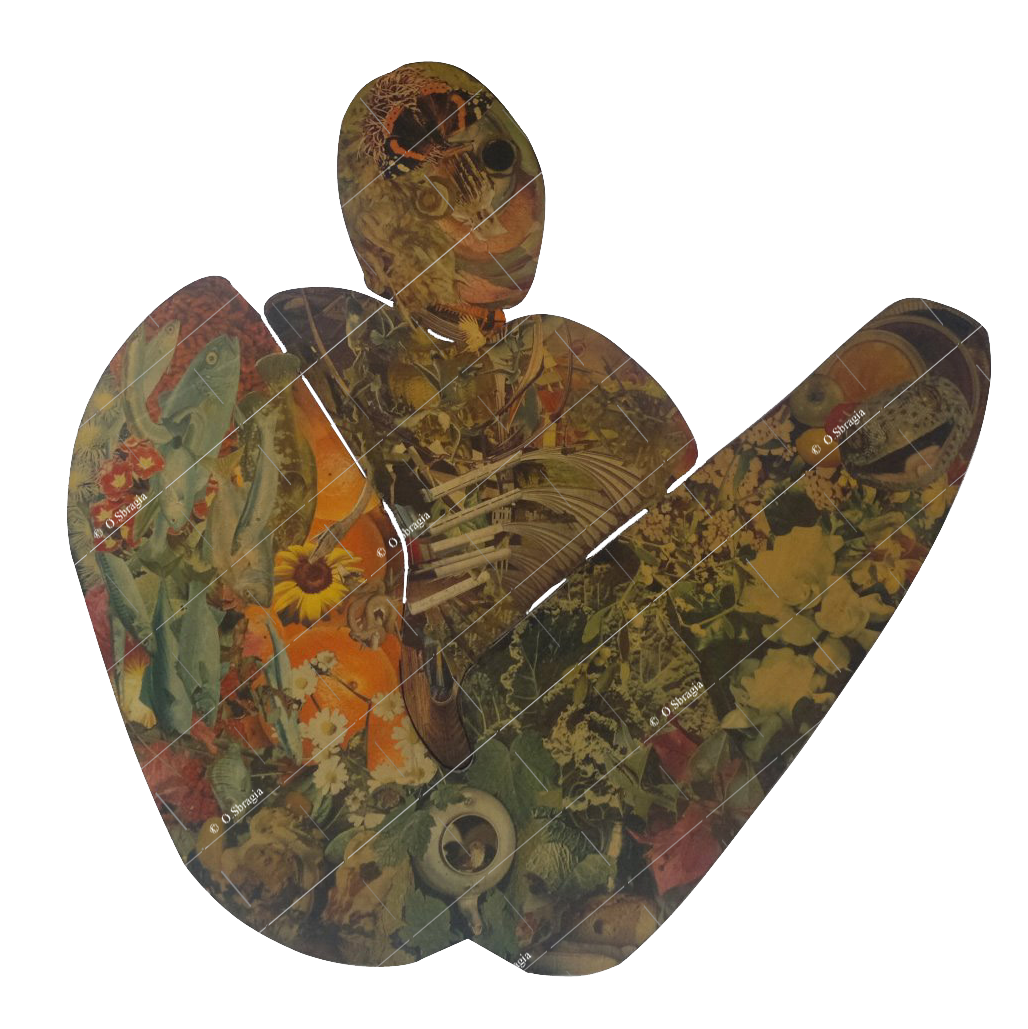
Hermaphrodite, 1973
(108x110cm) wood
Click on the image to enlarge
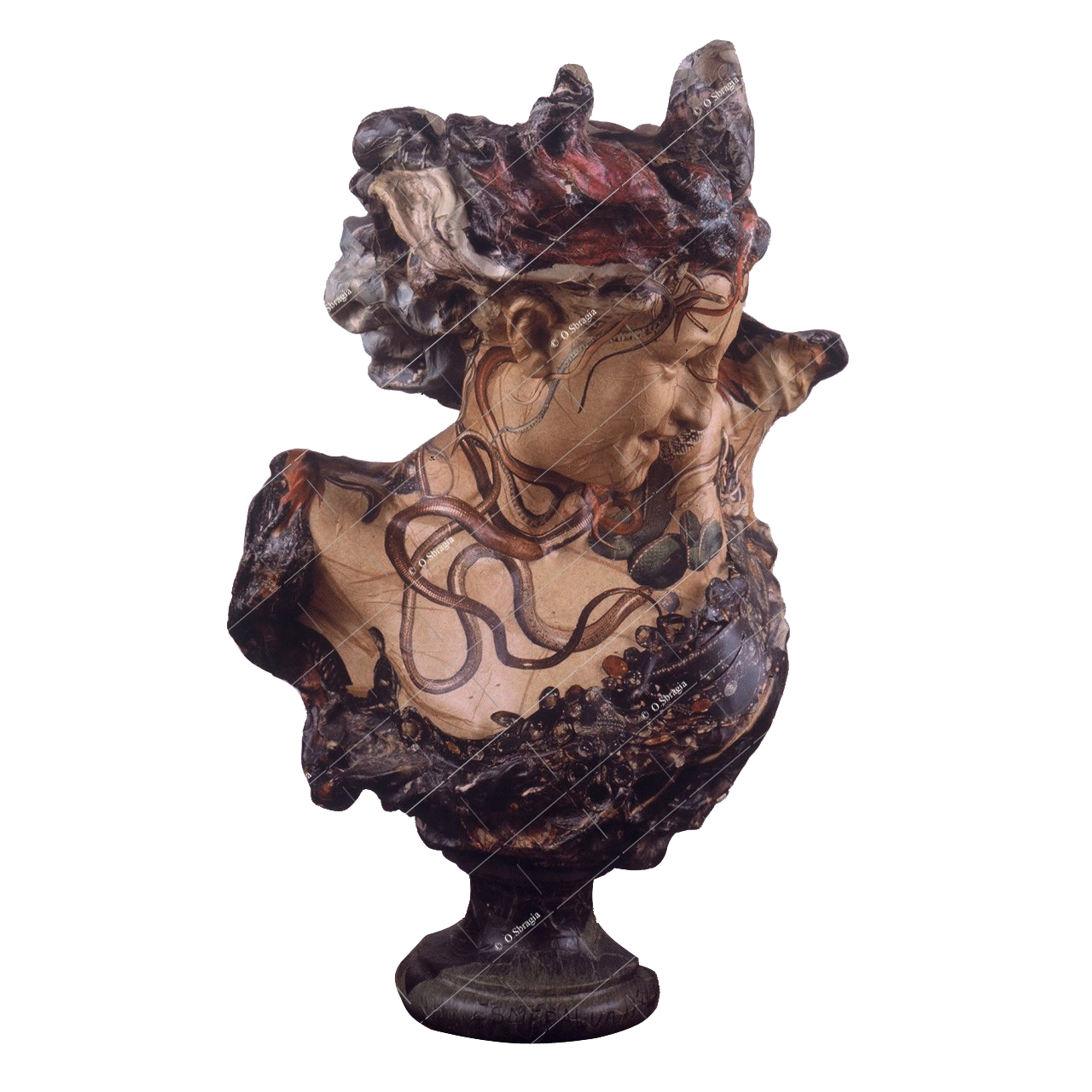
La Danse (A.Carpeaux), no date
plaster cast

L'ÚcorchÚ (P.Puget), no date
(14x28cm) plaster cast

L'ÚcorchÚ (P.Puget), no date
(14x28cm) plaster cast

Diane de Poitiers (J.Goujon), 1974
plaster cast

Young Girl (G.Niam), no date
plaster cast

Panther, no date
plaster cast
Click on the image to enlarge

Apples at the Window, 1977ca

Icarus, 1977
(24x39 cm)

Carpaccio's Musicians, 1977
(22x31 cm)

Flowers, 1977

Taj Mahal, 1977ca

Seated naked back, 1975
(48x74 cm)
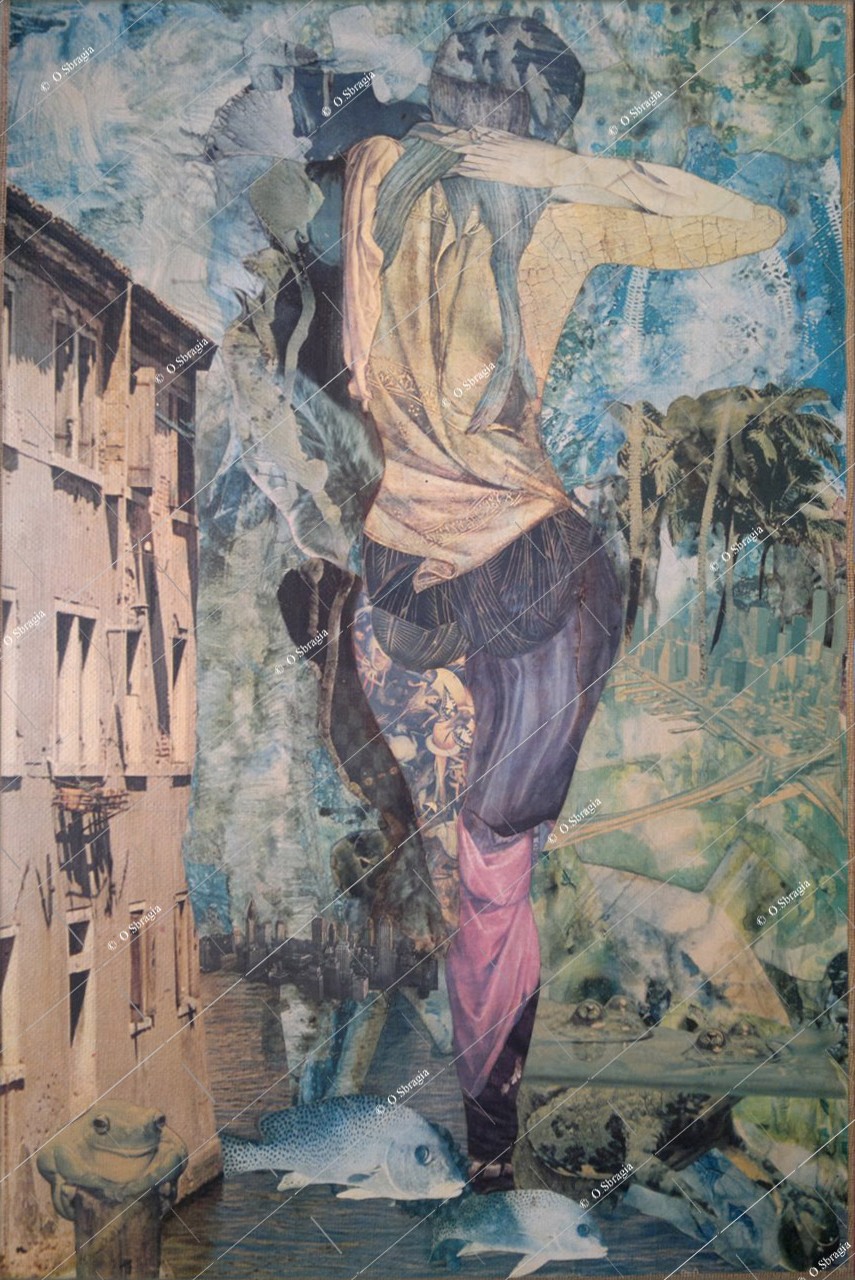
Naked back in lagoon (Venice), 1976
(48x74 cm)

The Campanile of Venice 1977ca
(14x21 cm)

Landscape, 1977

Erotica IX, 1977
(31x44 cm)

Vortex, 1977
(45x33 cm)

Erotica X 1977
(45x33cm) on canvas

Seabed Chaos, 1977
(50x35 cm)
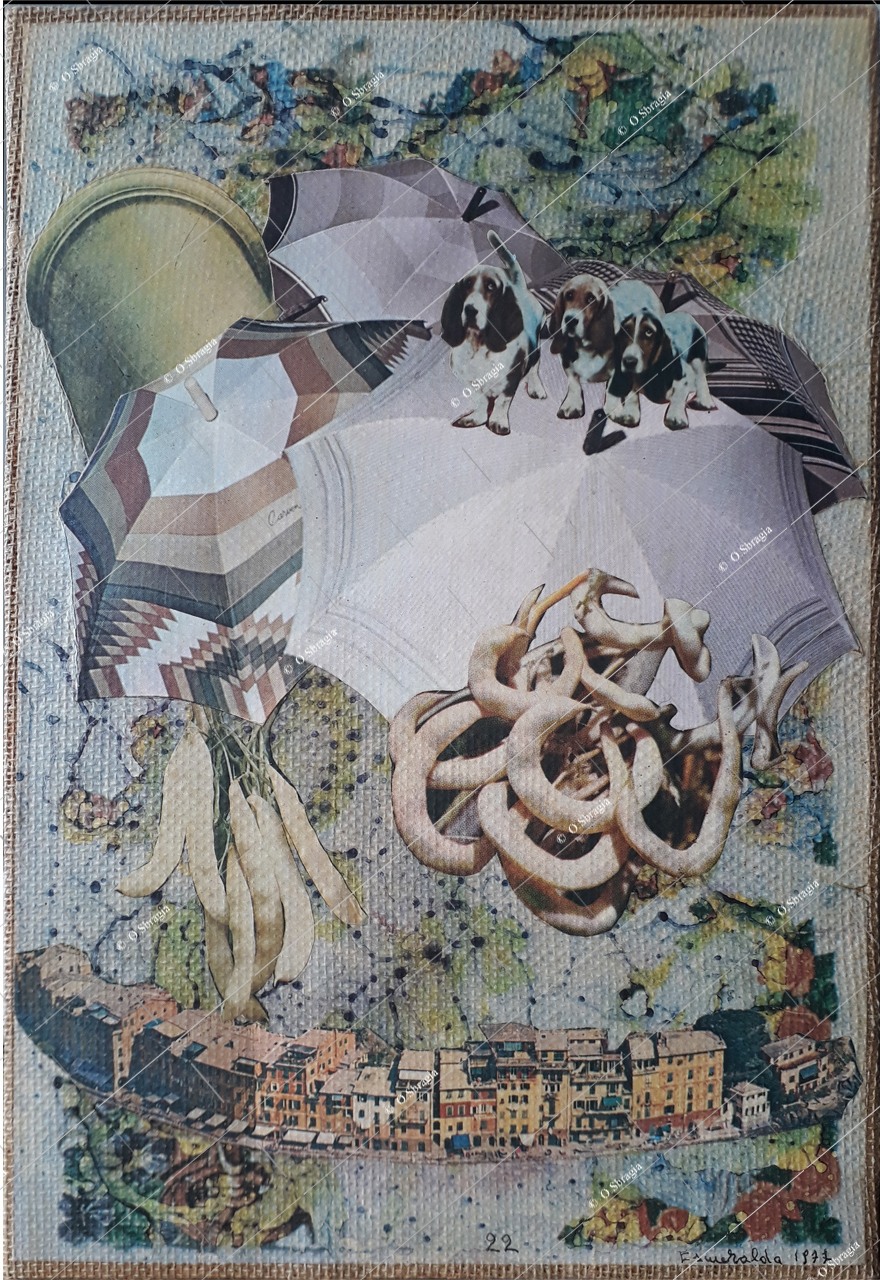
Umbrellas, 1977

Dancer, 1977
(36x46cm) on canvas

Skull, 1977
(36x47cm) on canvas

Untitled, 1978
(50x50 cm) cork
Click on the image to enlarge
Click on the image to enlarge

Architecture, 1975ca,
(60x40 cm)

Architecture, 1985
(71x100 cm)

Frogs in the Lagoon, no date
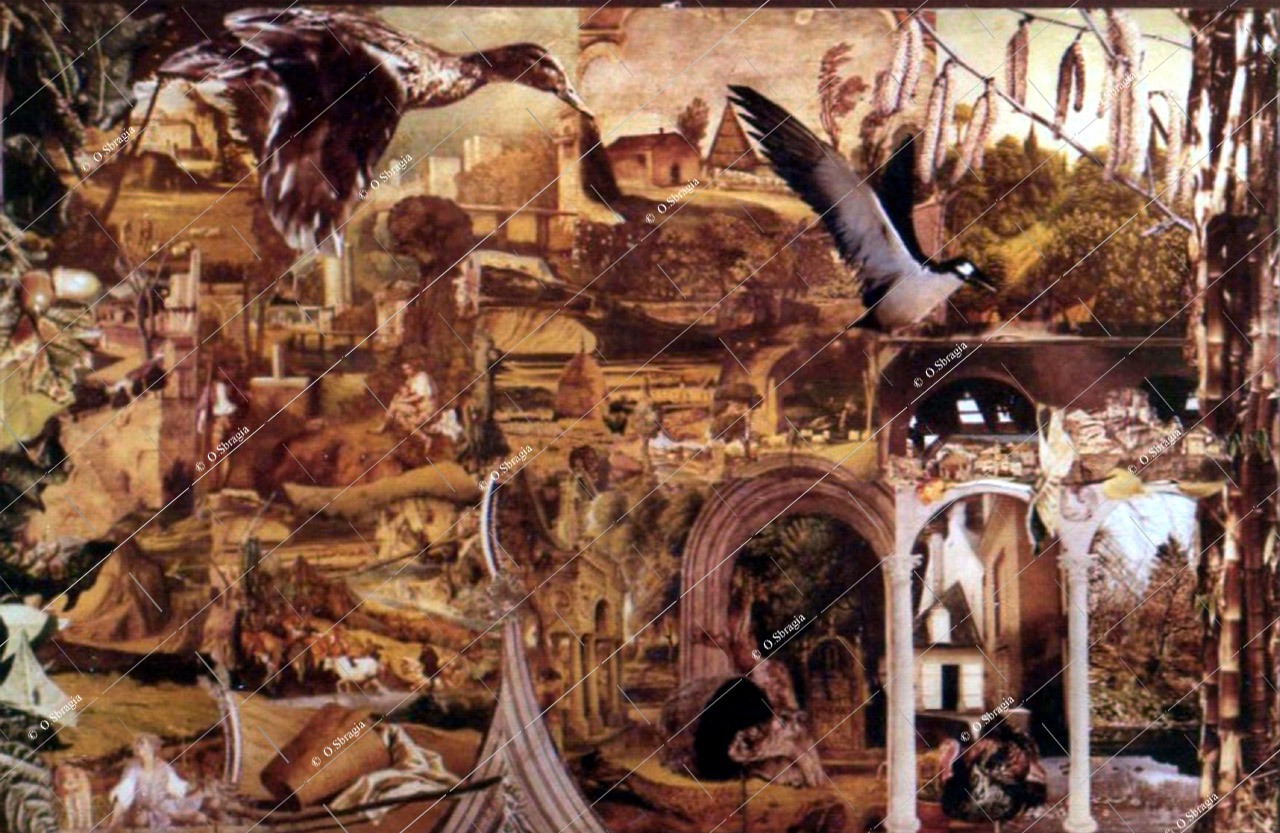
Ducks, no date
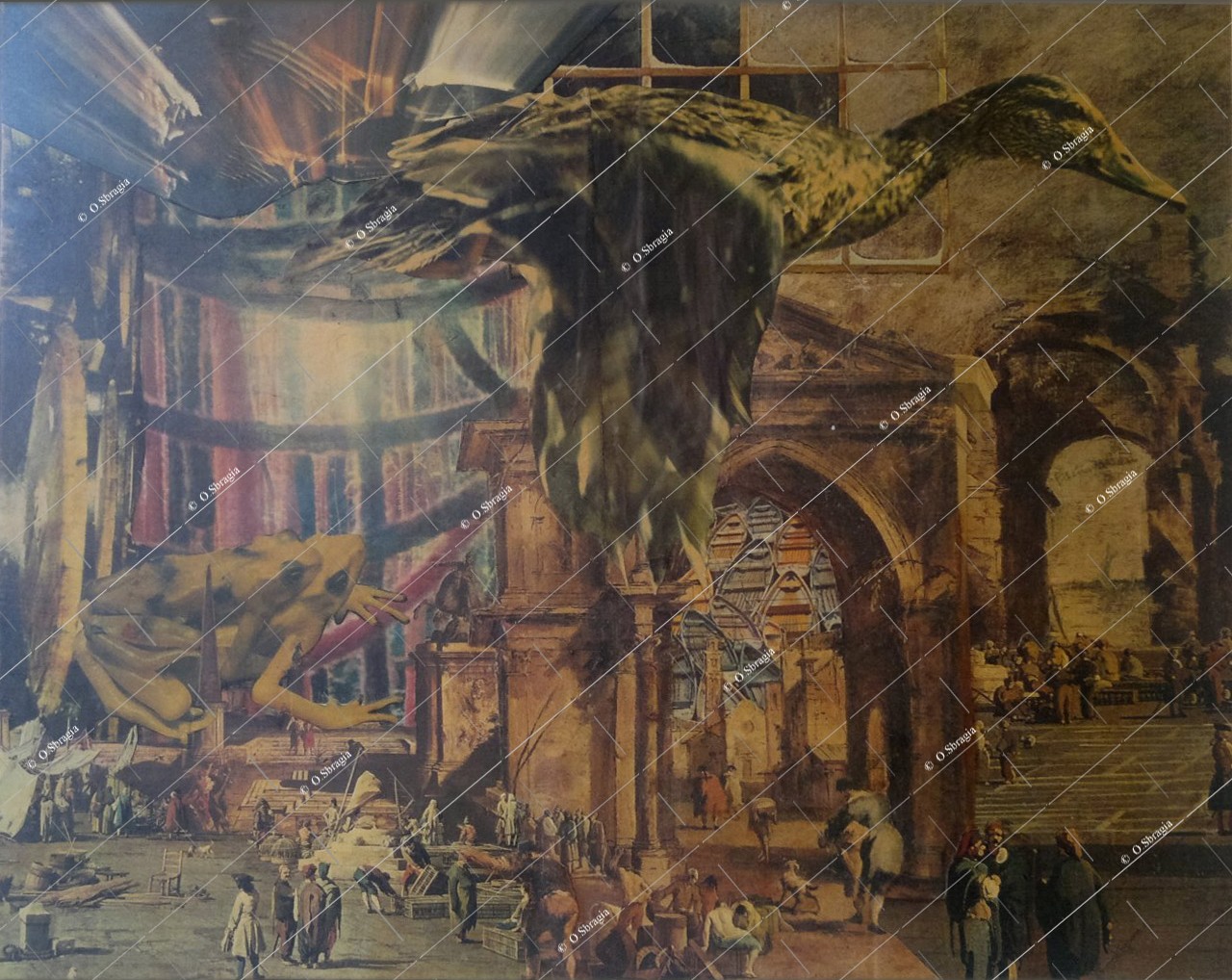
Venetian Dream, 1980ca
(51x42cm) panel

Untitled, 1975
(50x60cm) panel

The City, 1977
(49x58cm) panel

On The Beach (incomplete?) 1975ca
(27x44cm) cardboard

Red Spheres, 1975
(48x33cm) cardboard

Vienna, 1978
cardboard
Click on the image to enlarge

The Hand, 1975
(50x69cm) cardboard

The Creation, 1978

Eye, 1973ca
(29x19cm) cardboard

El Greco's Hand, no date
(40x60cm)

Drop of Blood, 1975
(40x70 cm)

Toucans, no date
(60x50 cm) panel

Snakes on Carpaccio, 1978

Oval, 1972

Rolls Royce, no date
panel

Dreams like transparent water, 1976
(32x24cm)

The Wolf, no date

Apollon of Panarea, no date

Untitled, 1980
cardboard

Ritratto di Procuratore, 1977
cardboard
Click on the image to enlarge

Carpaccio Gold Background, 1986
(57x40cm) cardboard

O, 1986
(54x54 cm)

The Promenade, 1986
(80x50cm) panel
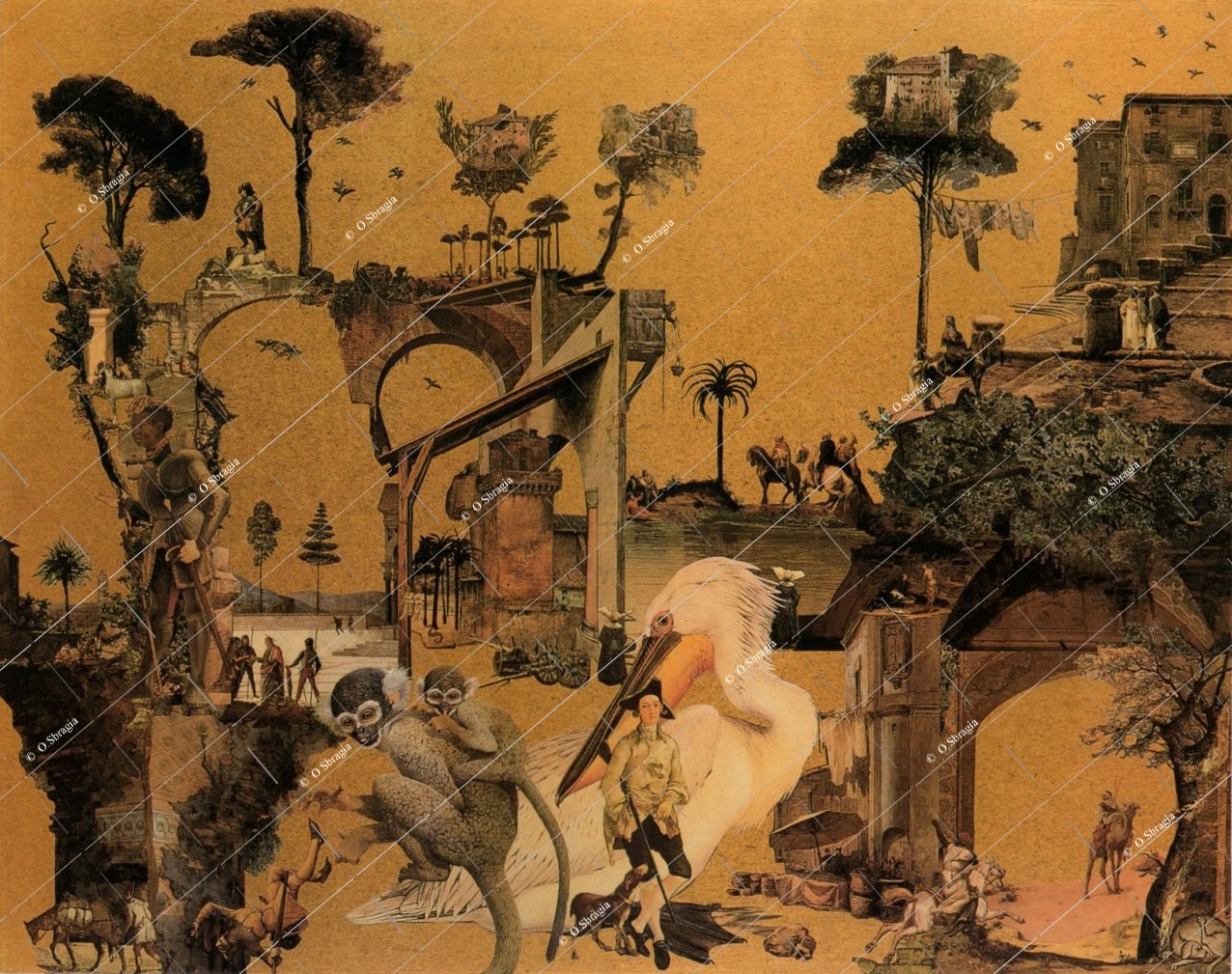
Rome, 1986
(120x100cm) panel

The Owl and The Angel, 1986
(200x90cm) panel
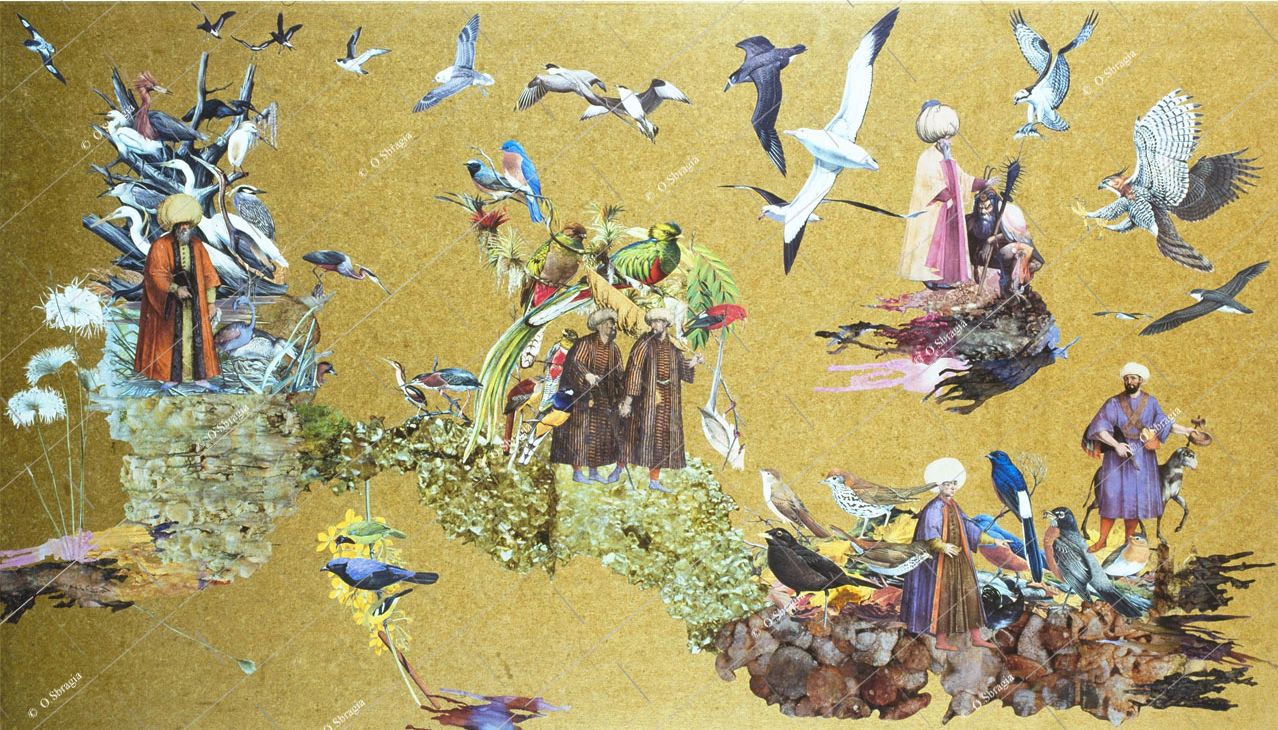
Untitled, 1985
(140x80cm) panel

Untitled, 1985
(140x80cm) panel

St.George and The Dragon, 1988
(design by Pierre Peyrolle)
(149x50 cm)
Maquette for an altar at Mira (Venice)

Cocktail, 1981

Untitled, no date
Click on the image to enlarge

Oriole, no date

Bird with flowering branch, no date

Scarlet Ibis and Spoonbill, no date

Flight of Swans, no date

Songbird on a Branch, no date

Rooster Gold Background, no date

Pair of Herons 1986
(53x150cm) panel

Swallow, no date
(100x100cm) panel

The Prey, 1981
(100x60cm) panel

Kite, 1981

Volture, 1981

Sandpiper, 1981
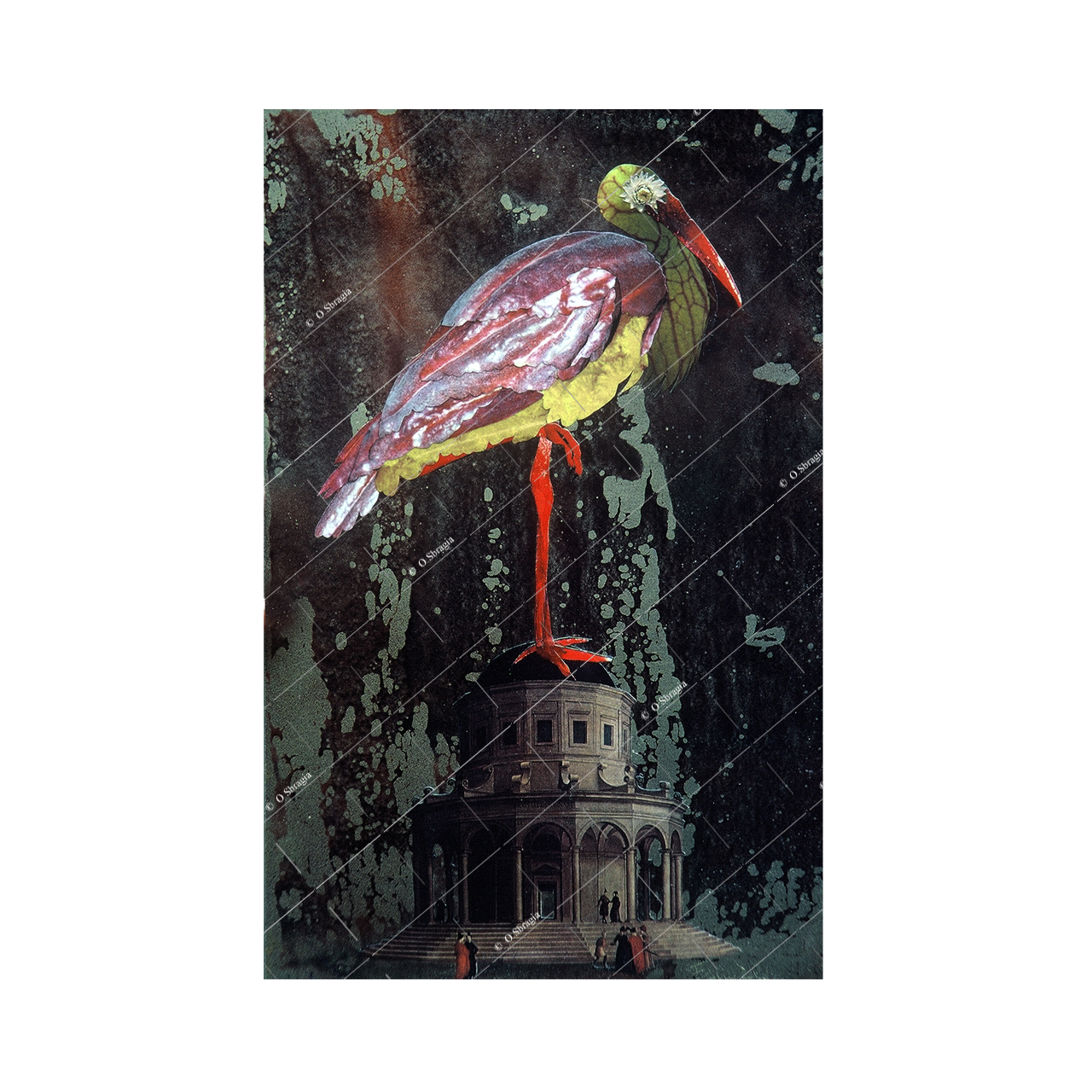
Stork, 1981

Rhea,1981

Owl 1981

Hawk, 1981

Turaco, 1981
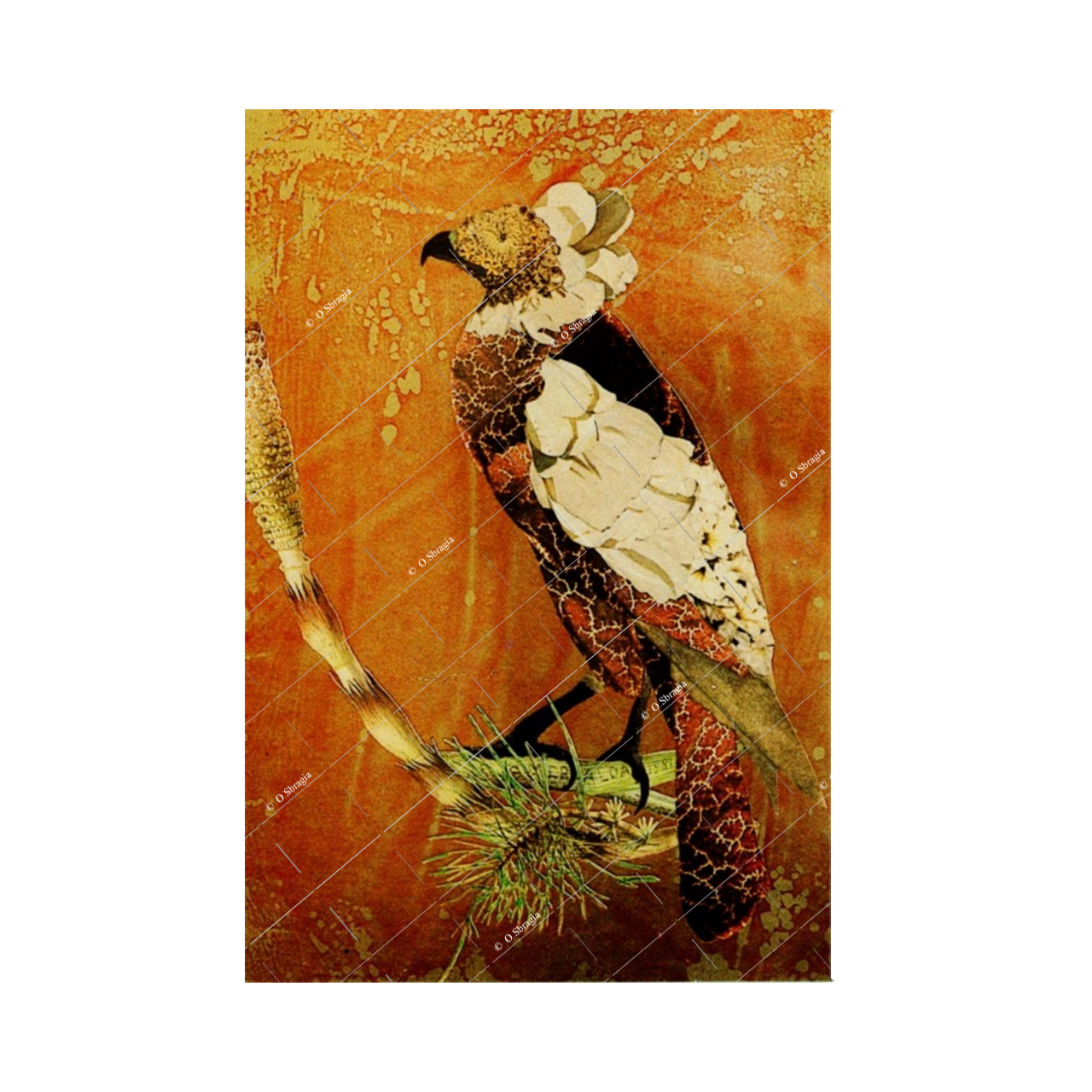
Hawk, 1981

Guineafowls, 1981
(23x27cm) cardboard

Stork, 1987
Click on the image to enlarge

Untitled, 1984

Still Life, 1986
(48x34cm)

Untitled, 1986

Untitled, 1986

Untitled, 1986

Untitled, 1986
(51x36cm)
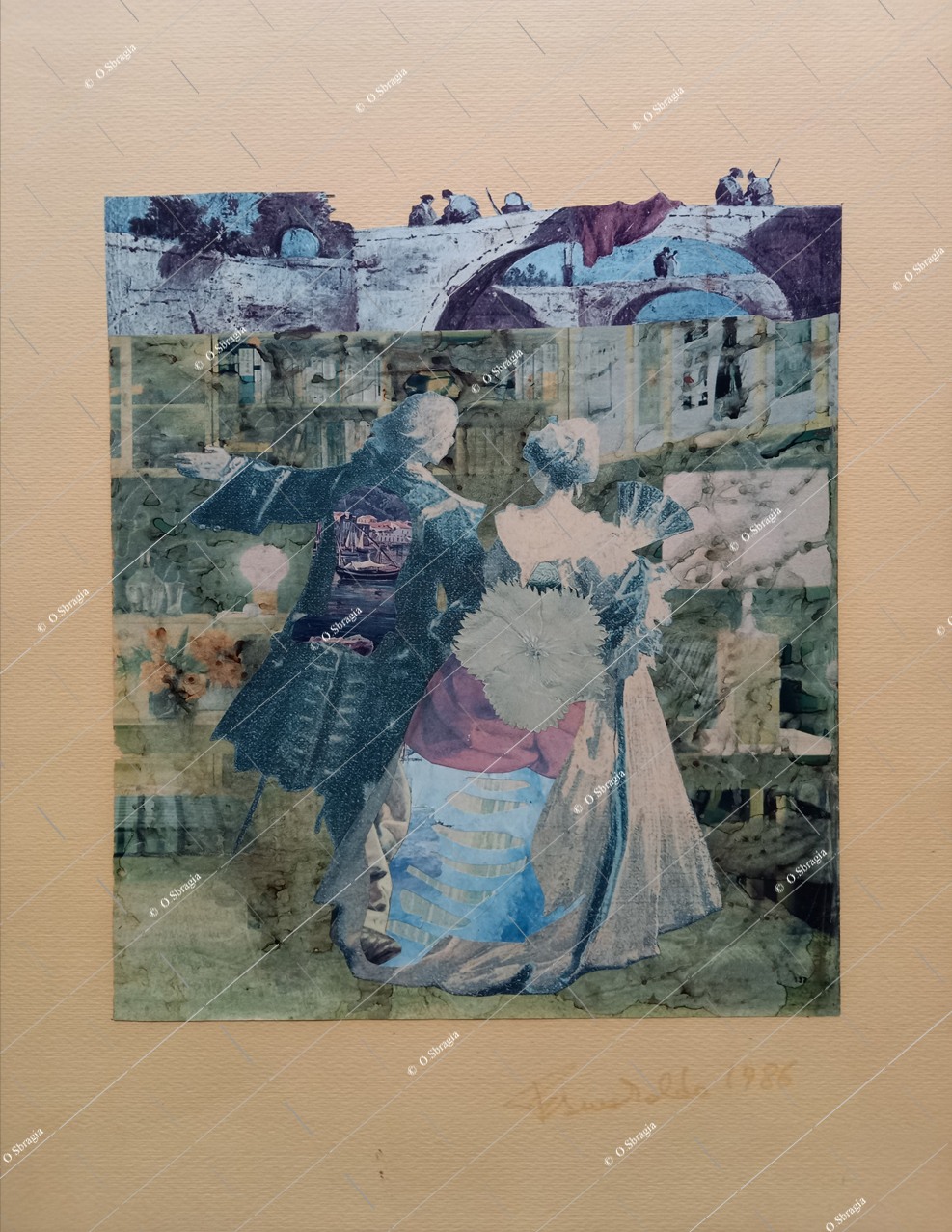
Untitled, 1986
(51x36cm)

Les derniers adieux Ó Bonaparte, no date
(18x25cm)

Untitled, no date
(31x38cm)

Untitled, no date
(30x39cm)

Untitled, no date
(82x60cm)

Untitled, 1984

Untitled, 1984

Untitled, 1984

Untitled, 1984

Untitled, 1984

Untitled, 1984

Untitled, 1984

Untitled, 1984

Untitled, 1984

Untitled, 1984

Untitled, 1984

Untitled, 1984
Click on the image to enlarge

Cheval ÚcorchÚ (I.Bonheur), Unfinished 1988

Cheval ÚcorchÚ (I.Bonheur), Unfinished 1988

Card in memory of Esmeralda
from her aunt
Anna Maria Cicogna Mozzoni Volpi
1988
Click on the image to enlarge
.
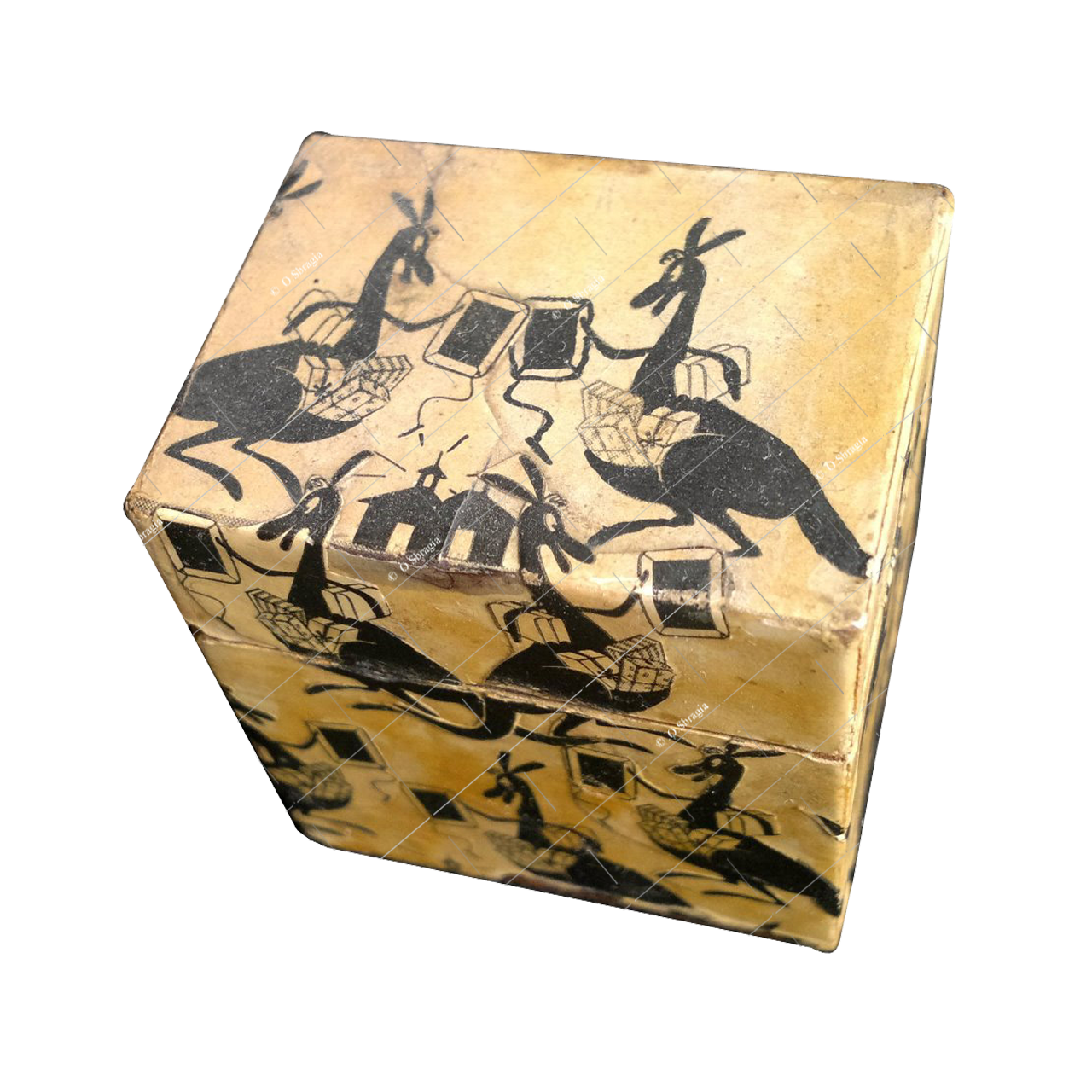
Matchbox, 1940ca
(5x4x5hcm) wood

Box 1, 1984
(° 25cm) wood

Box 2, 1984
(11x25cm) wood

Box 3, 1985
(° 24x8cm) wood

Box 4, 1988
(° 26x13cm) wood

Box 5, 1988
(° 21x12cm) wood
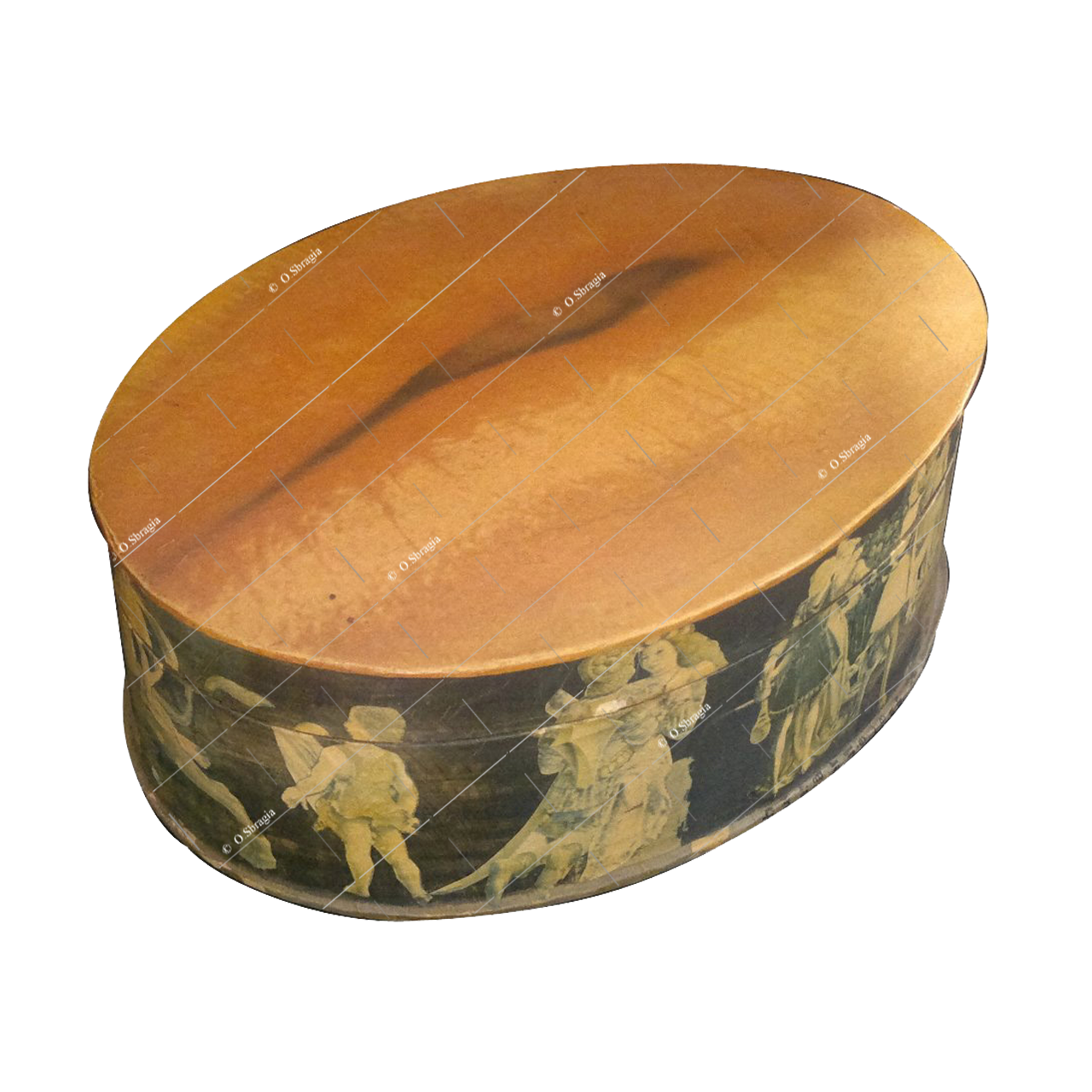
Box 6, no date
(15x20x7cm) wood
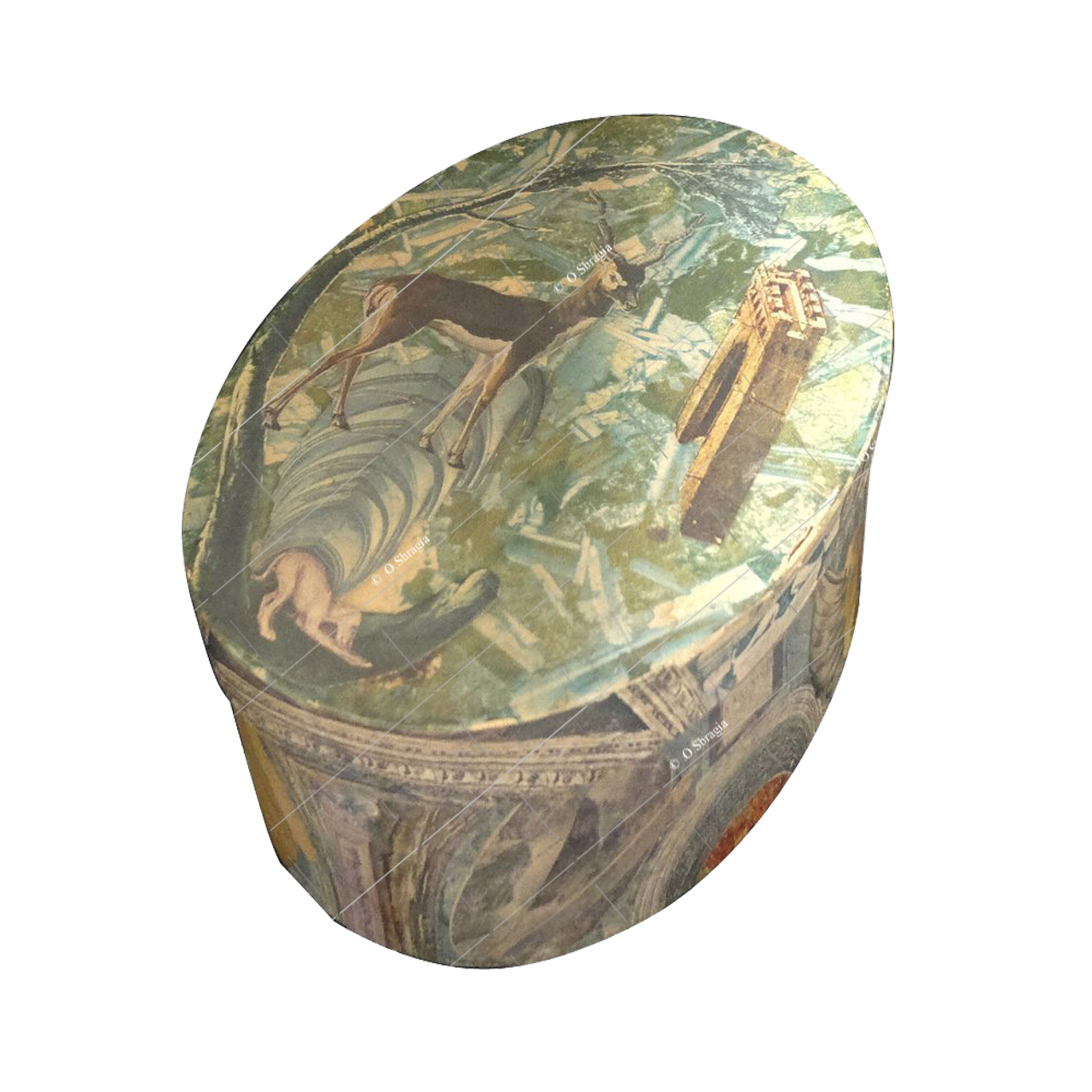
Box 7 Sistine Chapel, 1977ca
(16x11x7) wood

Box 9, 1984
(° 25cm) wood

Box 10, 1984
(15x25cm) wood

Box 11, 1984
(15x25cm) wood

Box 12, 1984
(15x25cm) wood

Box 13, no date
(° 21x5cm) wood
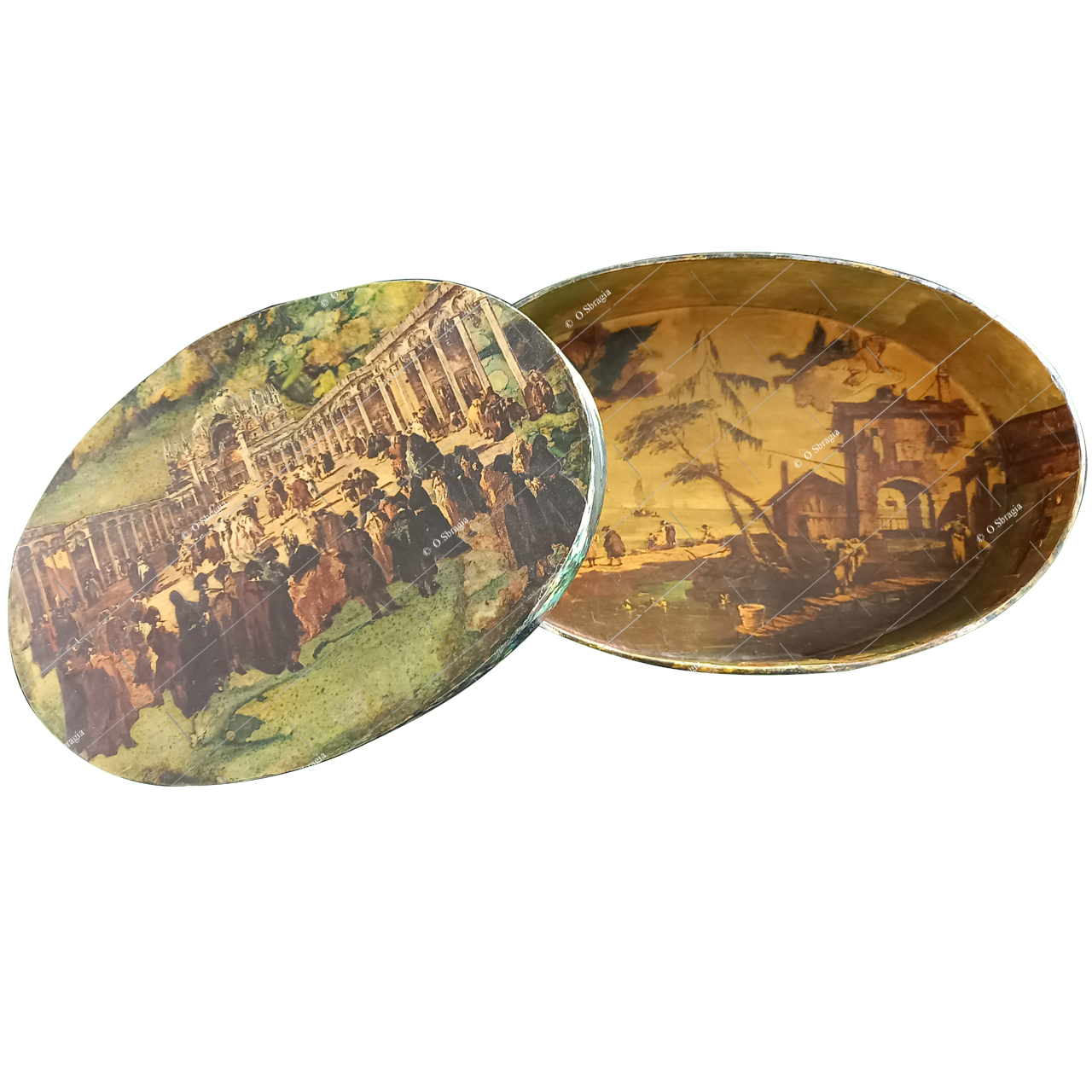
Box 14, 1984
(21x13x5 cm) wood
Click on the image to enlarge
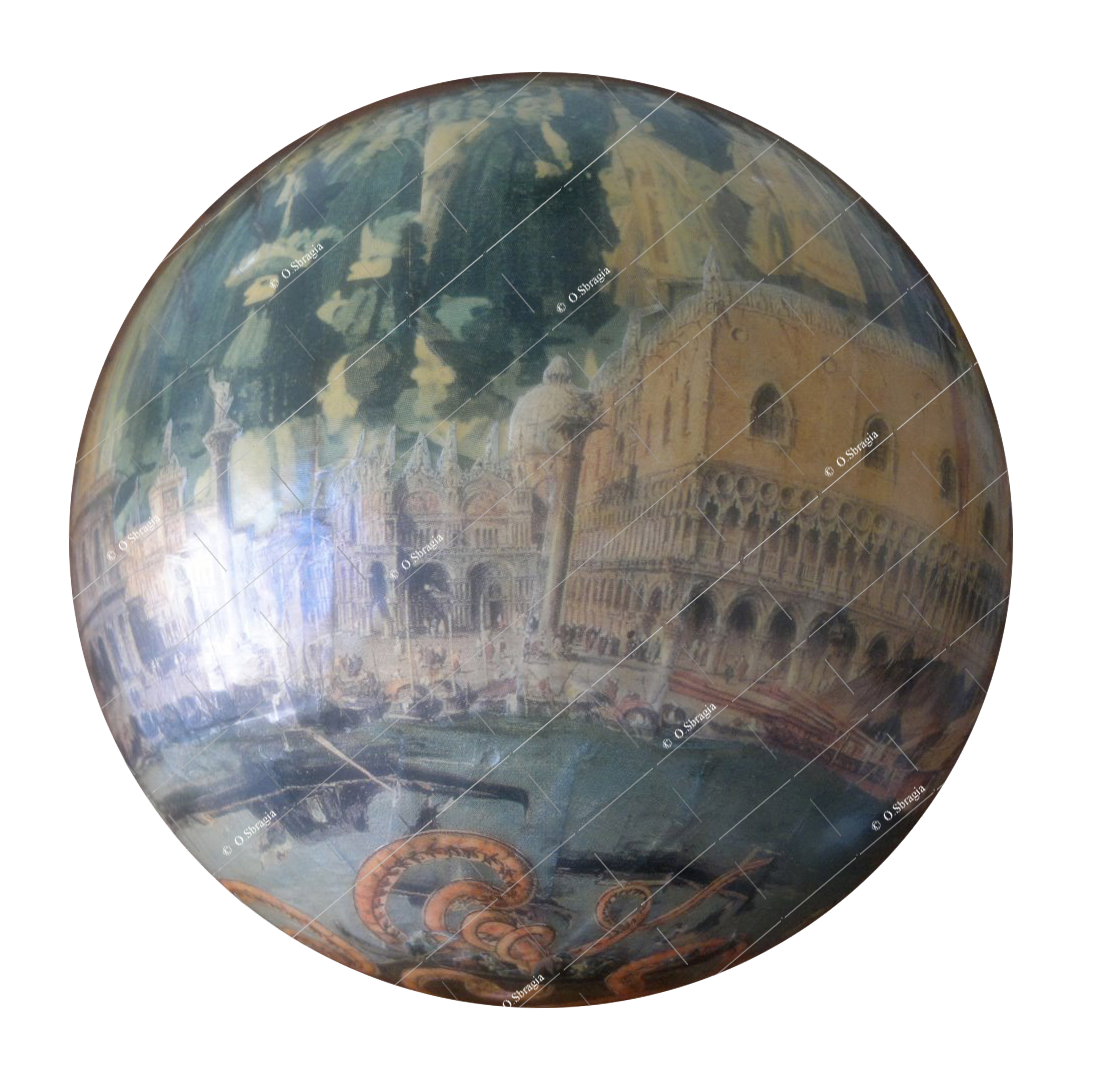
Sphere, 1987
(°11cm) wood

Sphere, 1978
(° 22cm) wood

Sphere, 1985
(° 20cm) wood

Sphere, no date
(° 11cm) wood

Sphere, no date
(° 11cm) wood

Sphere, 1973
(° 23cm) wood
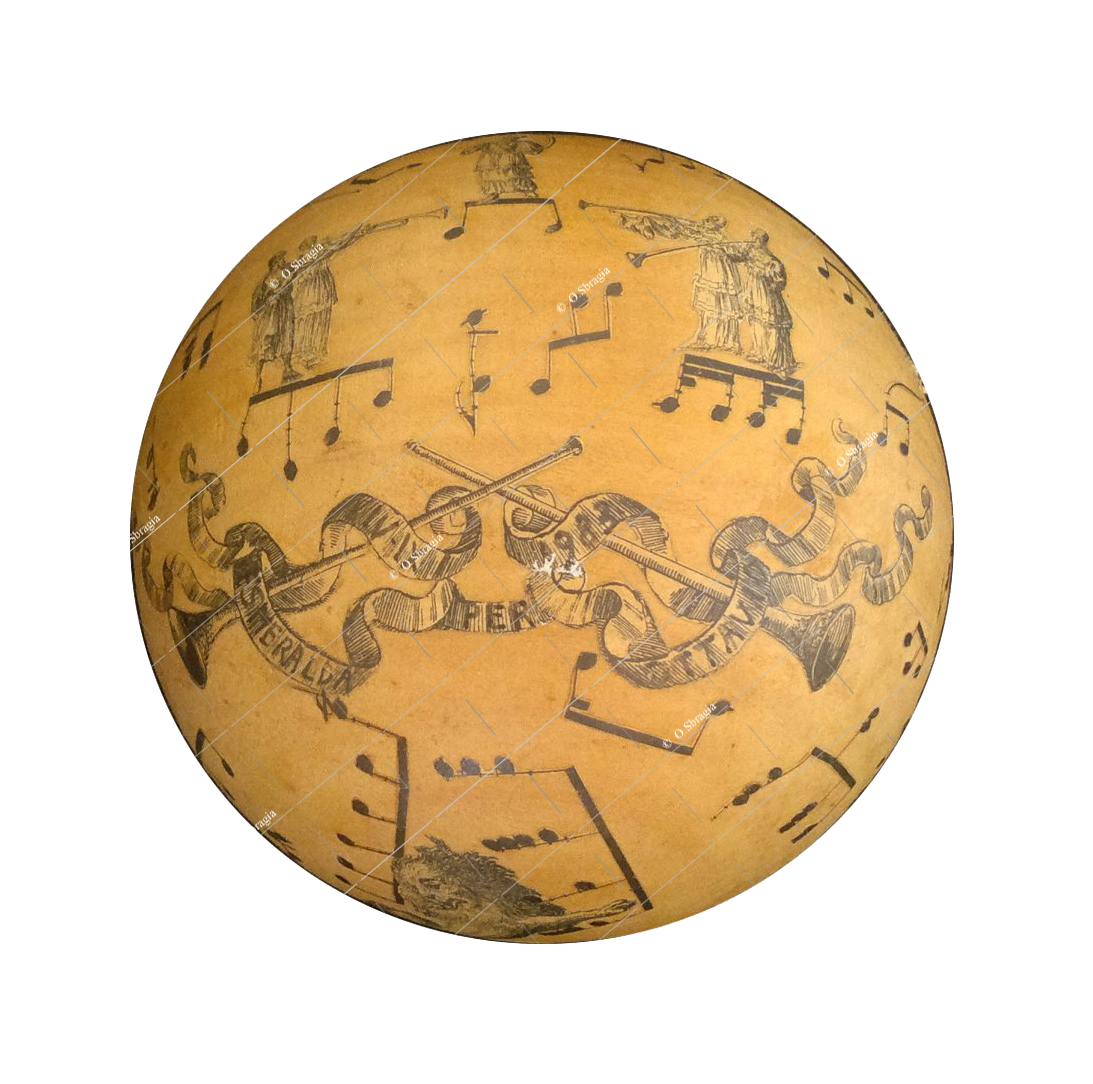
Sphere, 1983
(° 11cm) wood

Sphere, 1987
(° 18cm) wood

Sphere, 1986
(° 28cm) wood
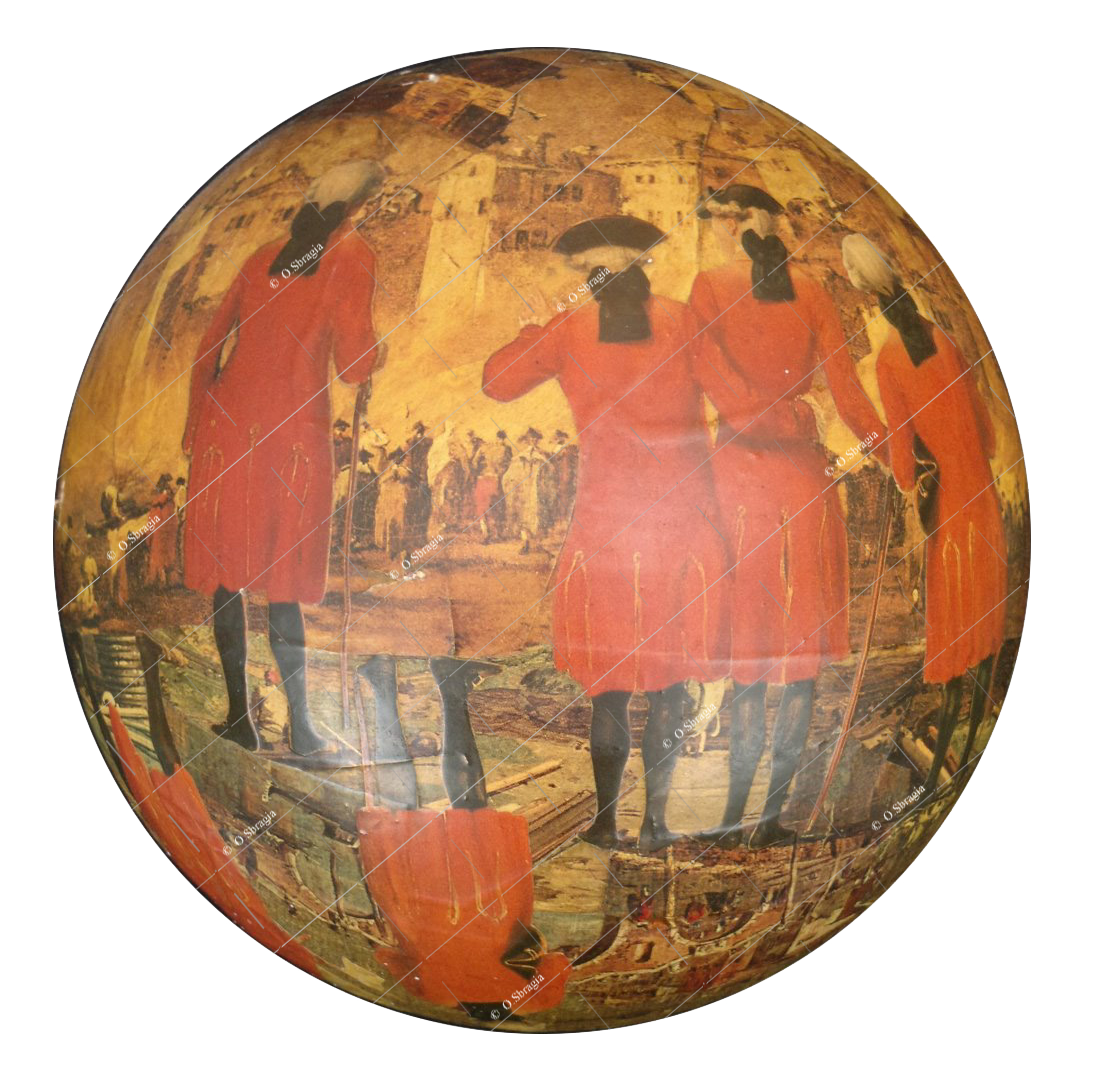
Sphere, no date
(° 18 cm) wood

Sphere, 1987
(° 24 cm) wood

Sphere, 1986
(° 25cm) wood

Sphere, 1972ca
(° 25cm) wood

Sphere, 1987
(° 22cm)

Sphere, no date
wood

Sphere, no date
wood

Sphere, no date
wood

Sphere, no date
wood

Pair of Spheres with Pinnacle,
wood

Sphere, 1988
(° 22cm) wood

Sphere, 1988
(° 18cm) wood

Sphere, 1975
(°23 cm) wood

Sphere, no date
(°11 cm)wood

Sphere, 1987
(° 20cm) wood
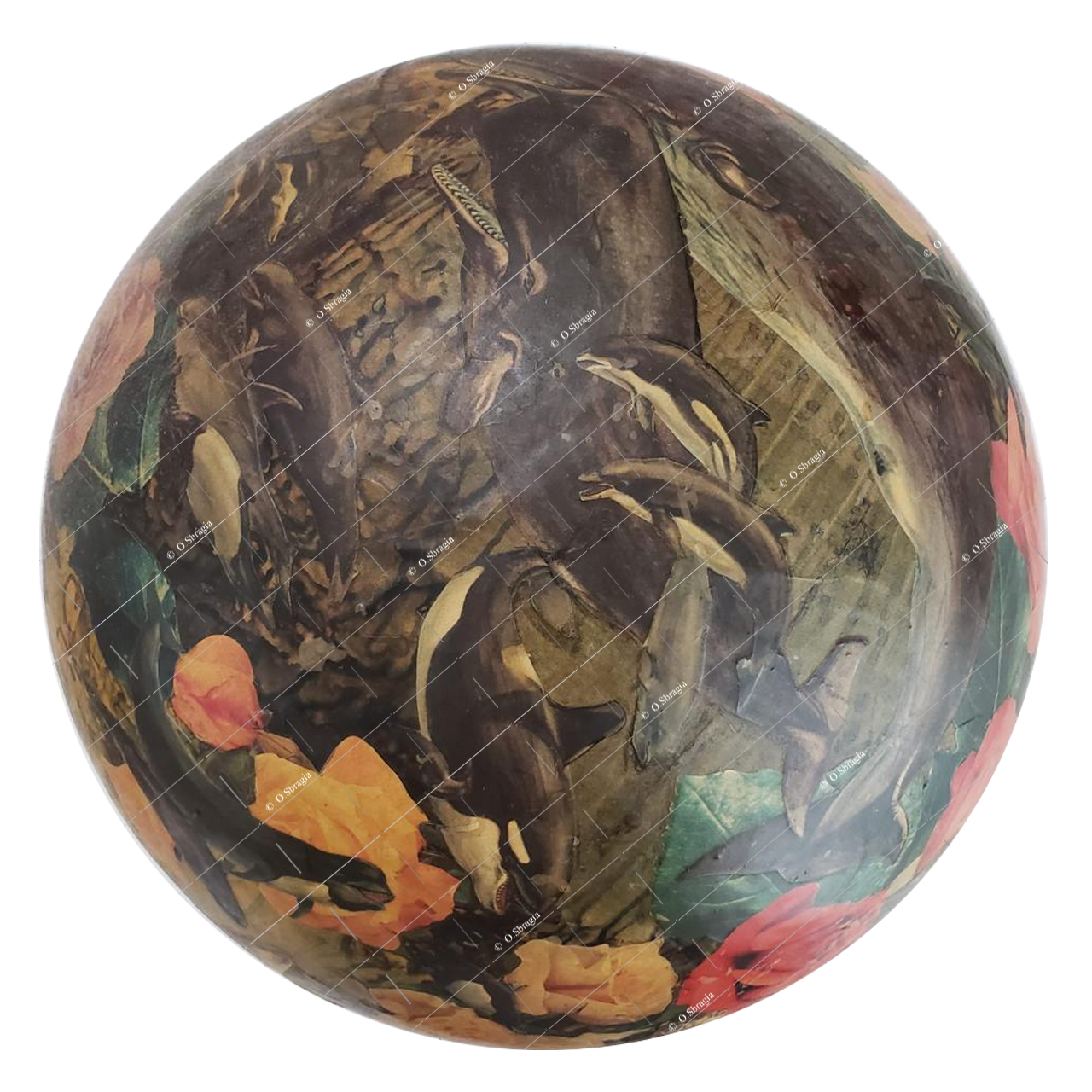
Sphere, 1983
(° 20cm) wood

Sphere, no date
wood

Sphere, no date
wood

Sphere, no date
(° 18cm) wood

Sphere, no date
(° 11cm) wood

Sphere, no date
(° 11cm) wood

Sphere, no date
(° 11cm) wood

Sphere, no date
(° 11cm) wood

Sphere, no date
wood
Click on the image to enlarge

Set of six table mats recto-verso, 1987
(44x27cm) cardboard

Set of six table mats recto-verso, 1984
(44x27cm) cardboard

Set of twelve table mats
(40x30cm) cardboard
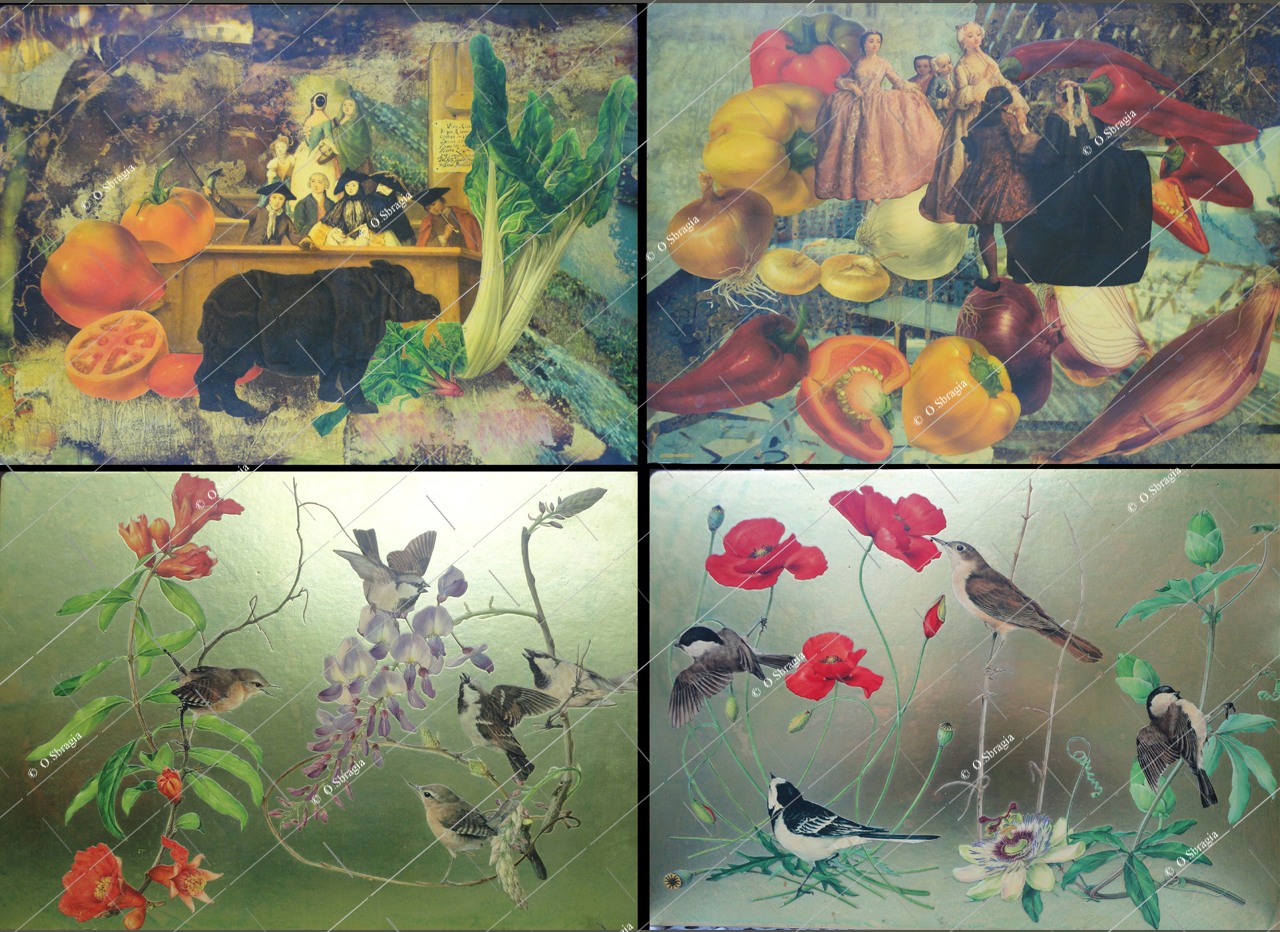
Set of two table mats recto-verso, 1986
(40x30cm) cardboard

Set of six table mats 1978ca
(44x27cm) cardboard

Set of eight table mats 1980
cardboard

Set of two table mats recto-verso, 1986
(40x30cm) cardboard

Set of eight table mats recto-verso, 1981
(44x27cm) cardboard
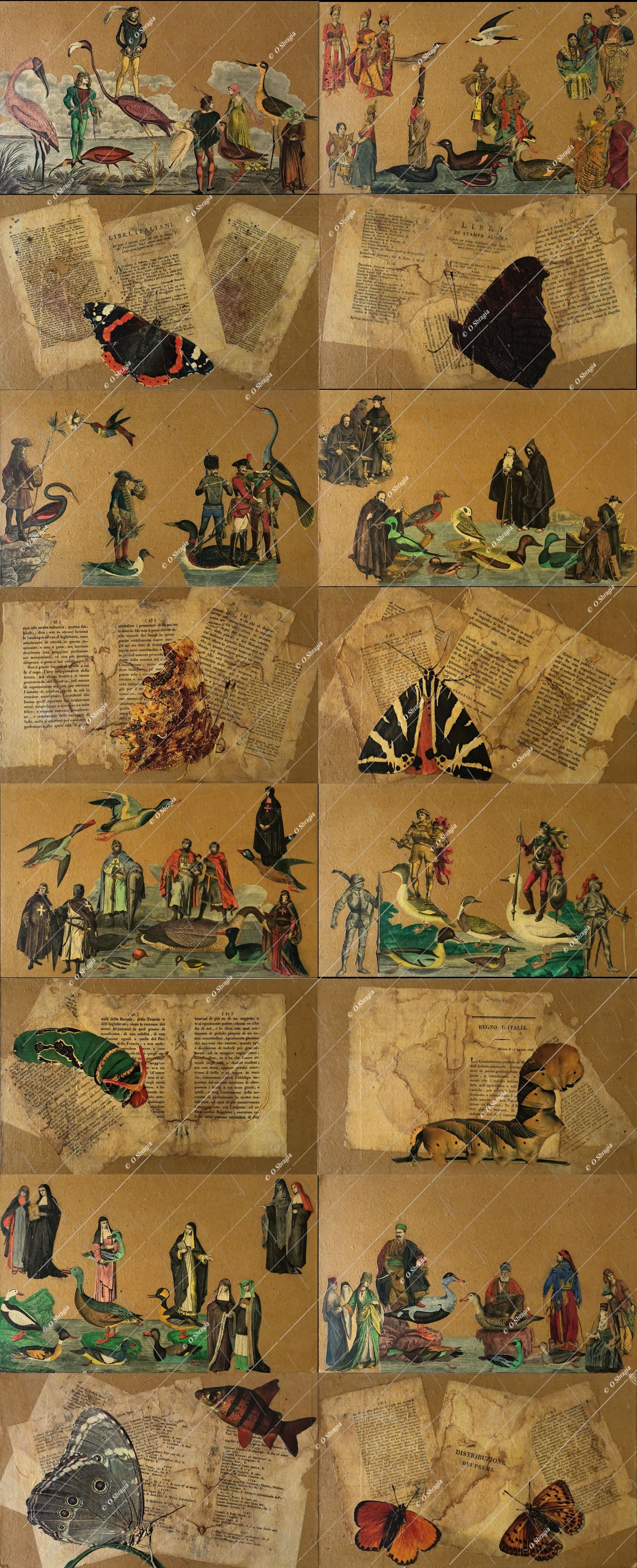
Set of eight table mats recto-verso, 1987
(44x27cm) cardboard

Set of eight table mats, 1980
(52x30cm) cardboard

Set of two table mats recto-verso, 1988
(40x30cm) cardboard

Set of eight table mats, no date
(42x29cm) cardboard
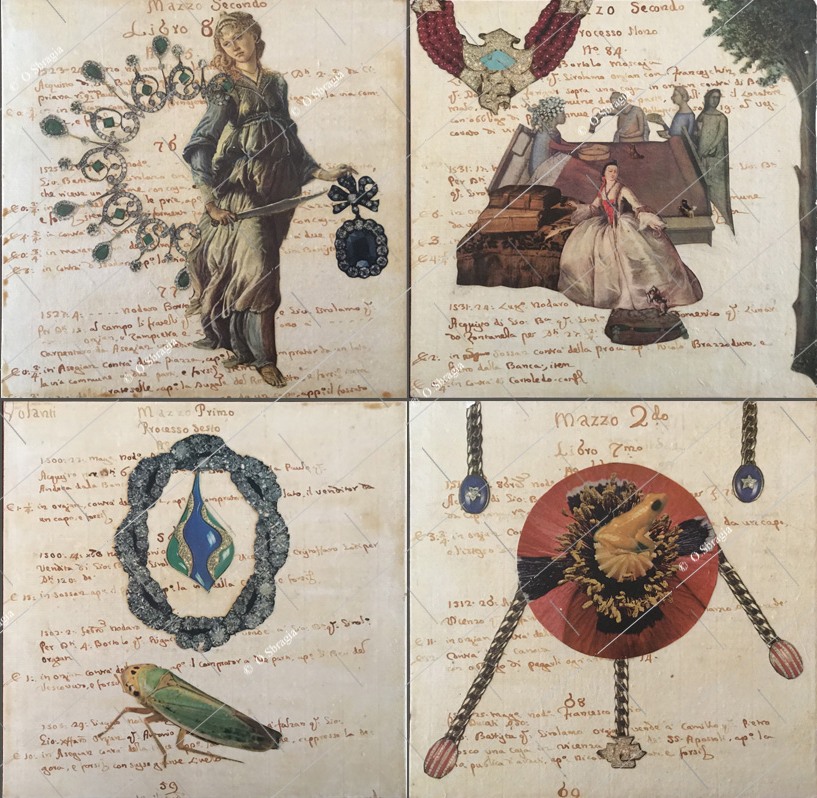
Set of four table mats, no date
(29x29cm) cardboard

Set of four table mats recto-verso, 1985
(52x30cm) cardboard

Set of two table mats recto-verso, 1986
(40x30cm) cardboard

Set of four table mats recto-verso, 1986
(44x27cm) cardboard
Click on the image to enlarge
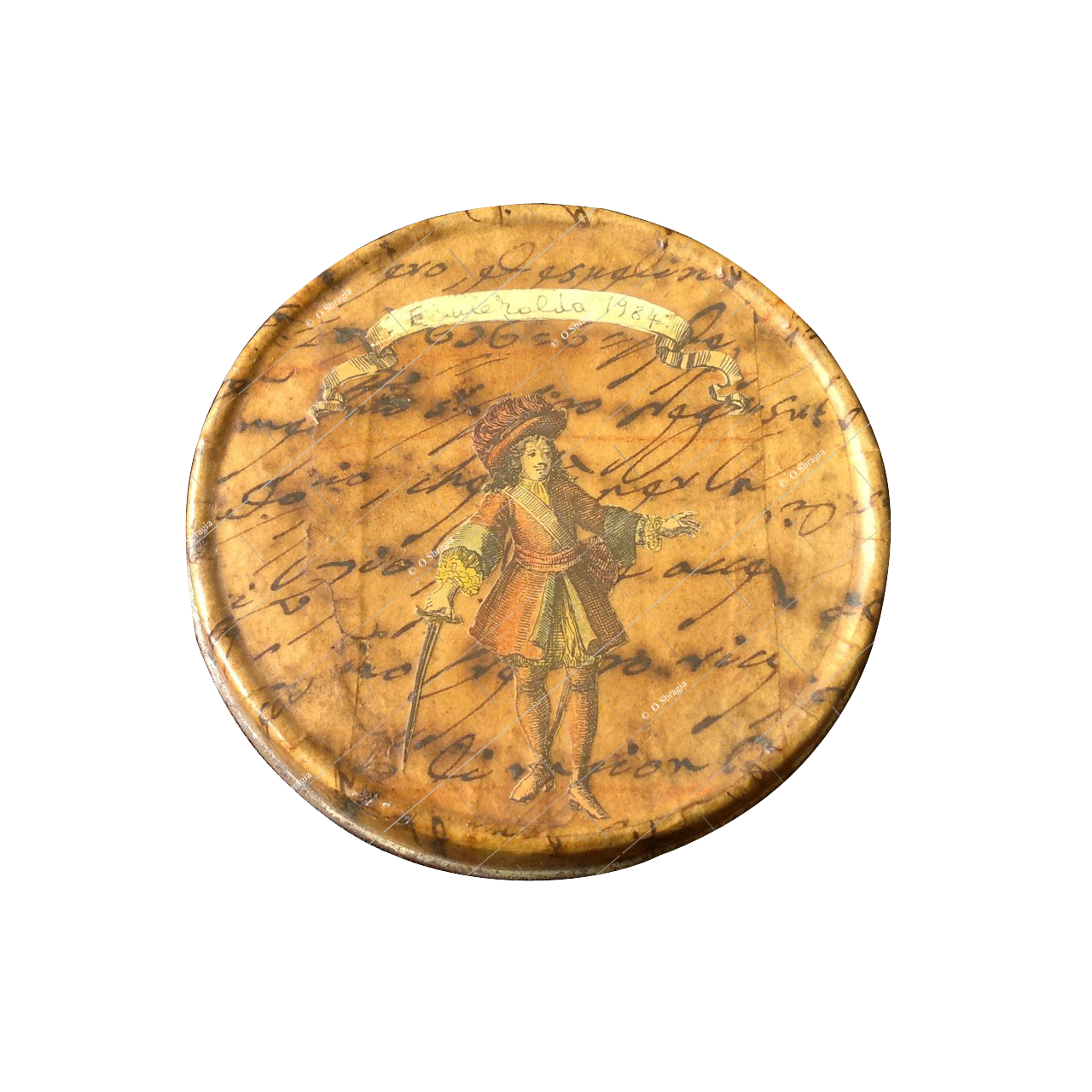
Jar Cover 1984
(° 10cm) metal

Vase, 1984
(10x26cm) ceramic
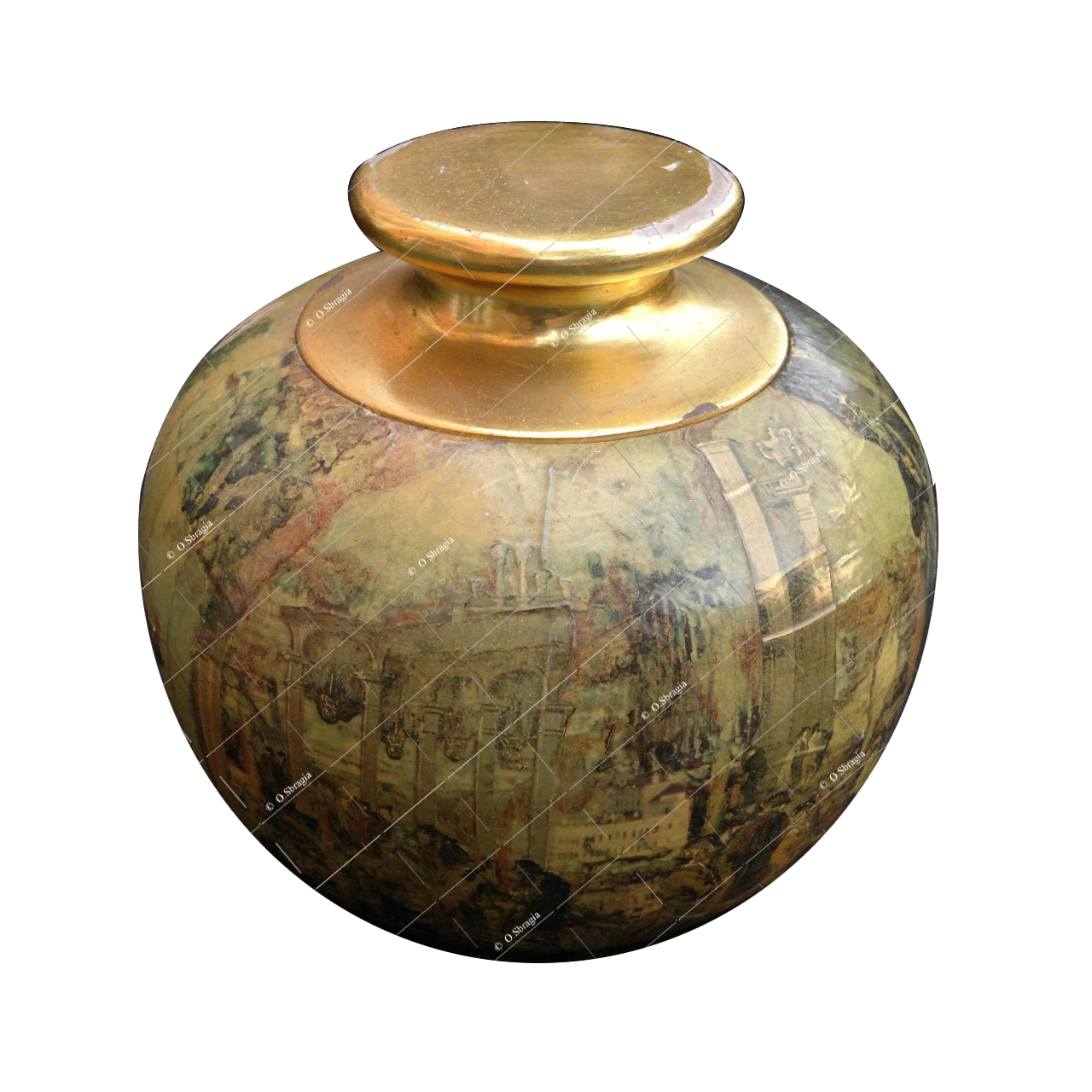
Container, 1987
(23x20cm) wood lacquered cover

Box for playing cards, no date
(11x8.5cm) cardboard

Pencil Box, 1978ca
(6x9.5 cm) plastic
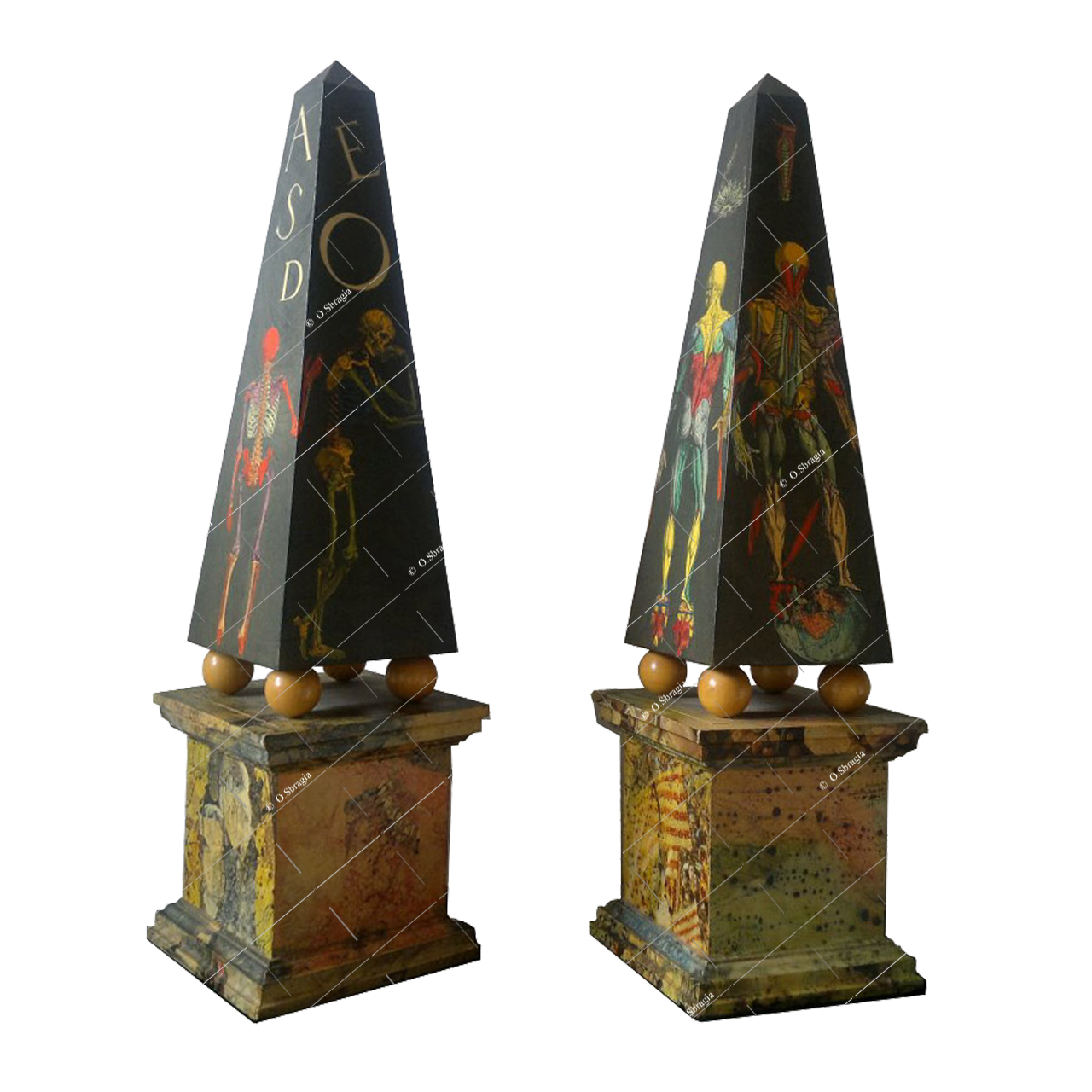
Obelisks, 1988
(16x50cm) wood

Series of 12 bottles, 1978ca
(5,5x12 cm) glass

Columns, 1988
(15x53cm) plaster

Firescreen, no date
wood

Bed Model, 1986ca
(21x8.5cm) wood

Tray, 1986
(70x85cm) metal

Tray, 1985
(47x39cm) metal

Tray, 1986
(42x34cm) metal

Tray, 1987
(37x29cm) metal

Frame, 1984
(46x40cm) wood

Frame, 1986
(46x40cm) wood

Frame, 1985
(46x40cm) wood

Tray, 1978ca
wood

Sole on gold background, 1983
leather and cardboard

Theatre Maquette, no date
(27x35 cm) paper

Horses, no date
wood

Toilet seat 1, no date
wood

Toilet seat 1 open, no date
wood

Toilet seat 2, 1957
wood

Toilet seat 2 open, 1957
wood

Toilet seat 3, no date
wood

Toilet seat 4, no date
wood
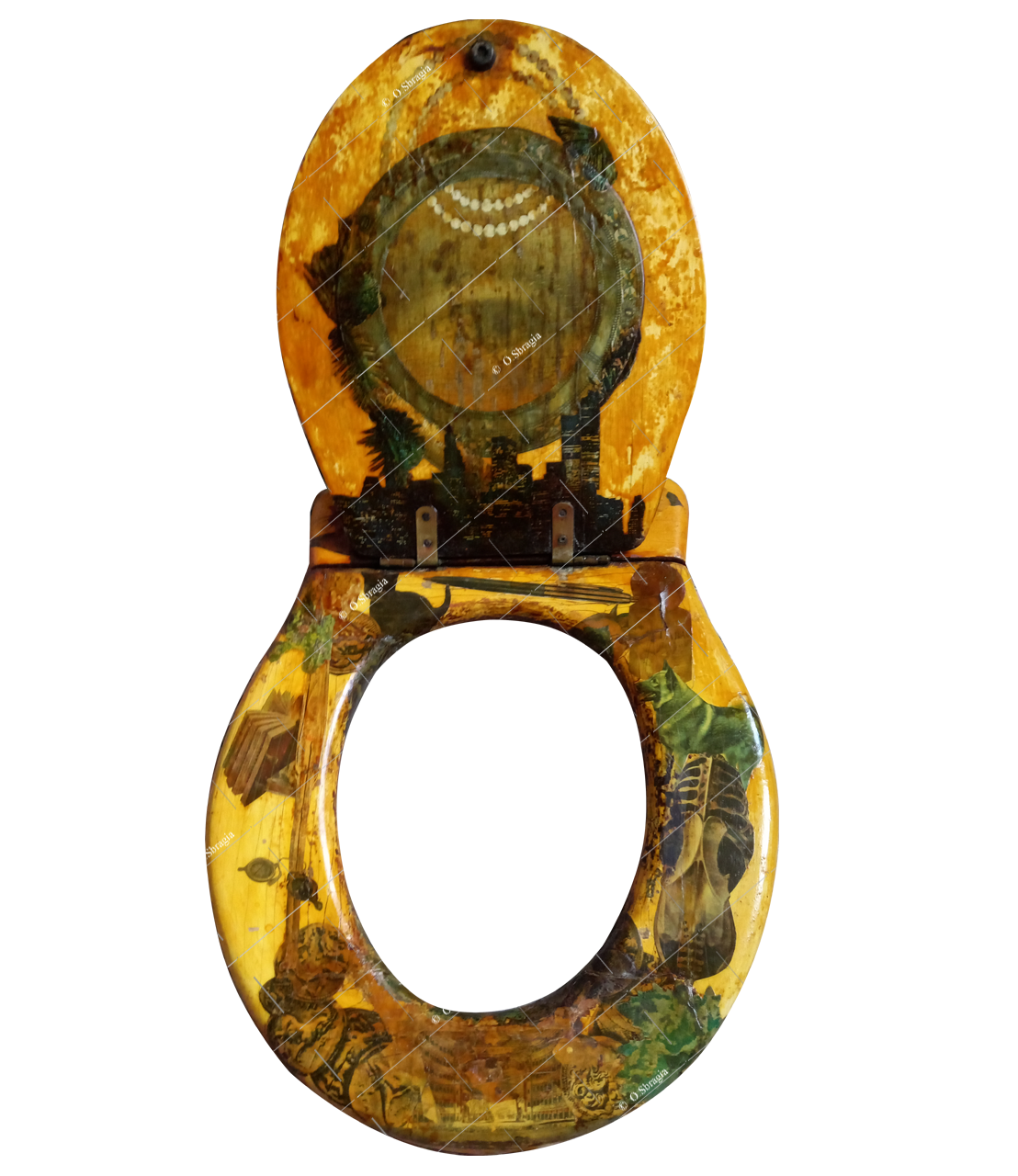
Toilet seat 4 open, no date
wood
Click on the image to enlarge

How to wear the mask, 1985
(32x35cm) cardboard

Cubic Mask, 1985
(32x35cm) cardboard

Cylindrical Mask, 1985
(28x60cm) cardboard

Cylindrical Mask, 1985
(28x60cm) cardboard
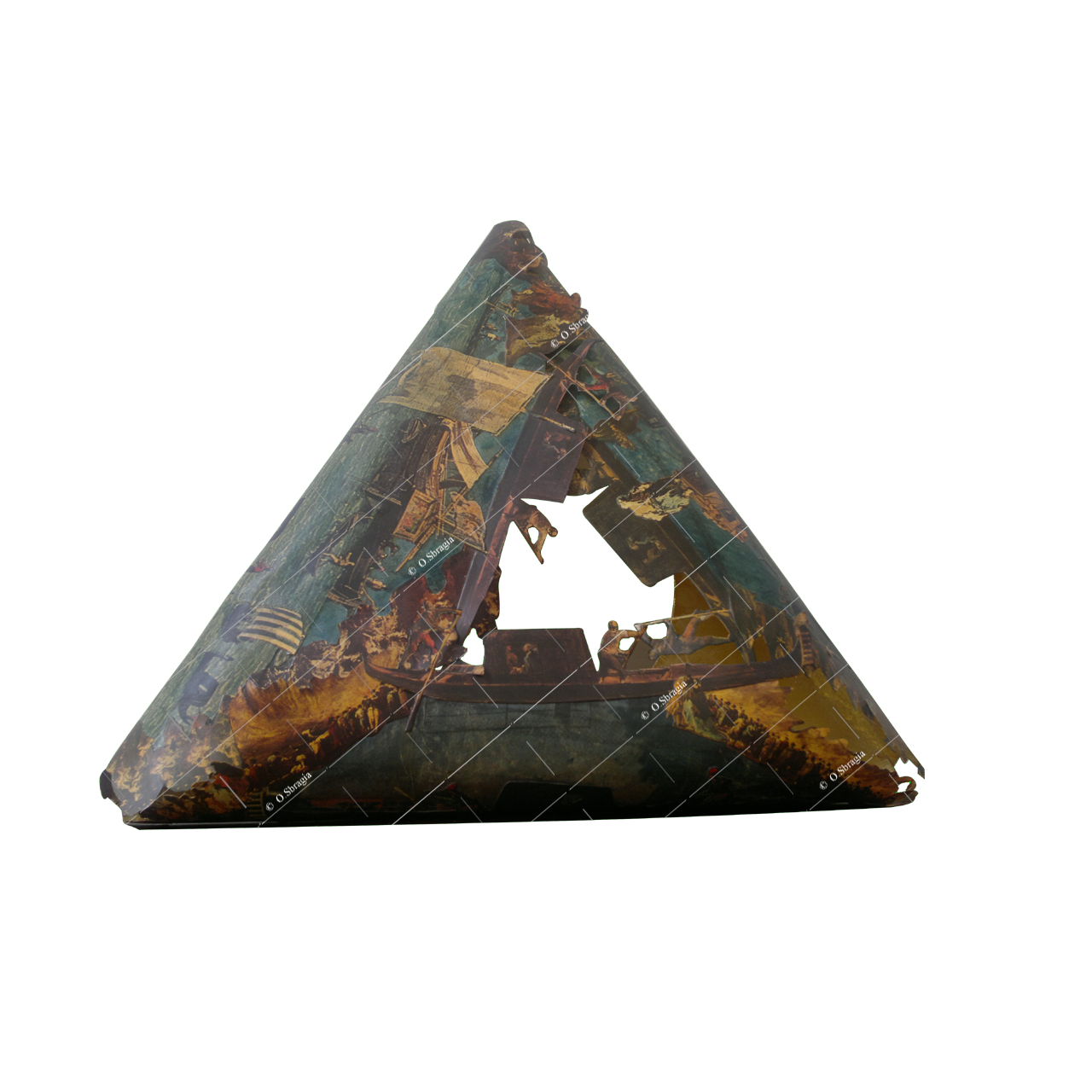
Tricorne, 1985
(37x37x7 cm) paper

Mask, 1985
(22x11 cm) polyester

Mask, 1985
(22x11 cm) polyester

Mask, 1985
(40x17 cm) paper

Mask, 1985
(45x23 cm) paper
Click on the image to enlarge

Chest with two drawers, no date
(47x24x42cm) wood

Venetian chest, 1984
(123x45x85,5cm) wood

Screen gold, 1984ca
(Three panels 200x70cm) wood
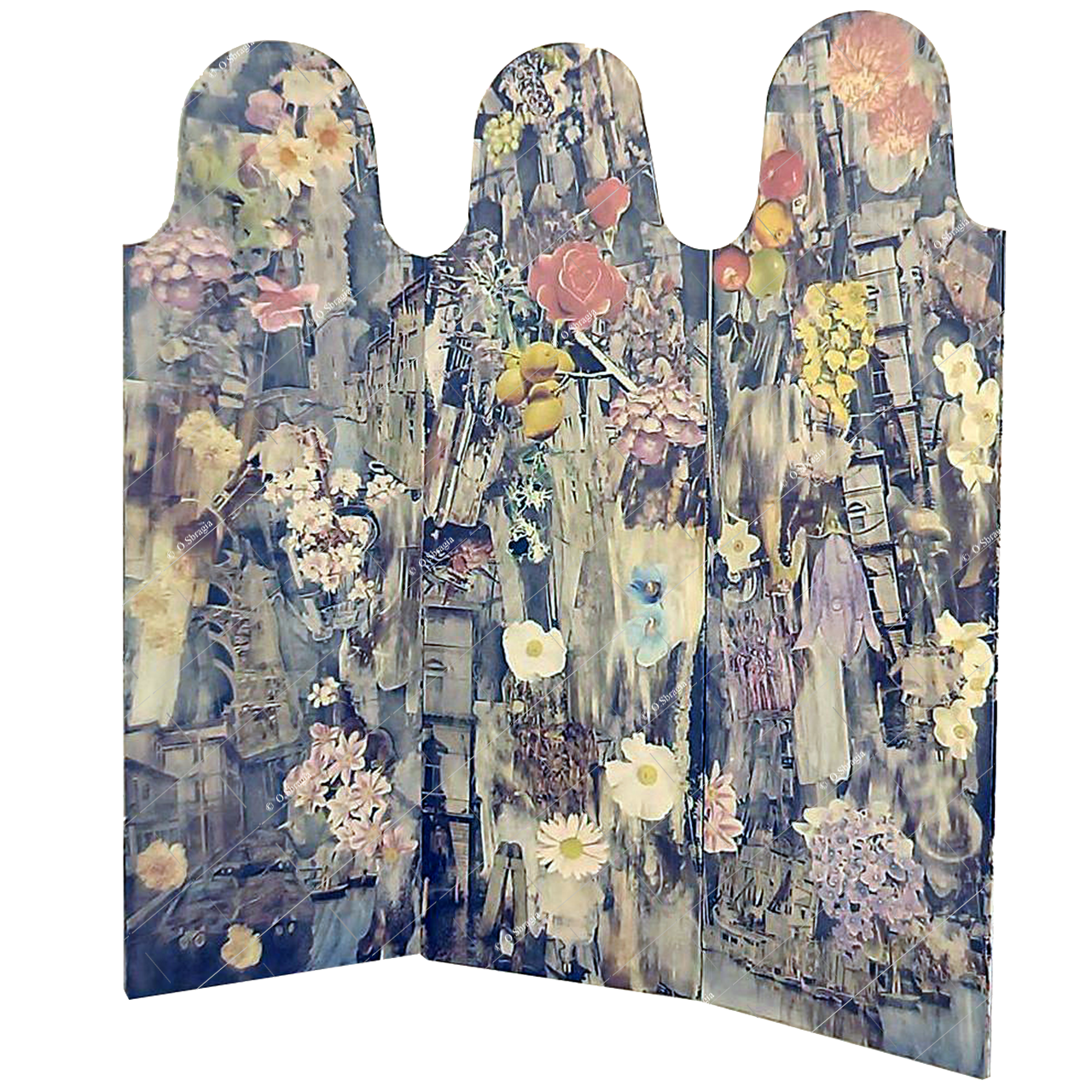
Screen, 1978ca
(Three panels 200x70cm) wood

Screen, 1984ca
wood

Screen, 1985
(Three panels 80x190cm) wood

Bed Paris, 1970ca
metal

Bed, no date
wood

Bed, no date
wood

Bed, no date
wood
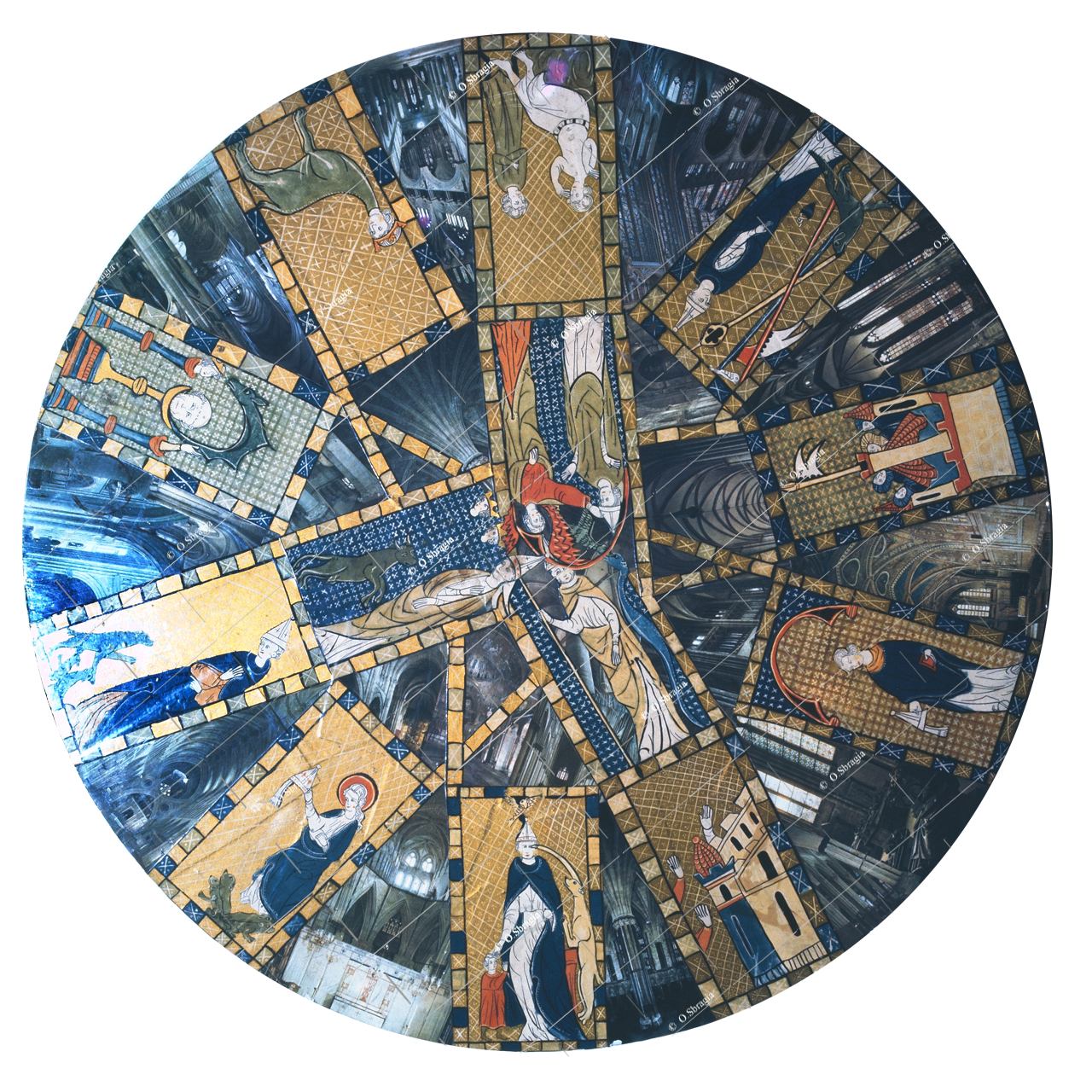
Byzantine table, 1970ca
(° 140cm) wood

Table for an architect, 1979
(77x77cm) wood
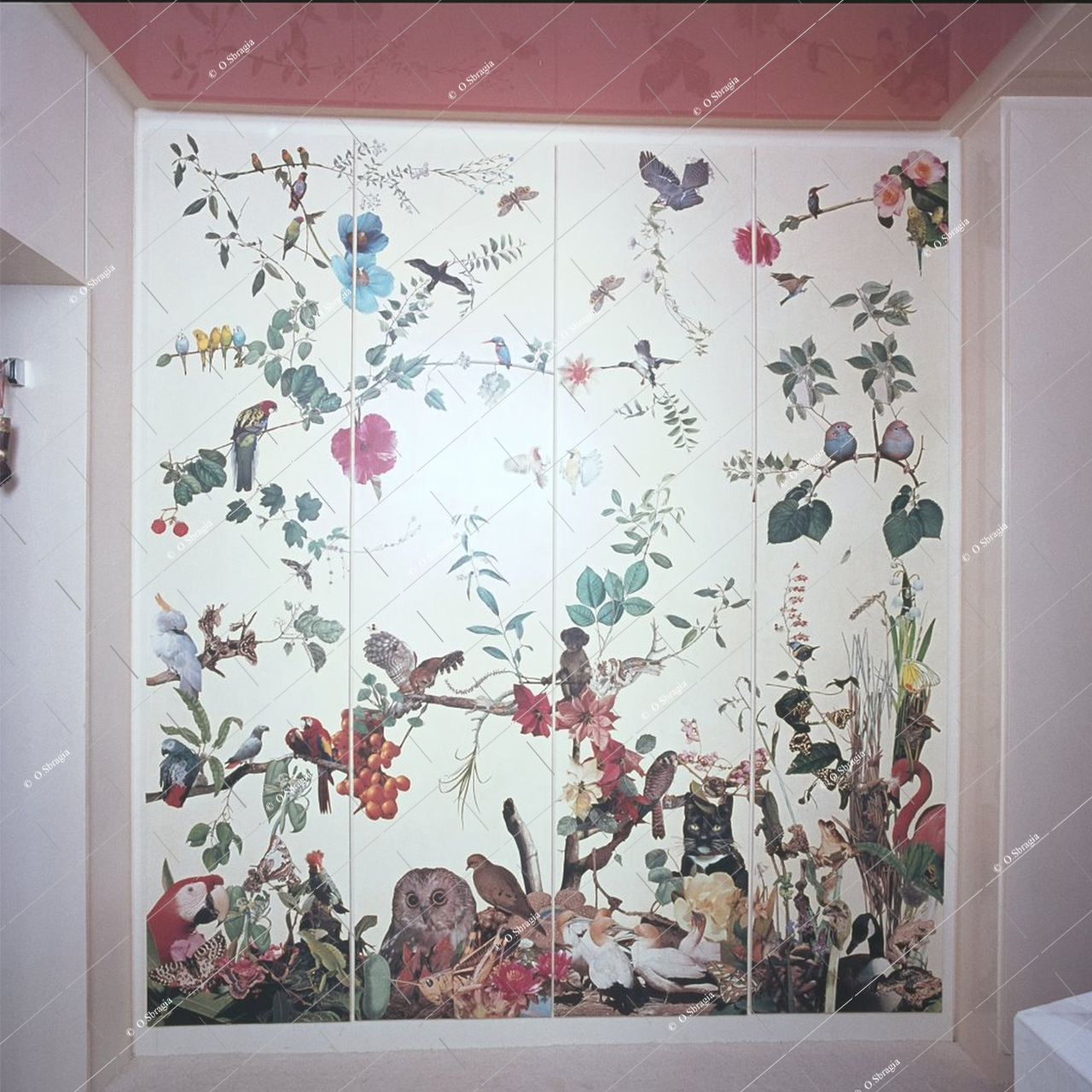
Wardrobe, 1977
(Four doors 219x24cm) wood
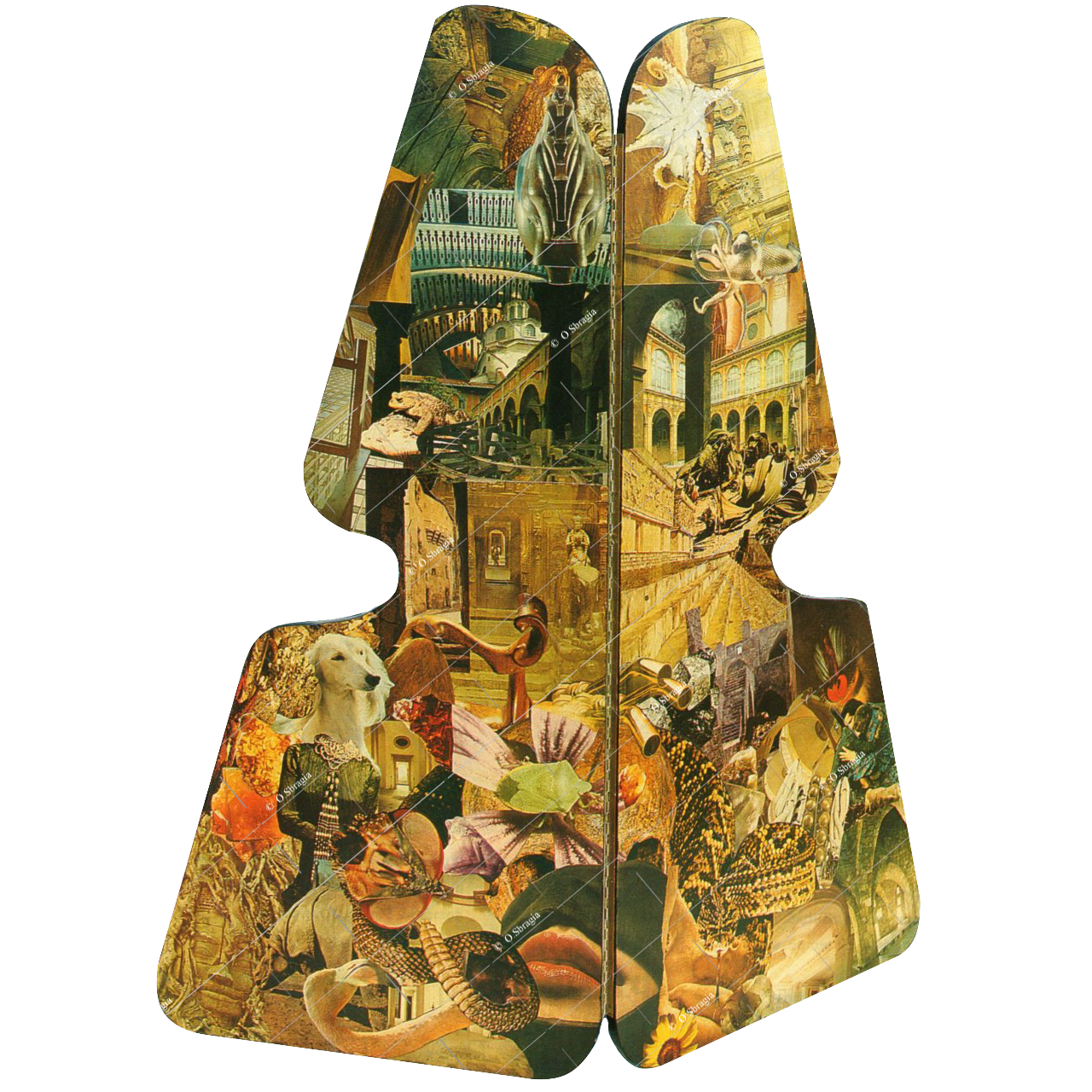
Screen/chairback, 1973ca
(136x140cm) wood

Screen/chairback, 1973
(100x100cm) wood

Cover for piano/desk
(101x41cm)cardboard

Model for corner cabinet (project B.Ferro), 1988
(h30cm) cardboard
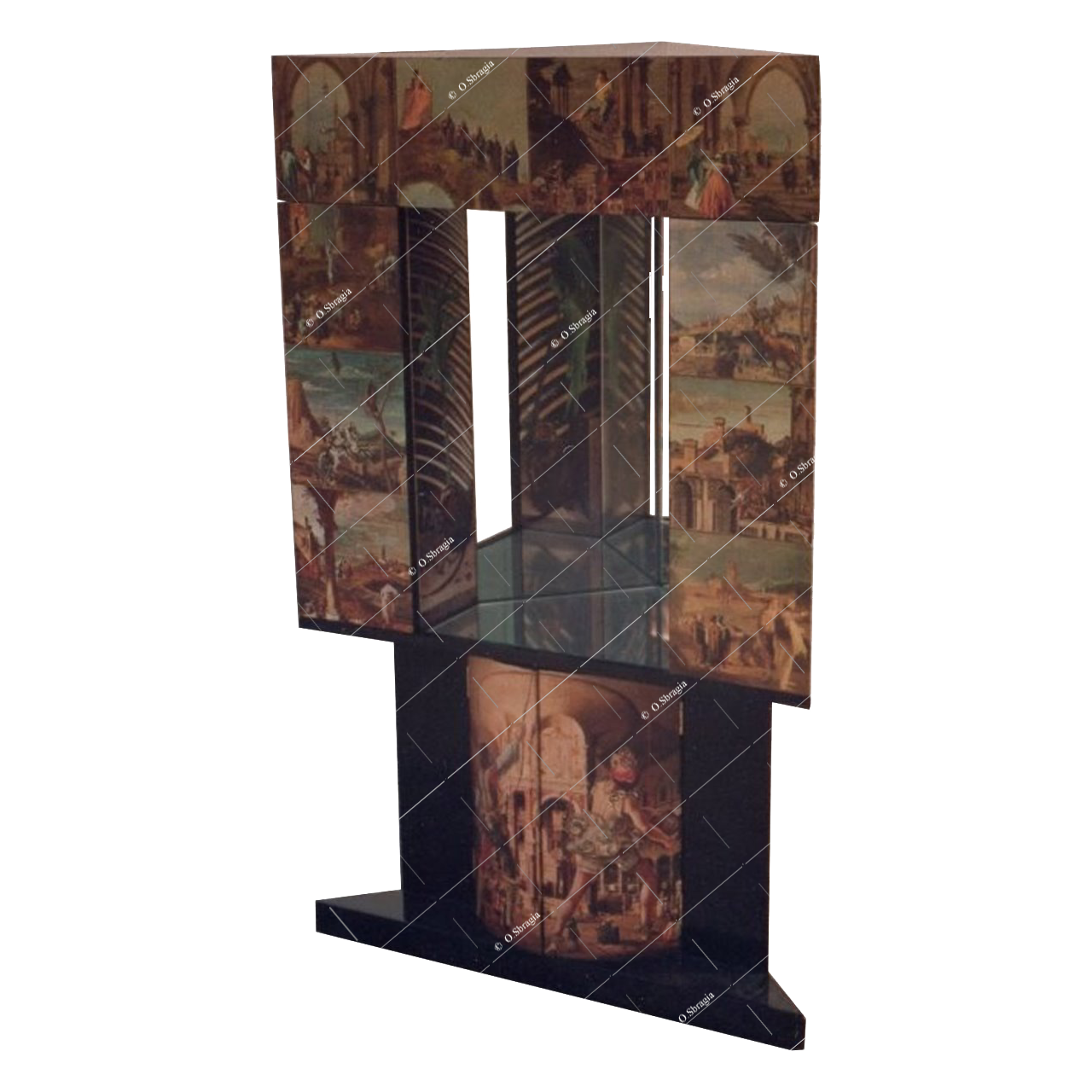
Model for corner cabinet (project B.Ferro), 1988
(h70cm) wood

Model for chair (project B.Ferro), 1988
(45x140 cm) iron, wood
Click on the image to enlarge



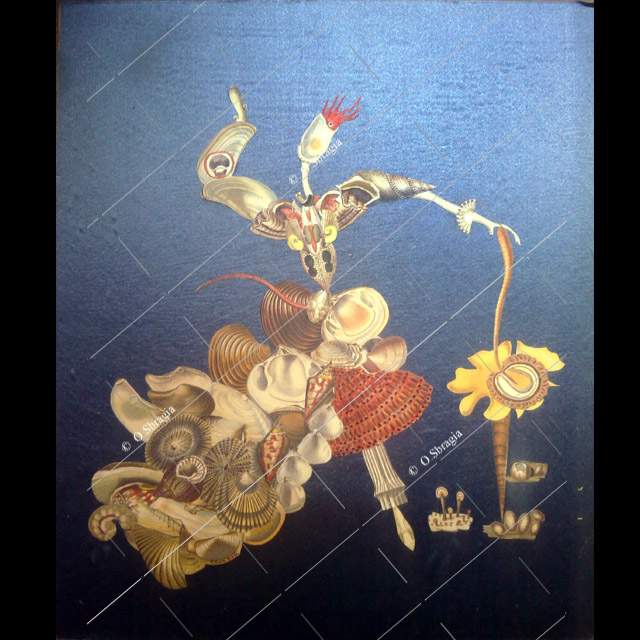


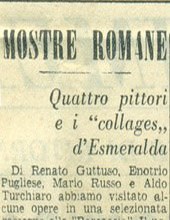



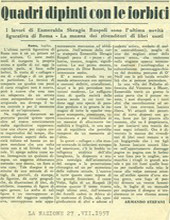


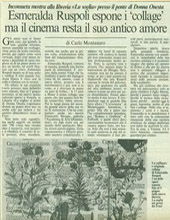
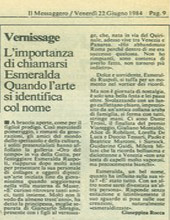



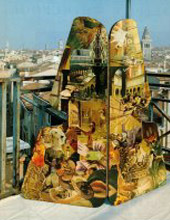



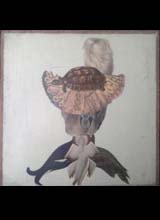
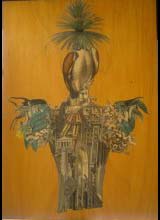





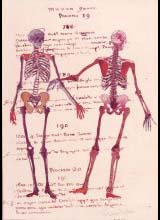










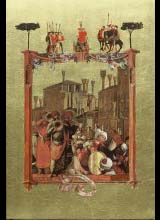







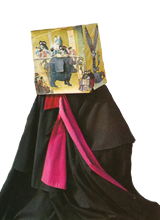











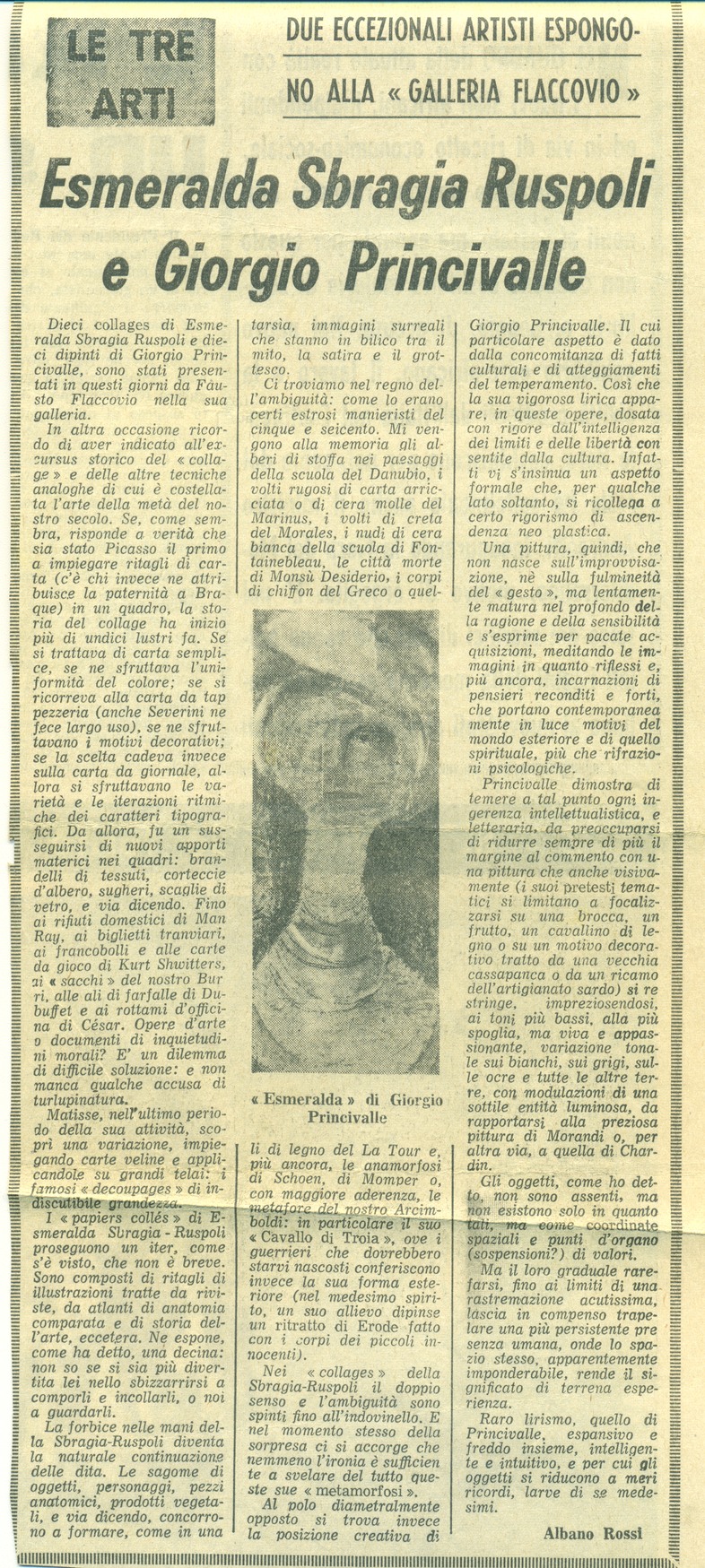





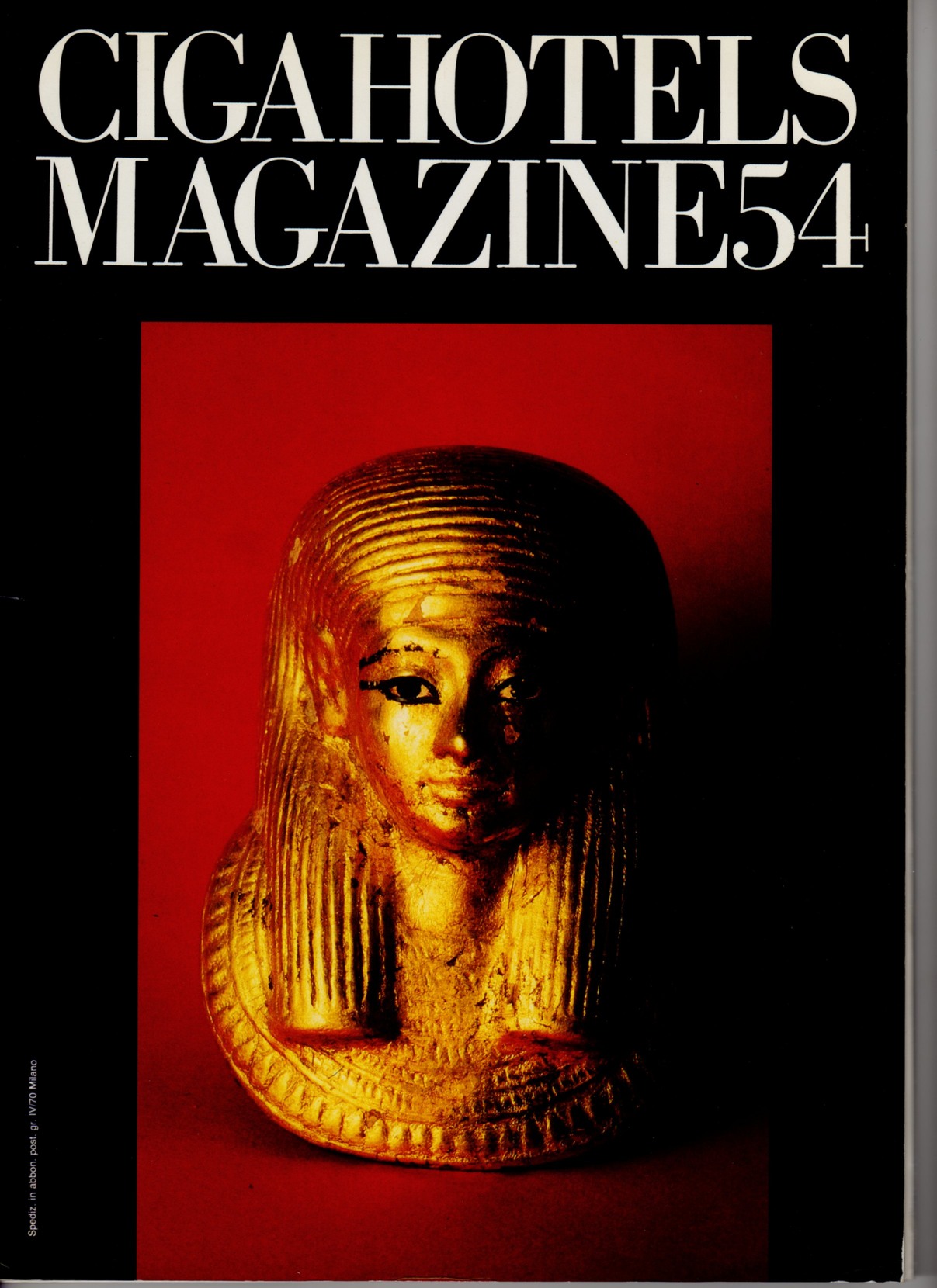









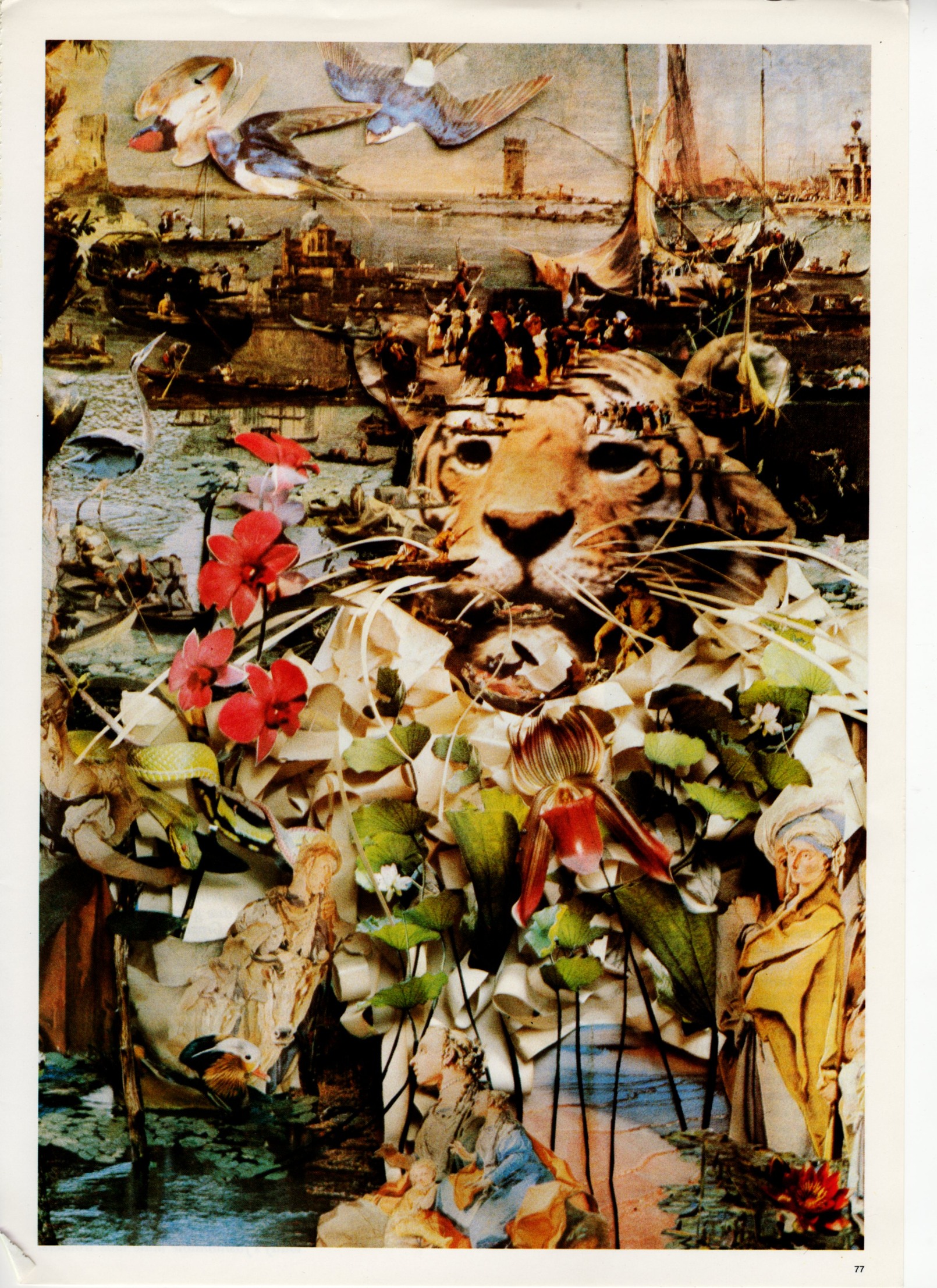

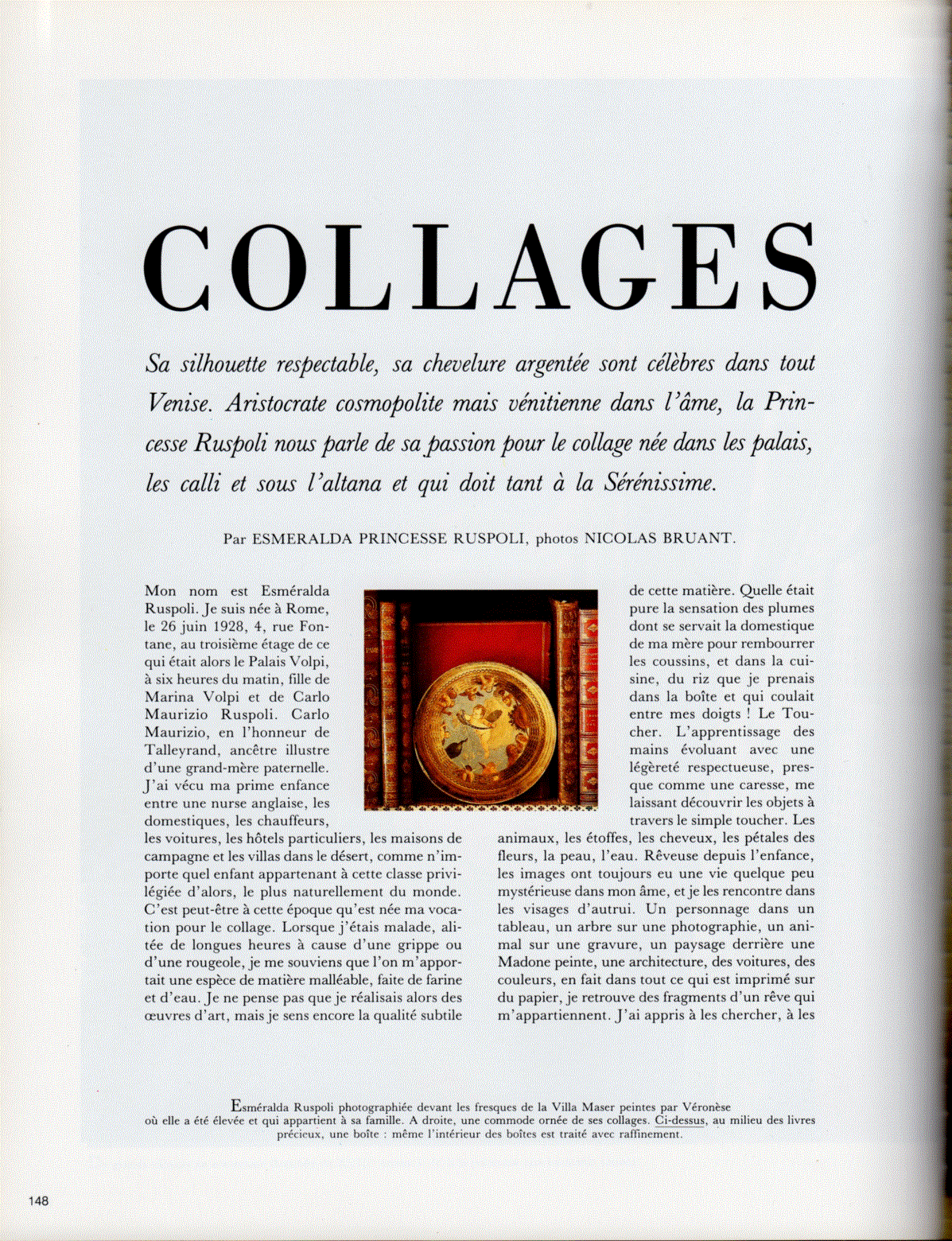
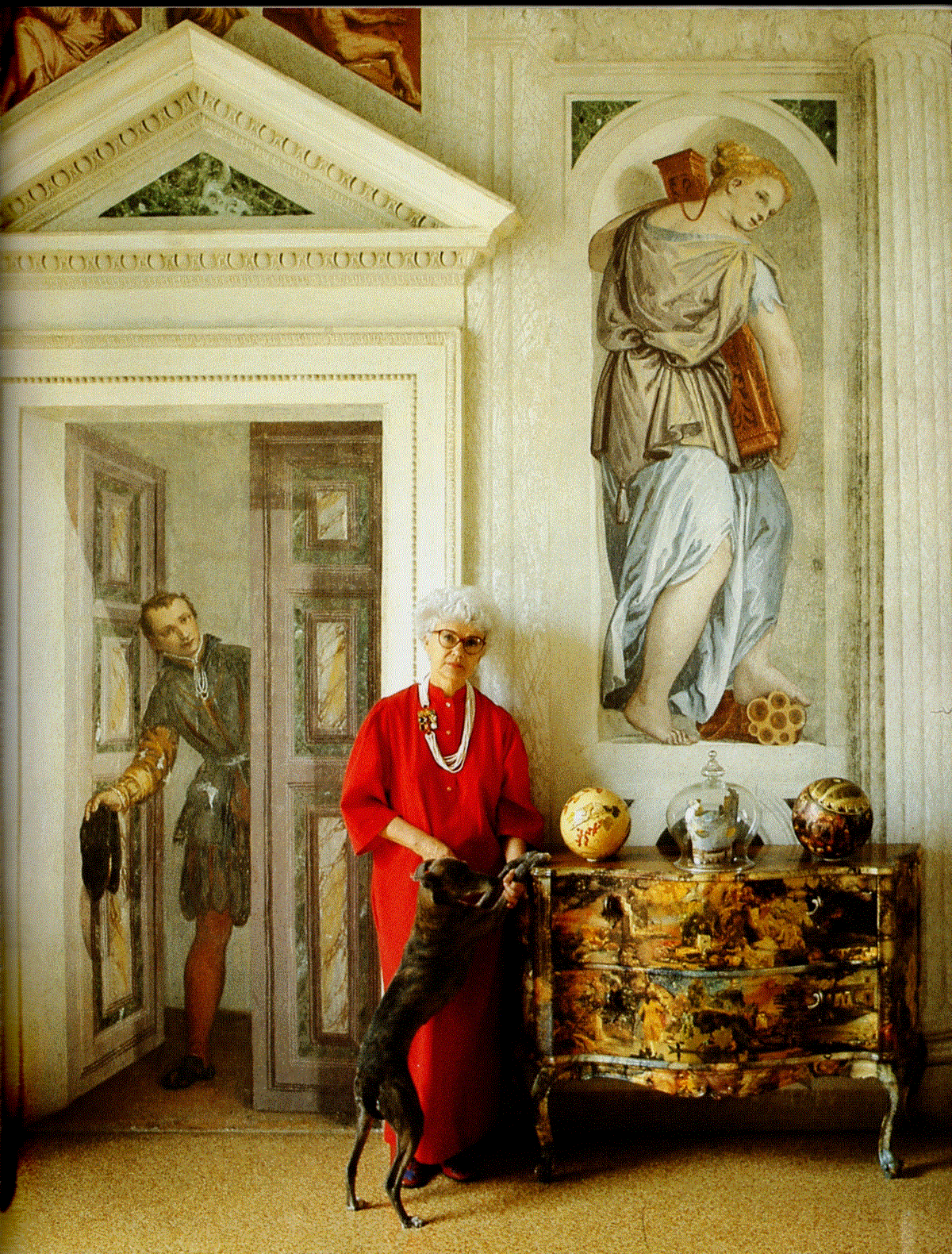




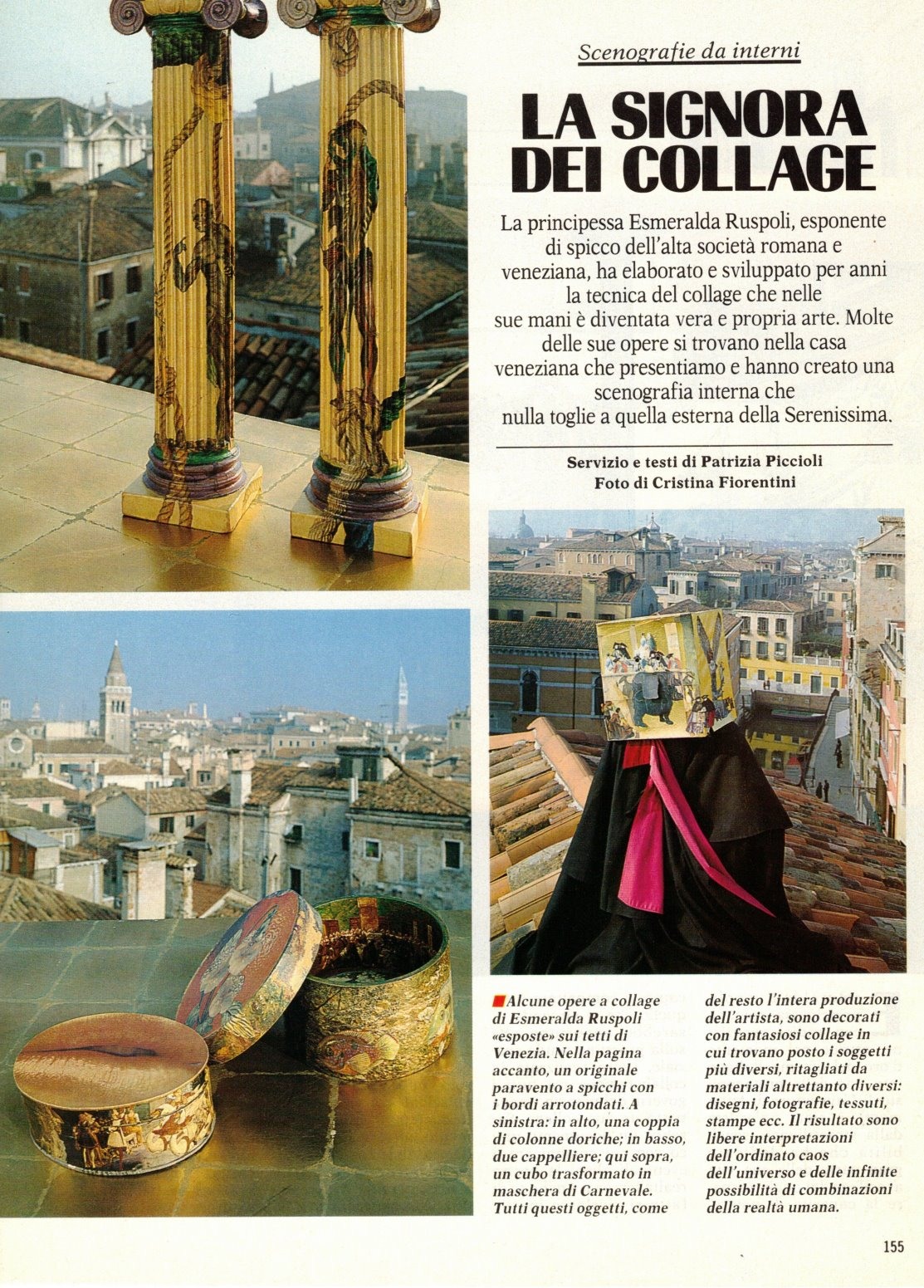

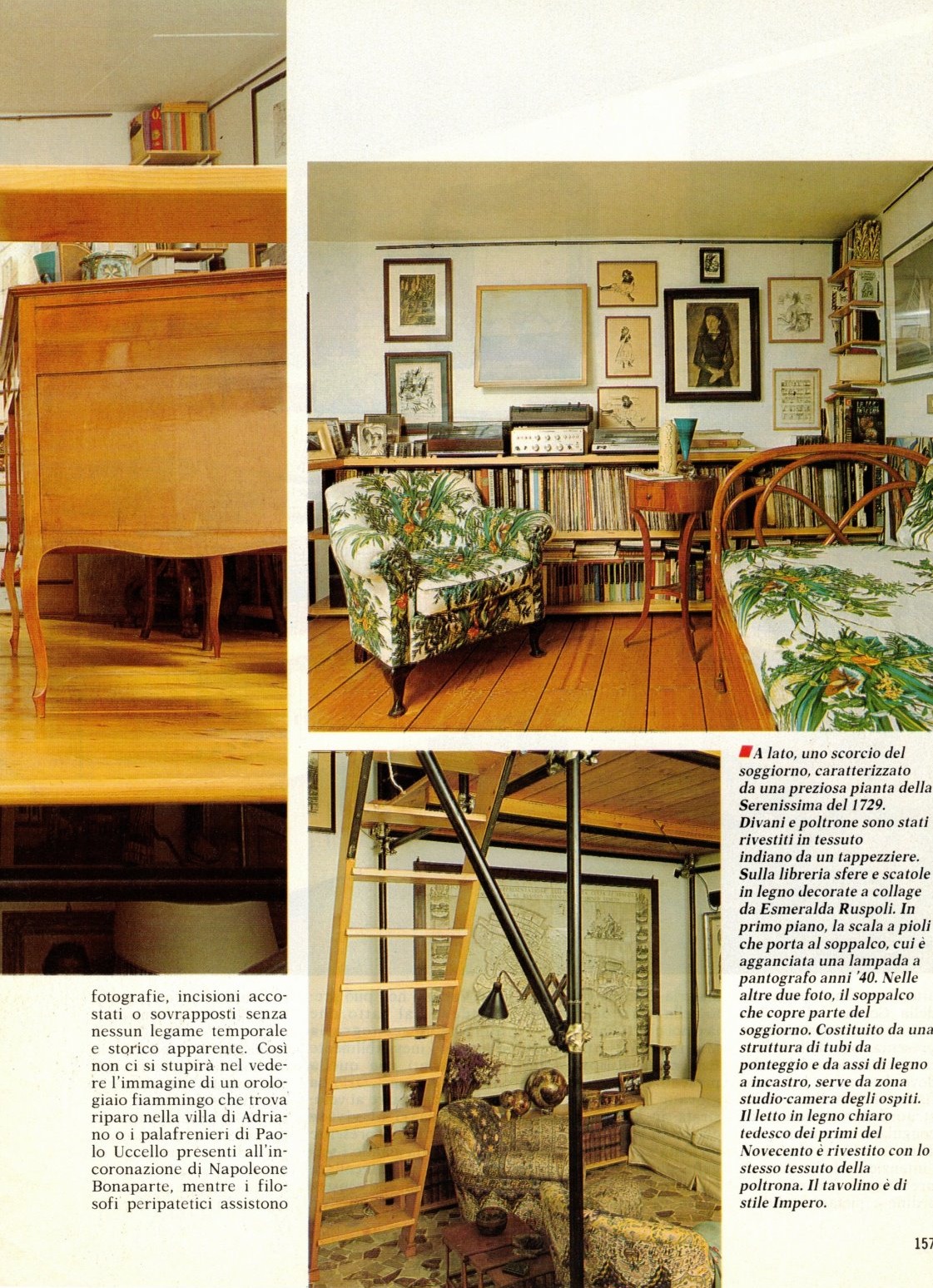




















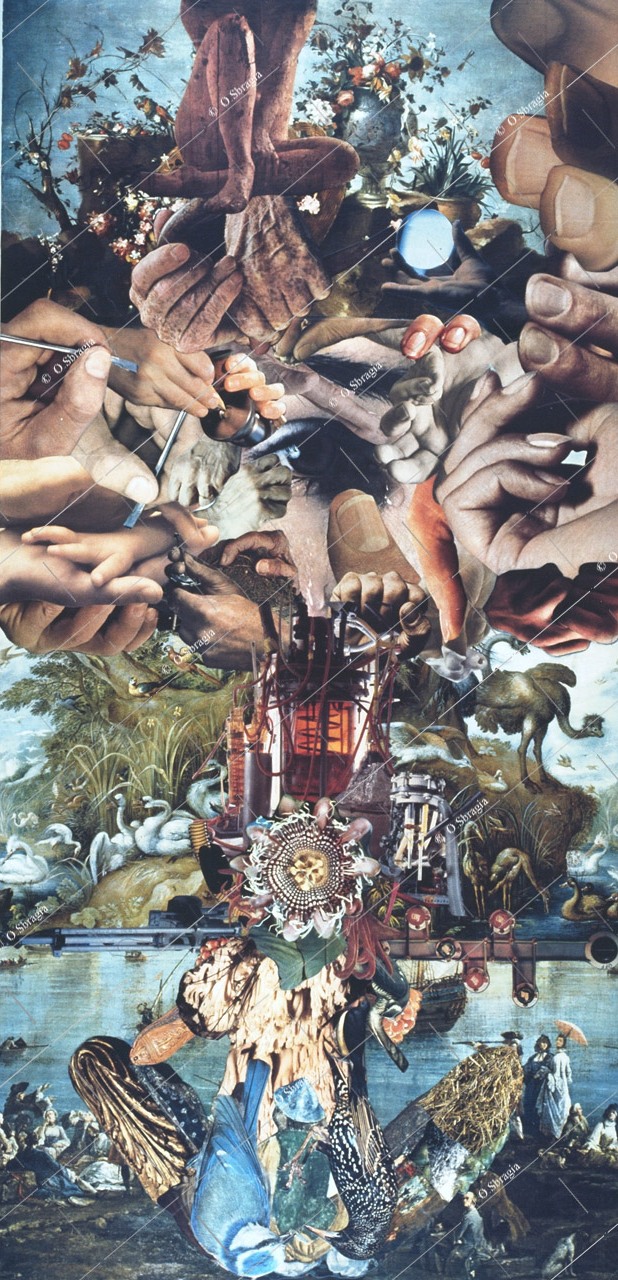





















Contact me
Contact me
E-mail
Not active at the moment
Unfortunately, I do not know the current location of many of the works present on this site and I do not have any photographic record of many others.
I should be most appreciative to hear from anyone who knows of such works by Esmeralda.
Thank You
Thank You